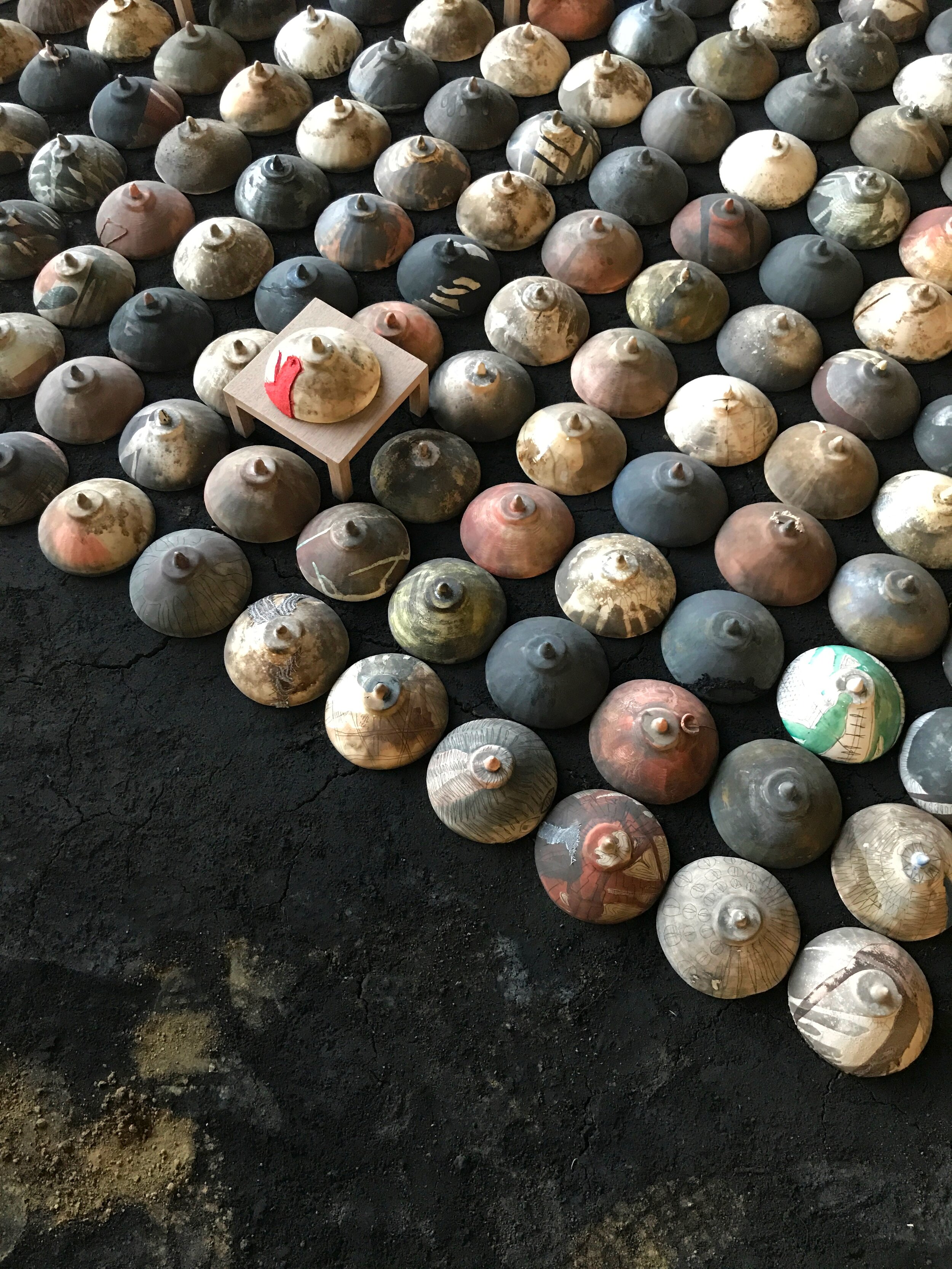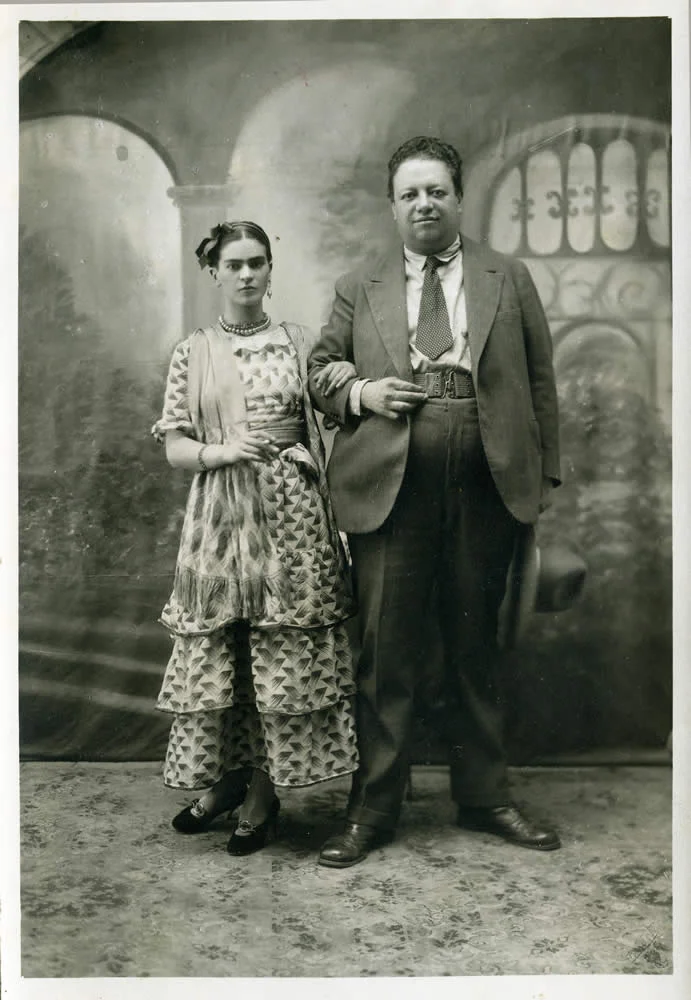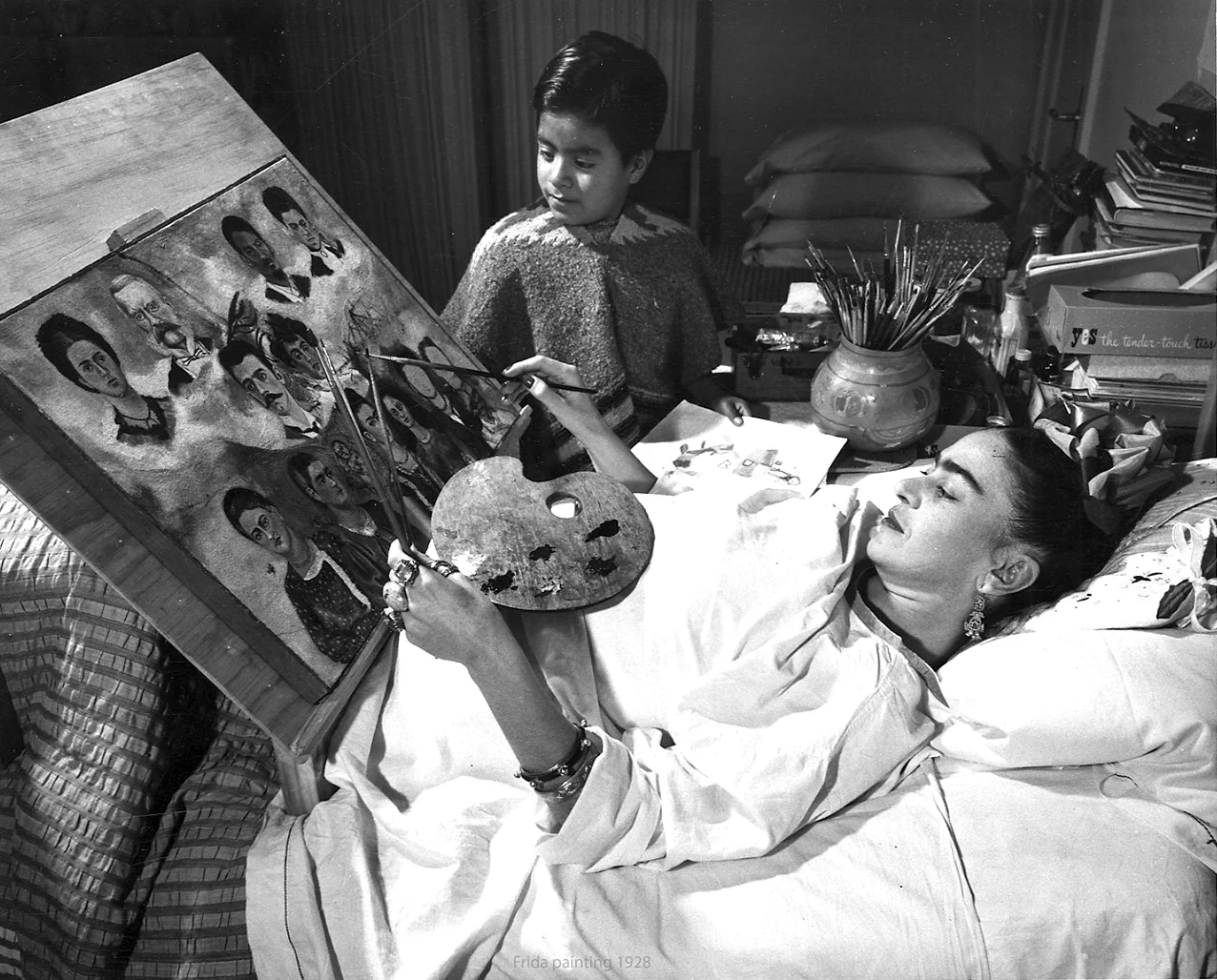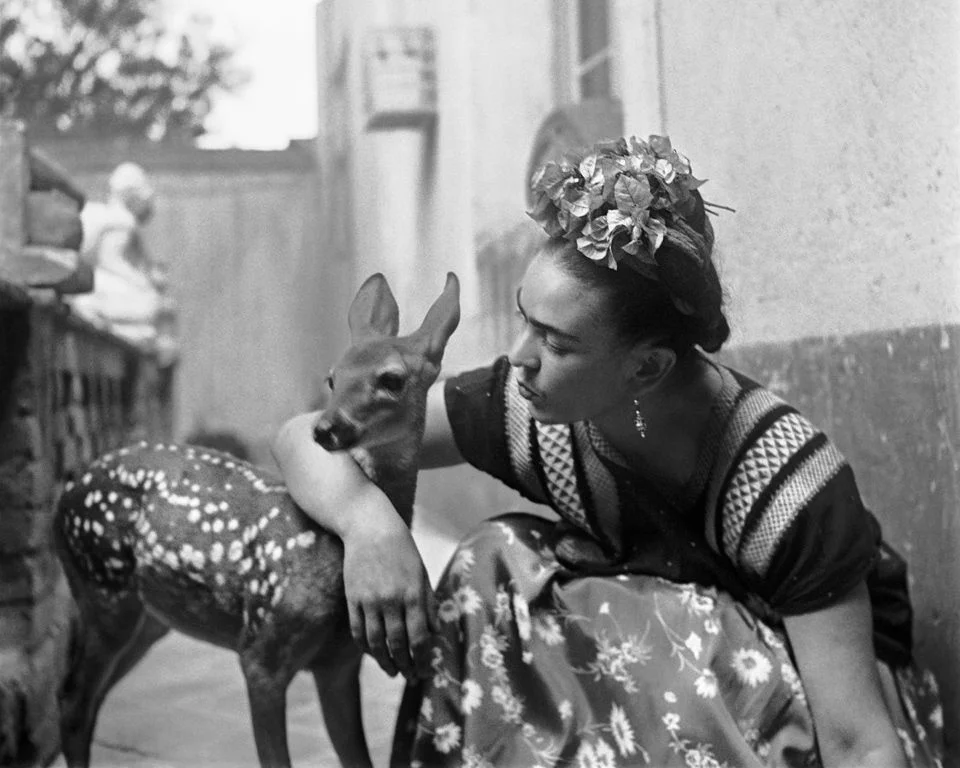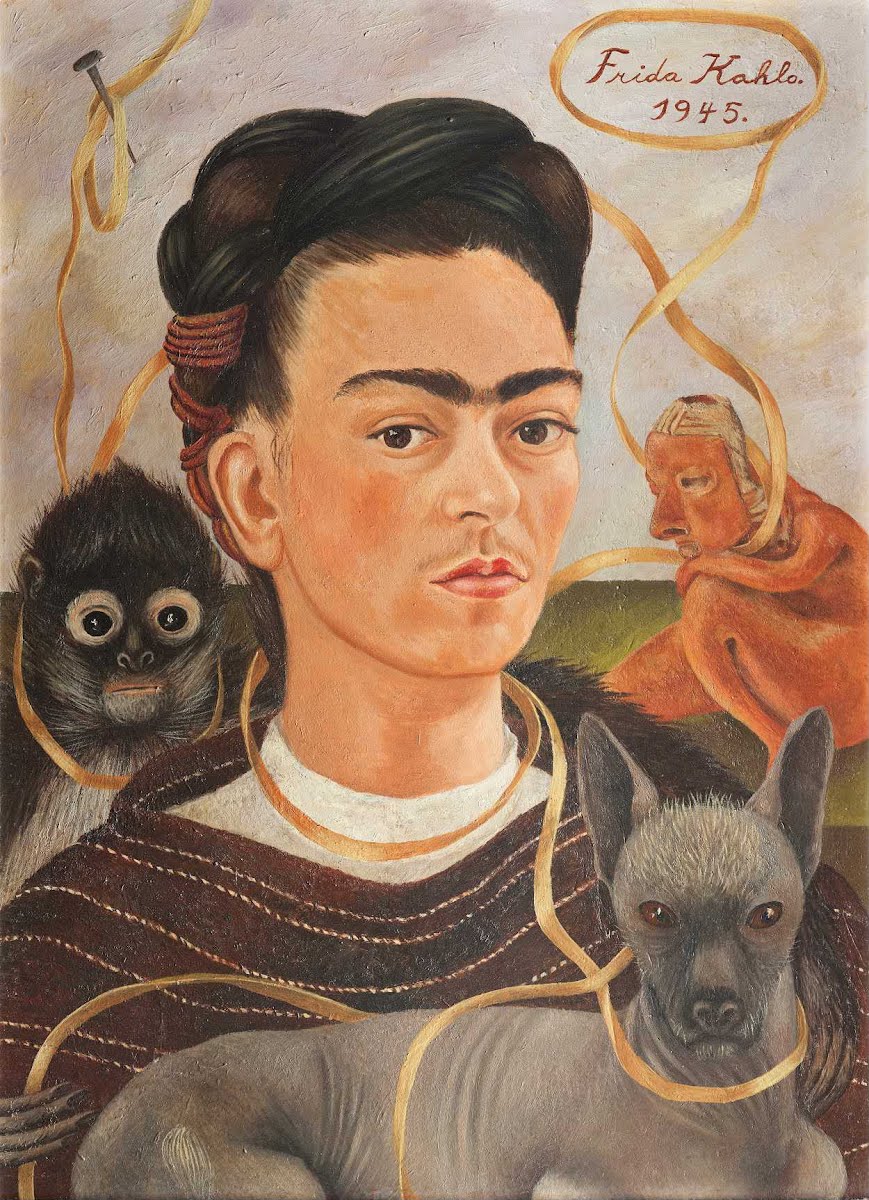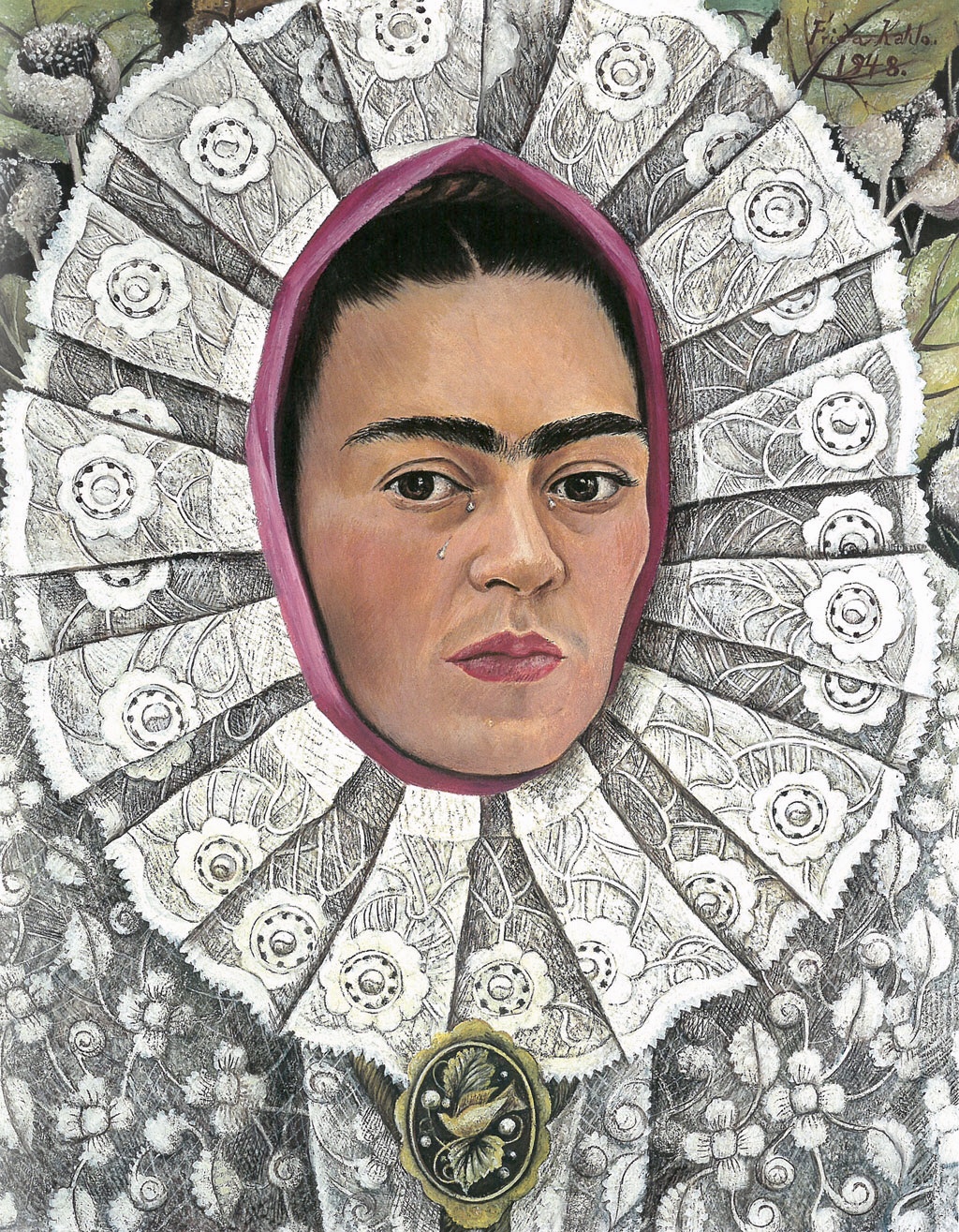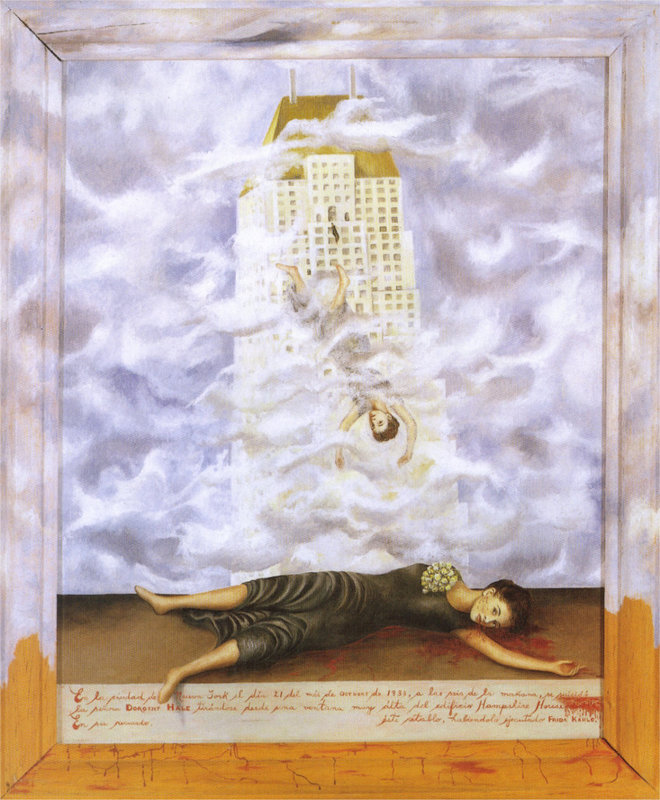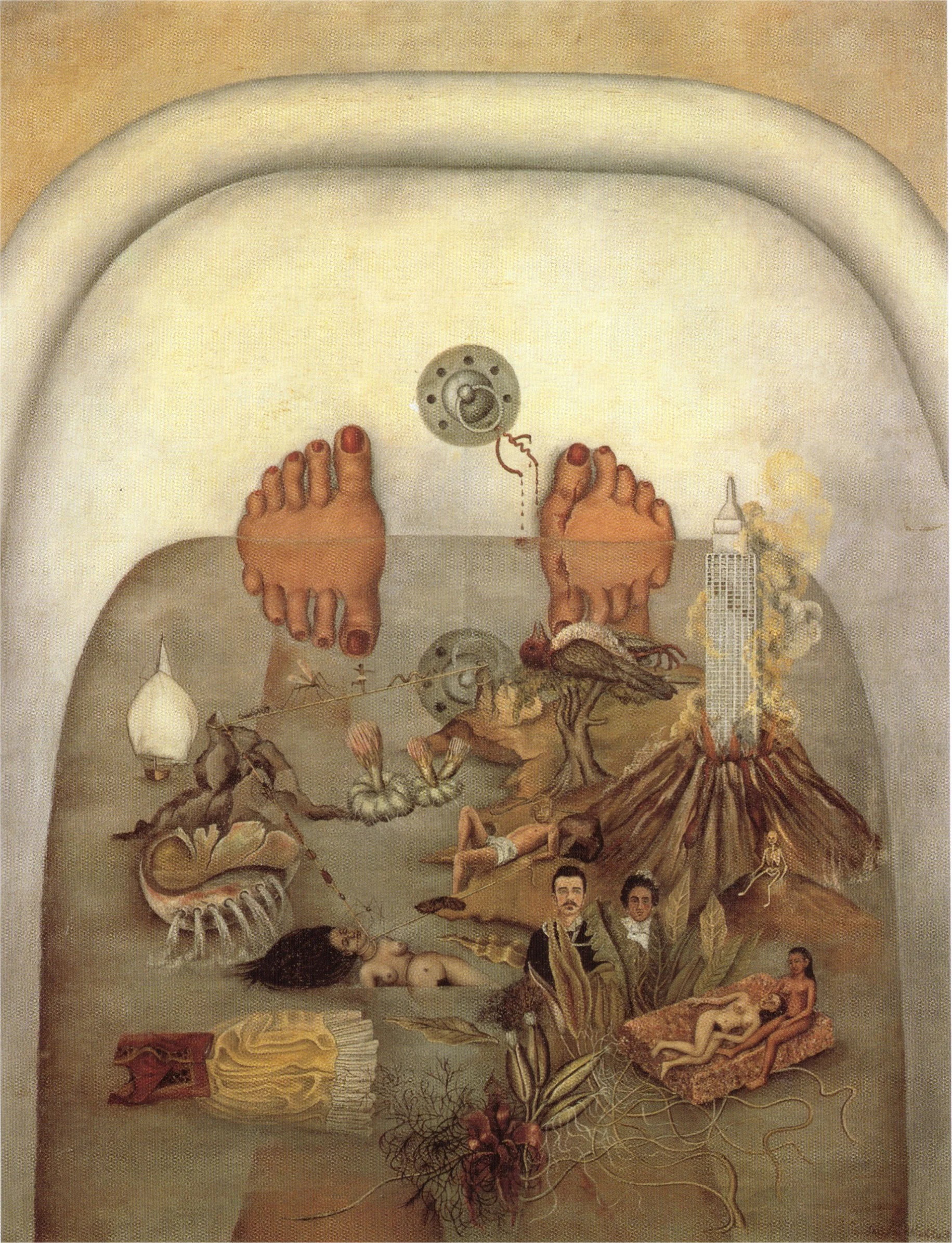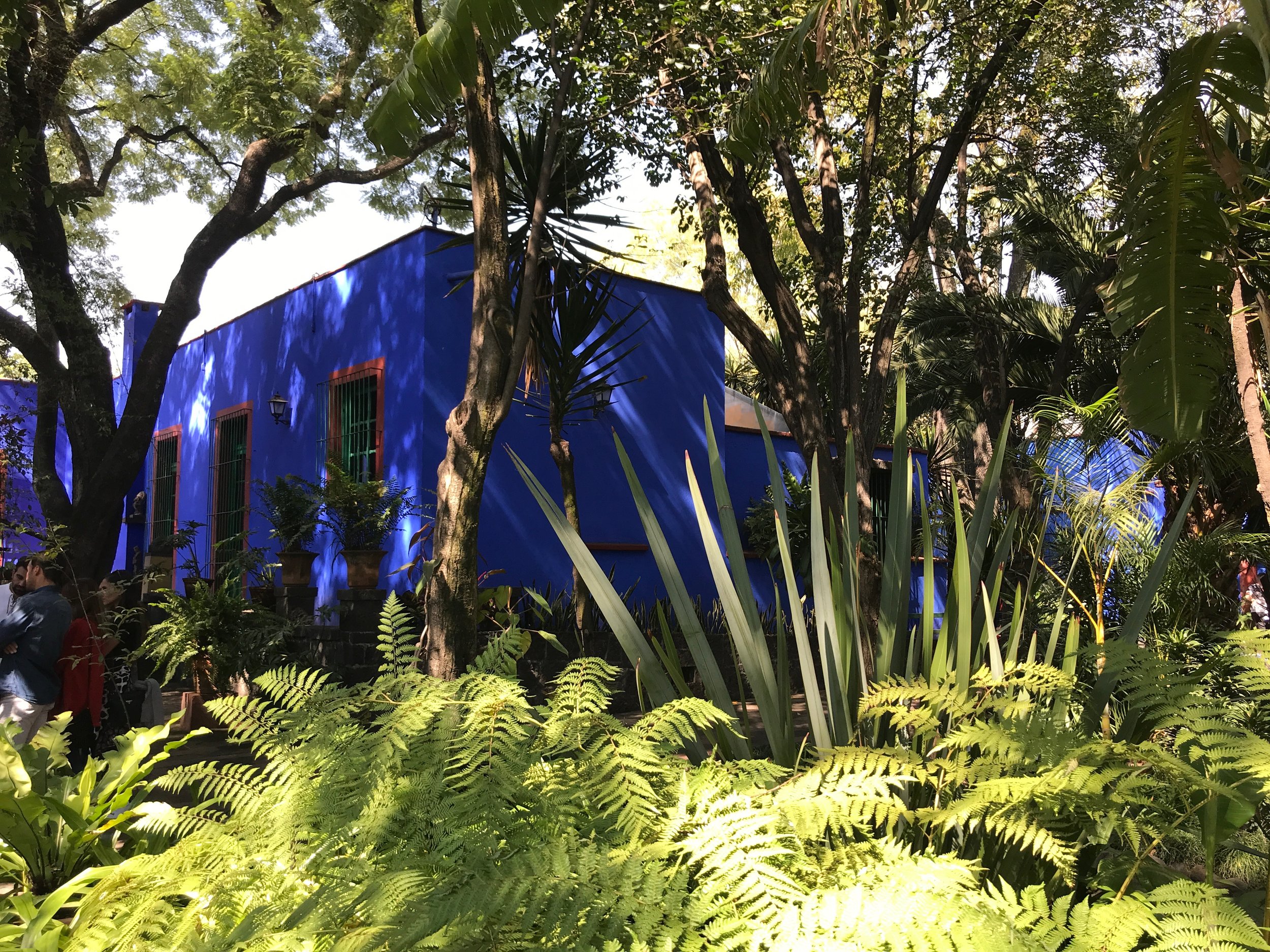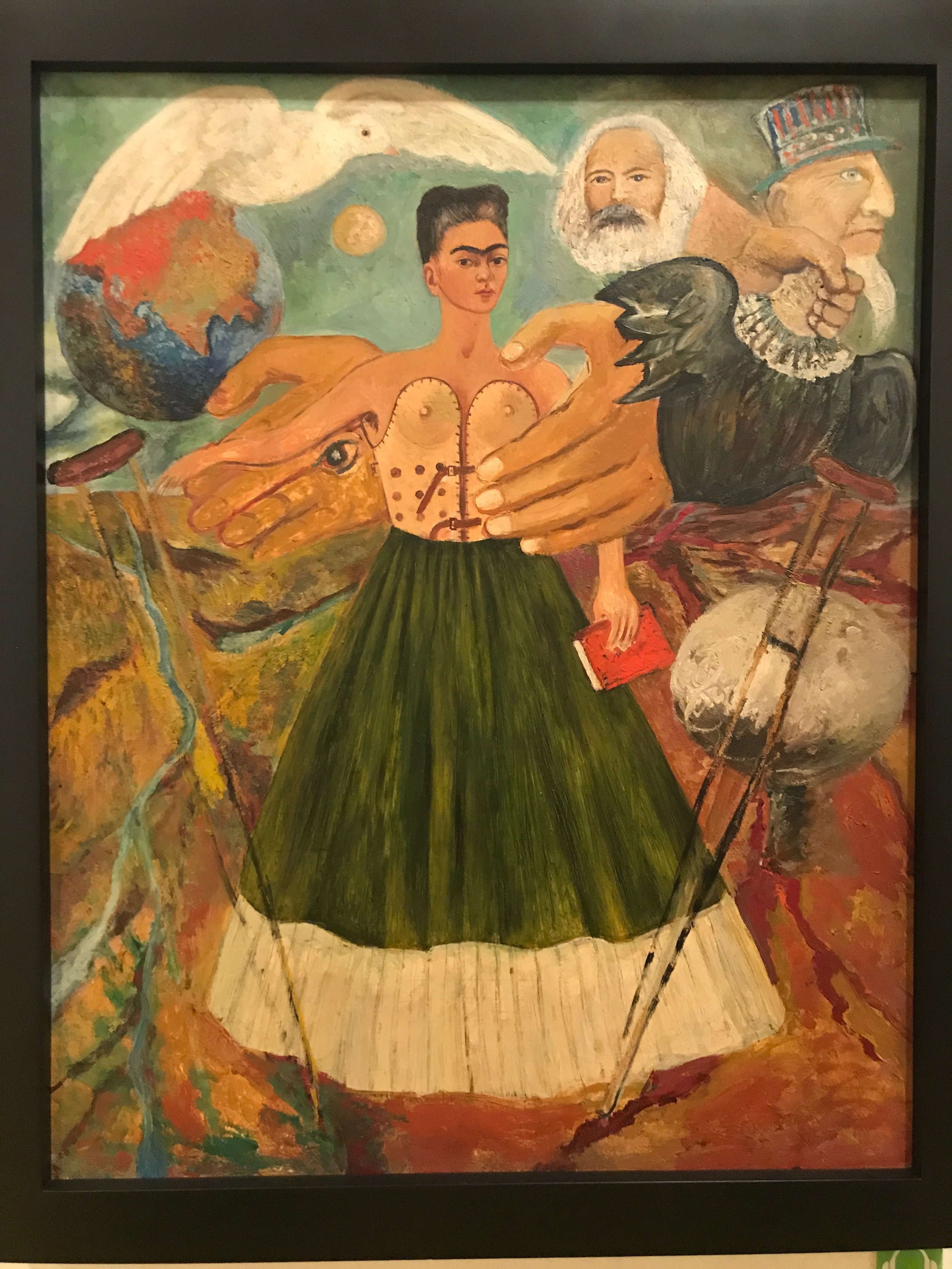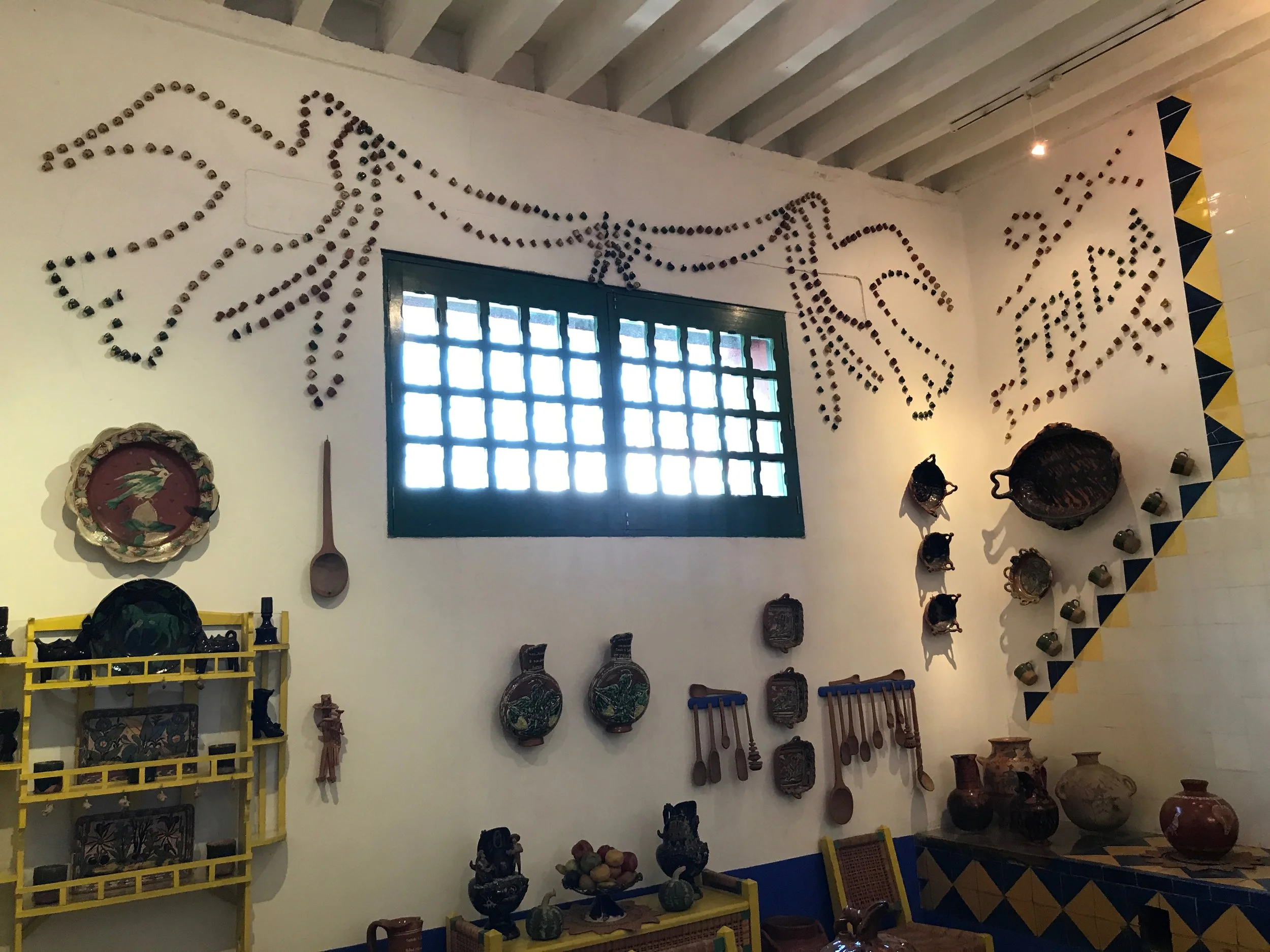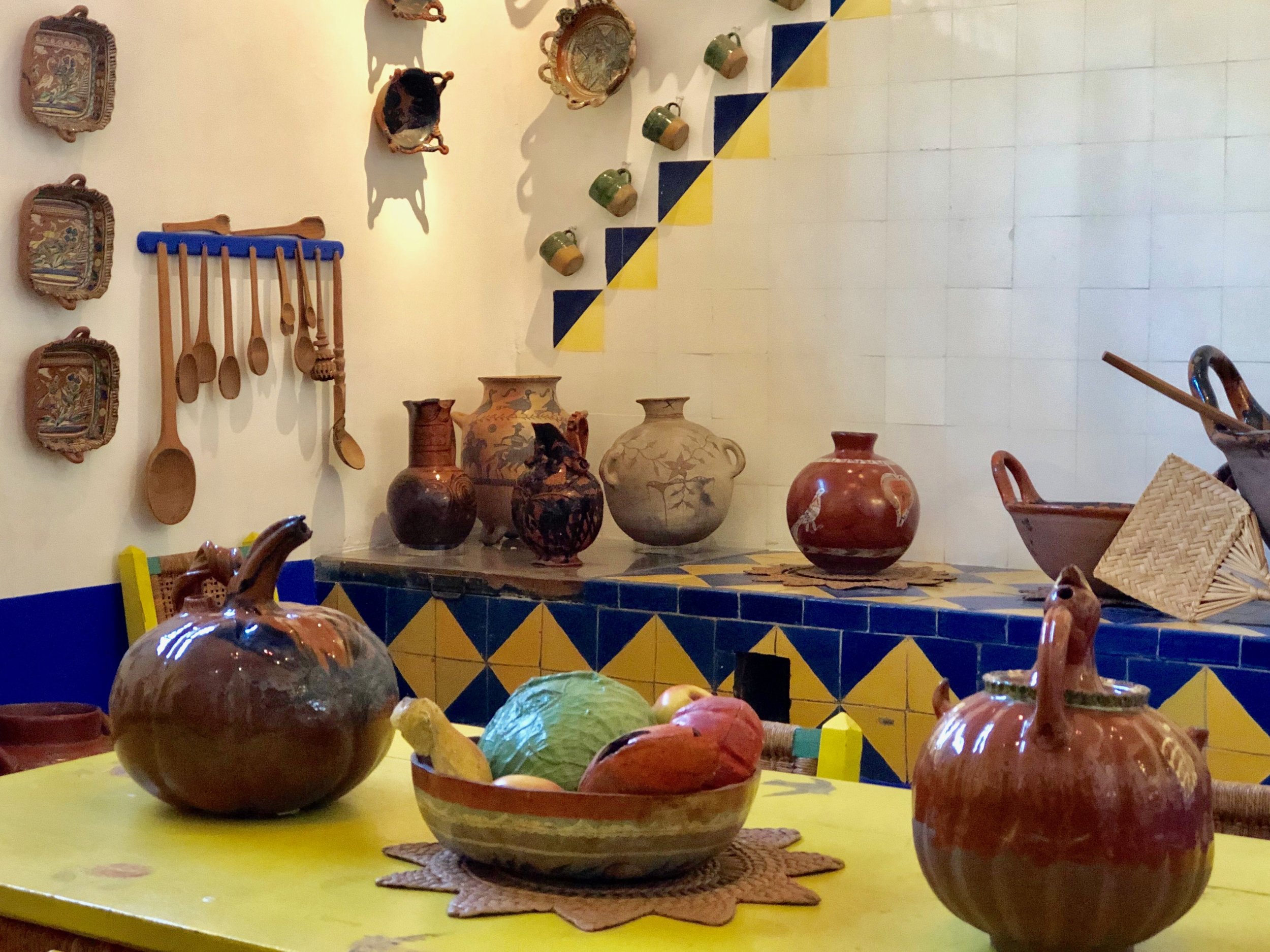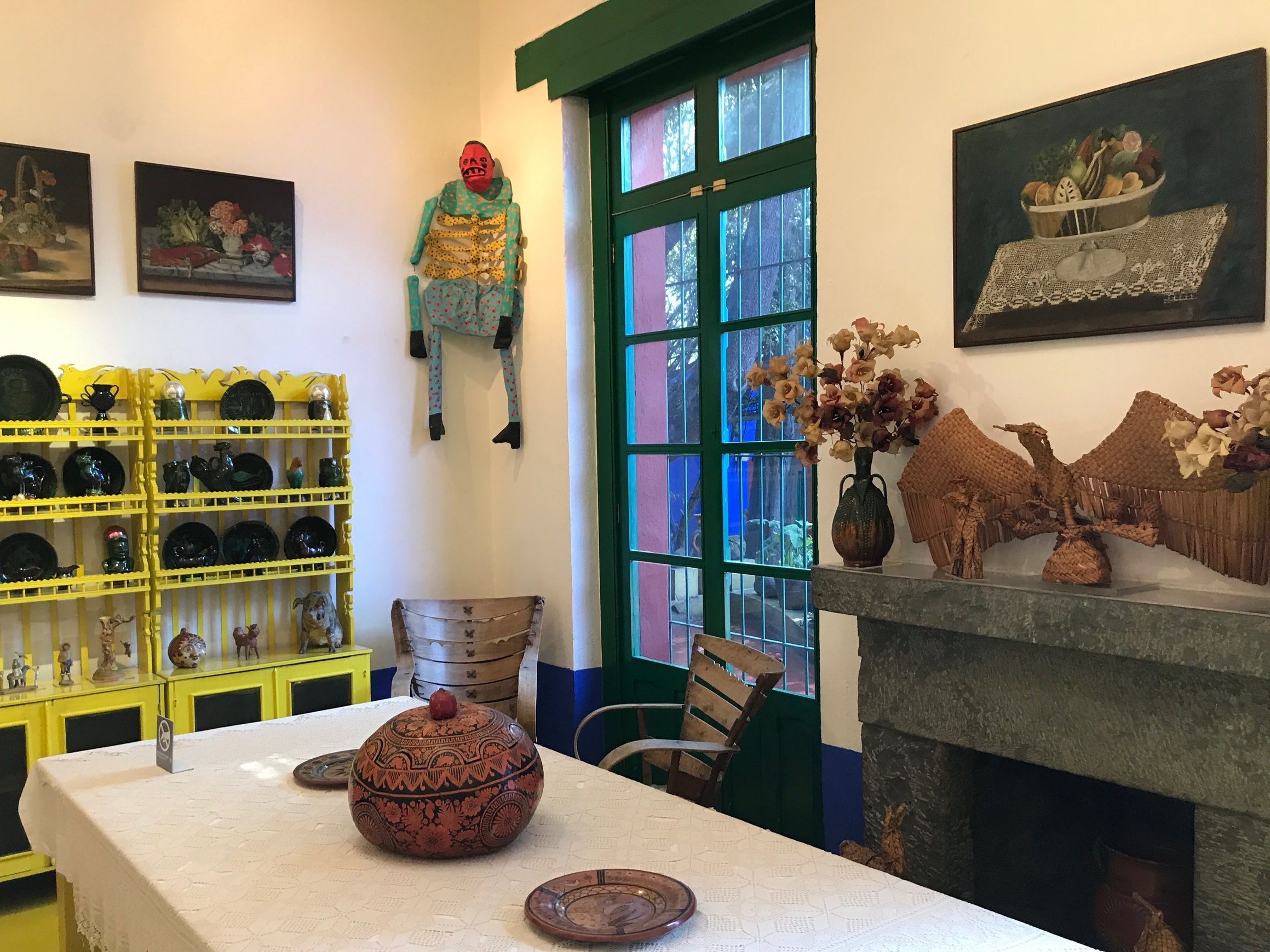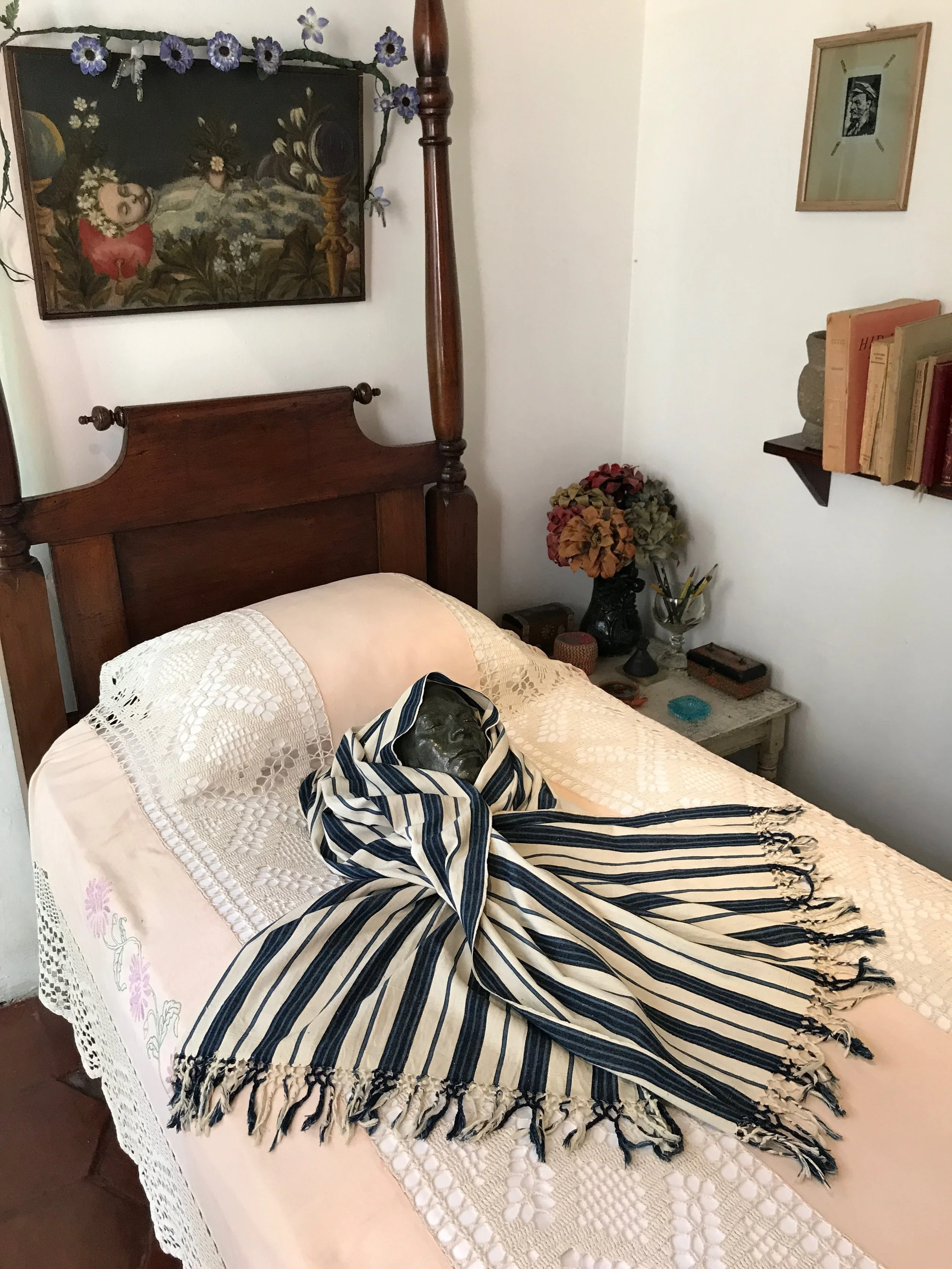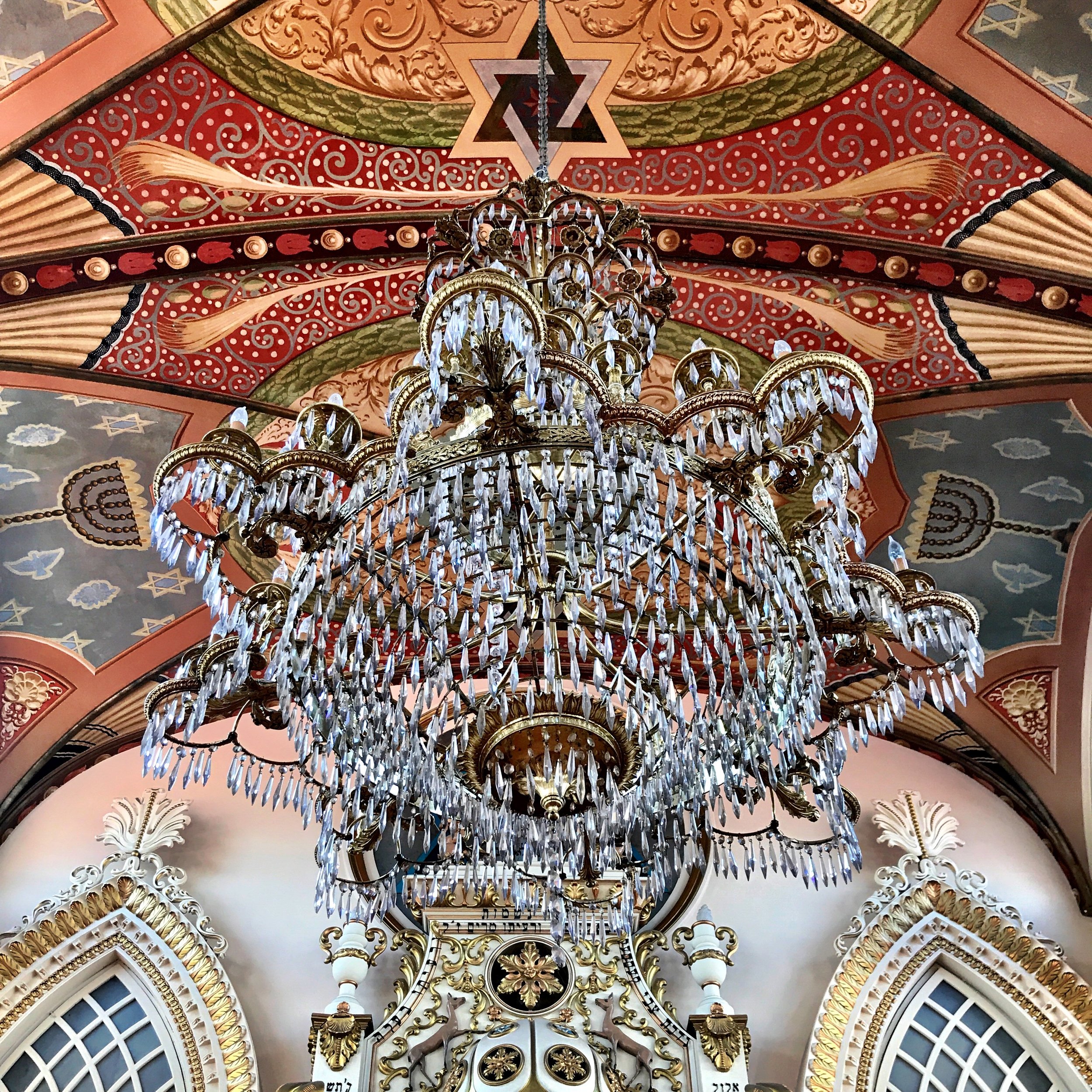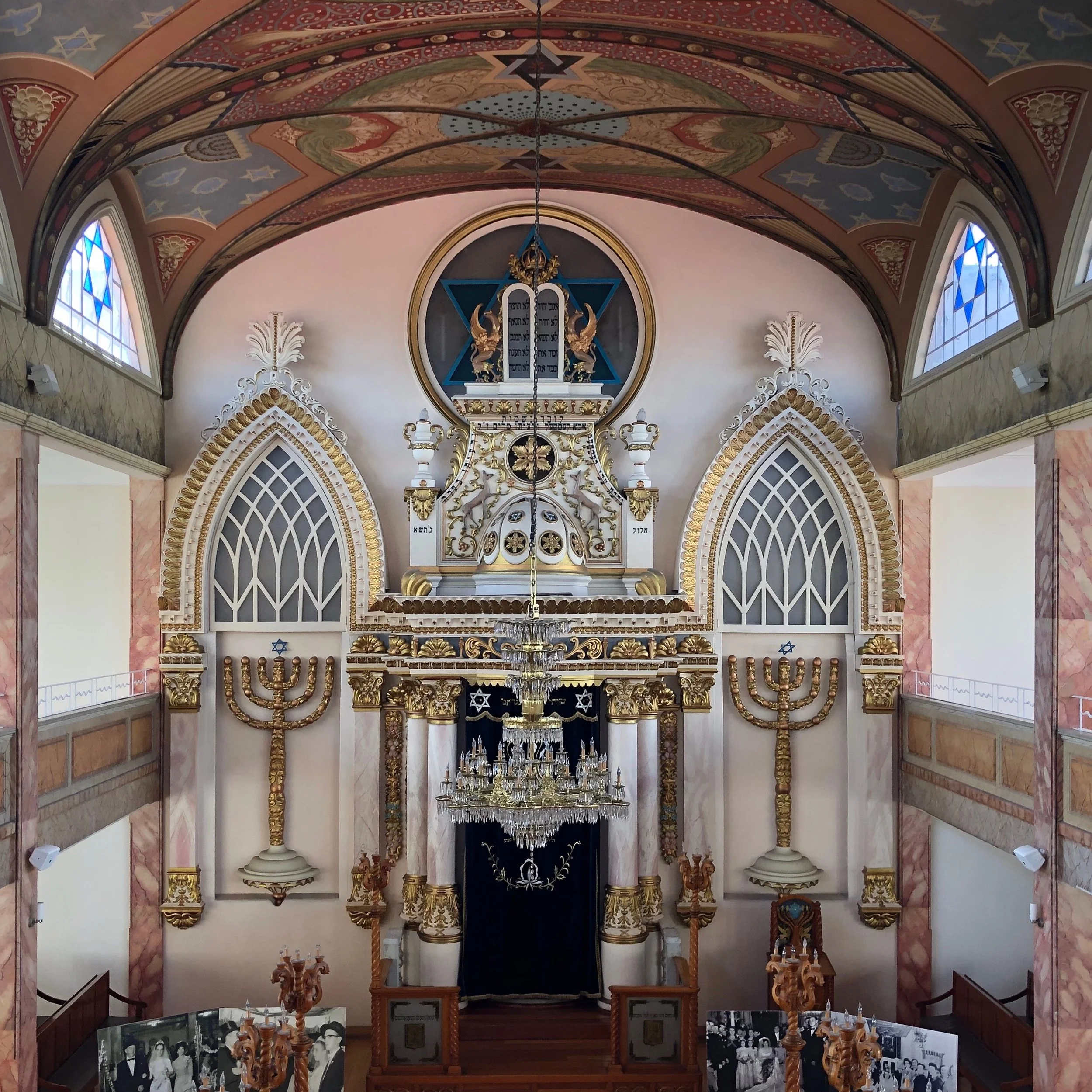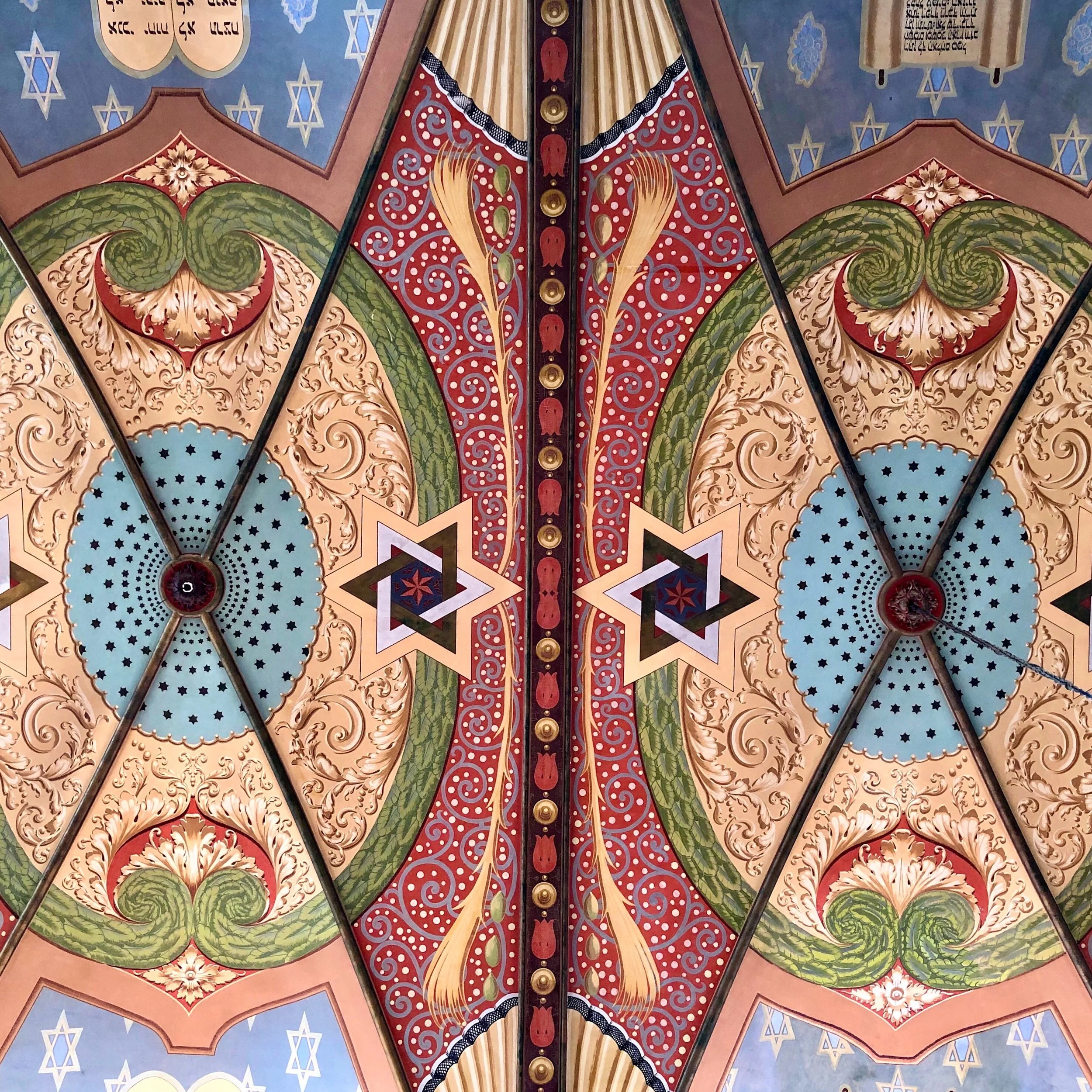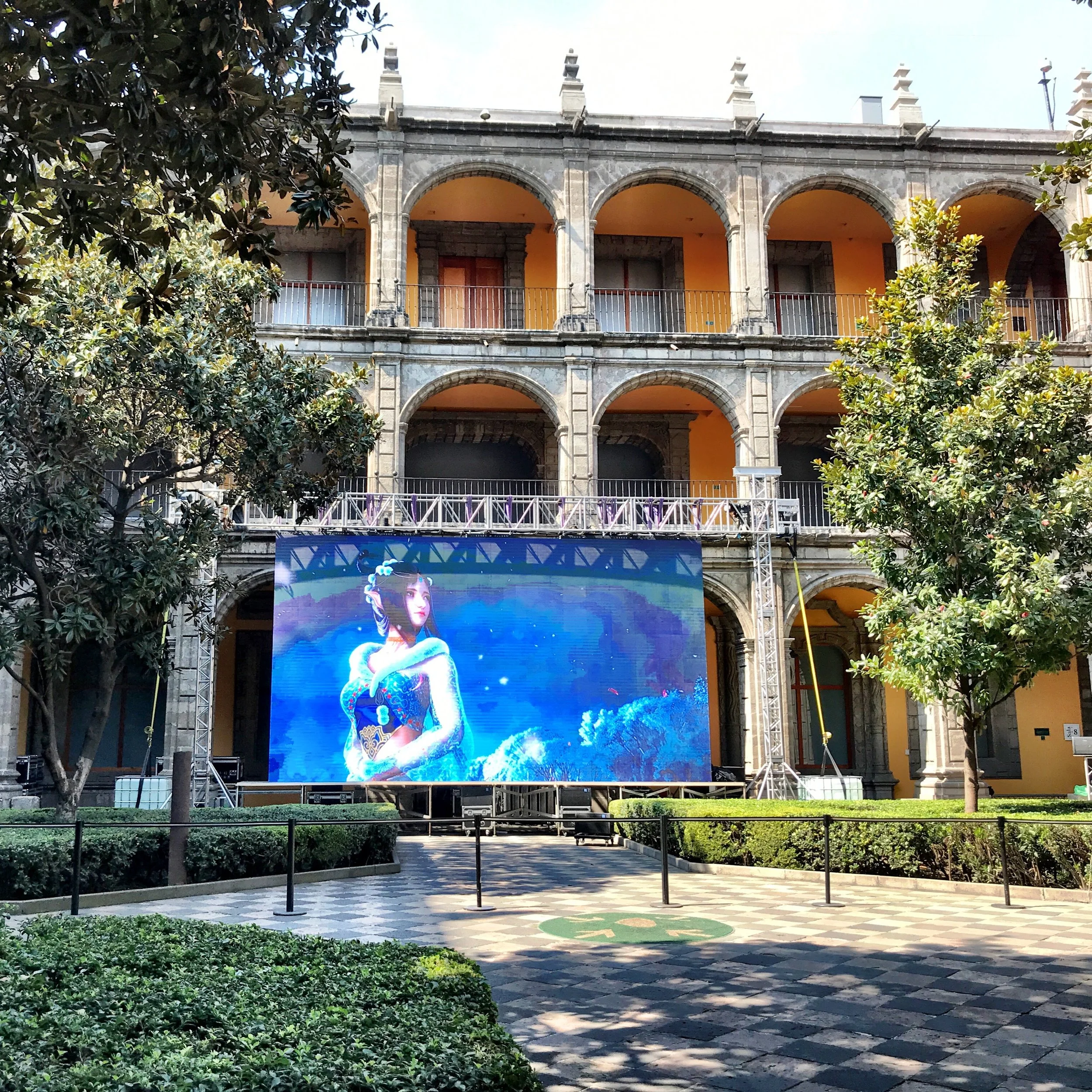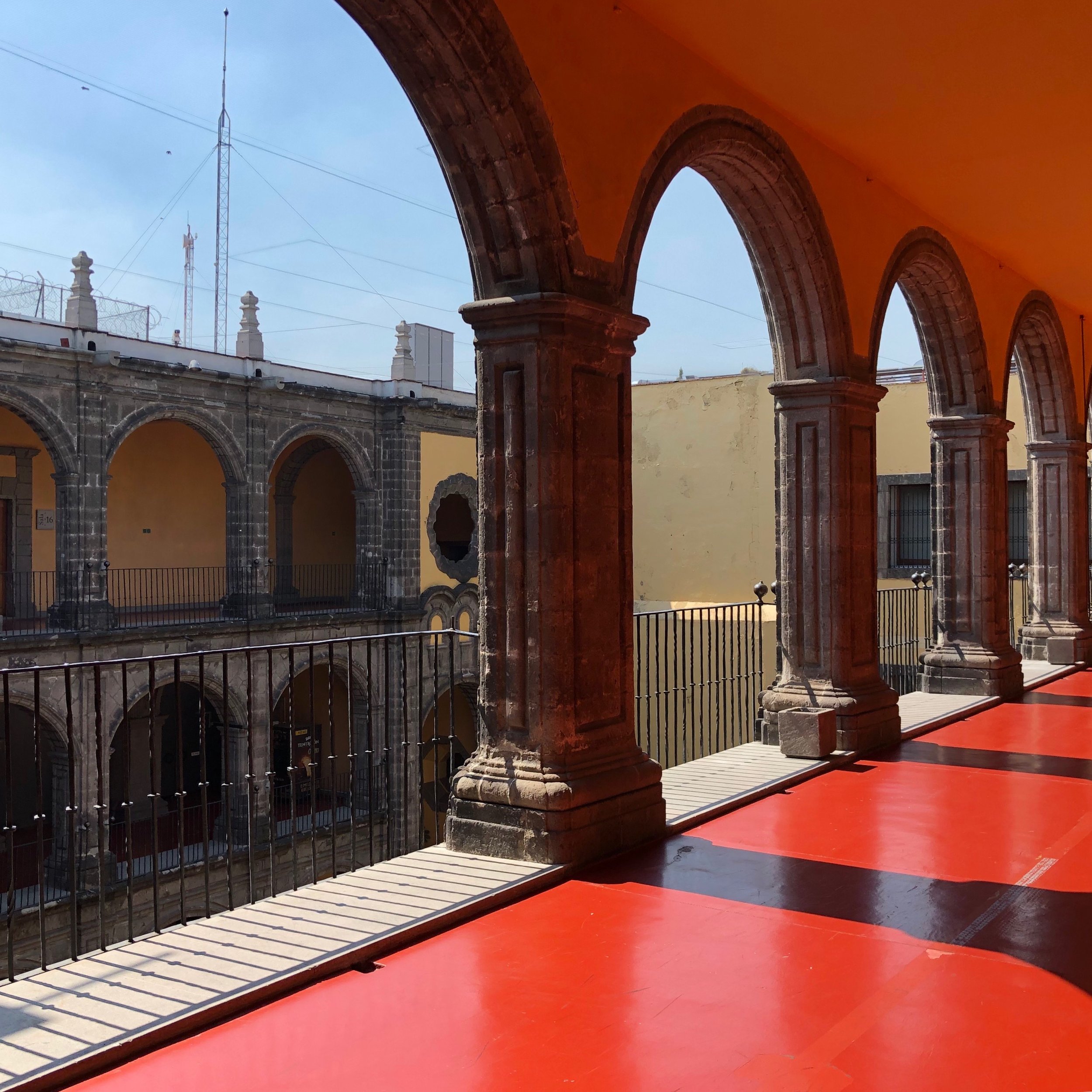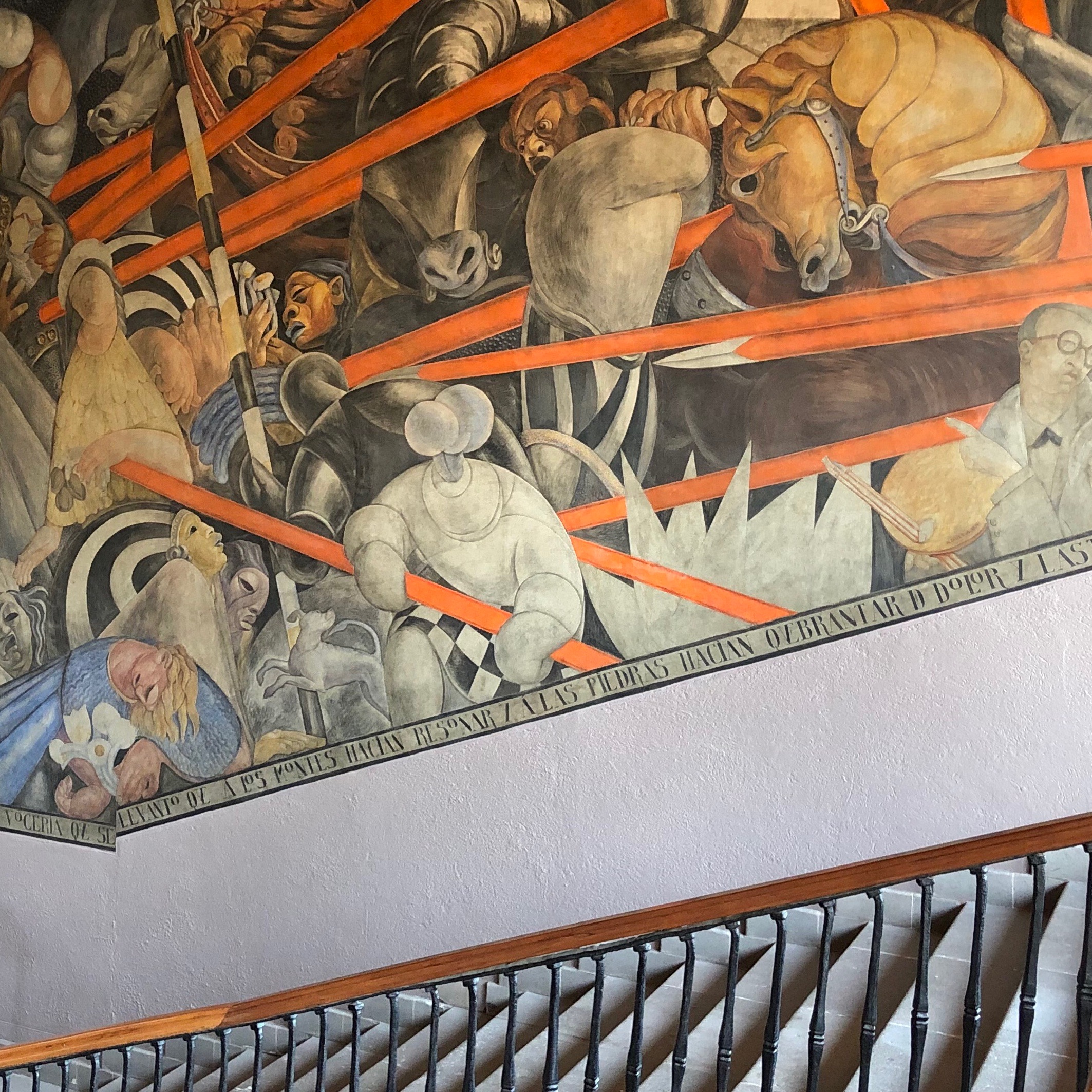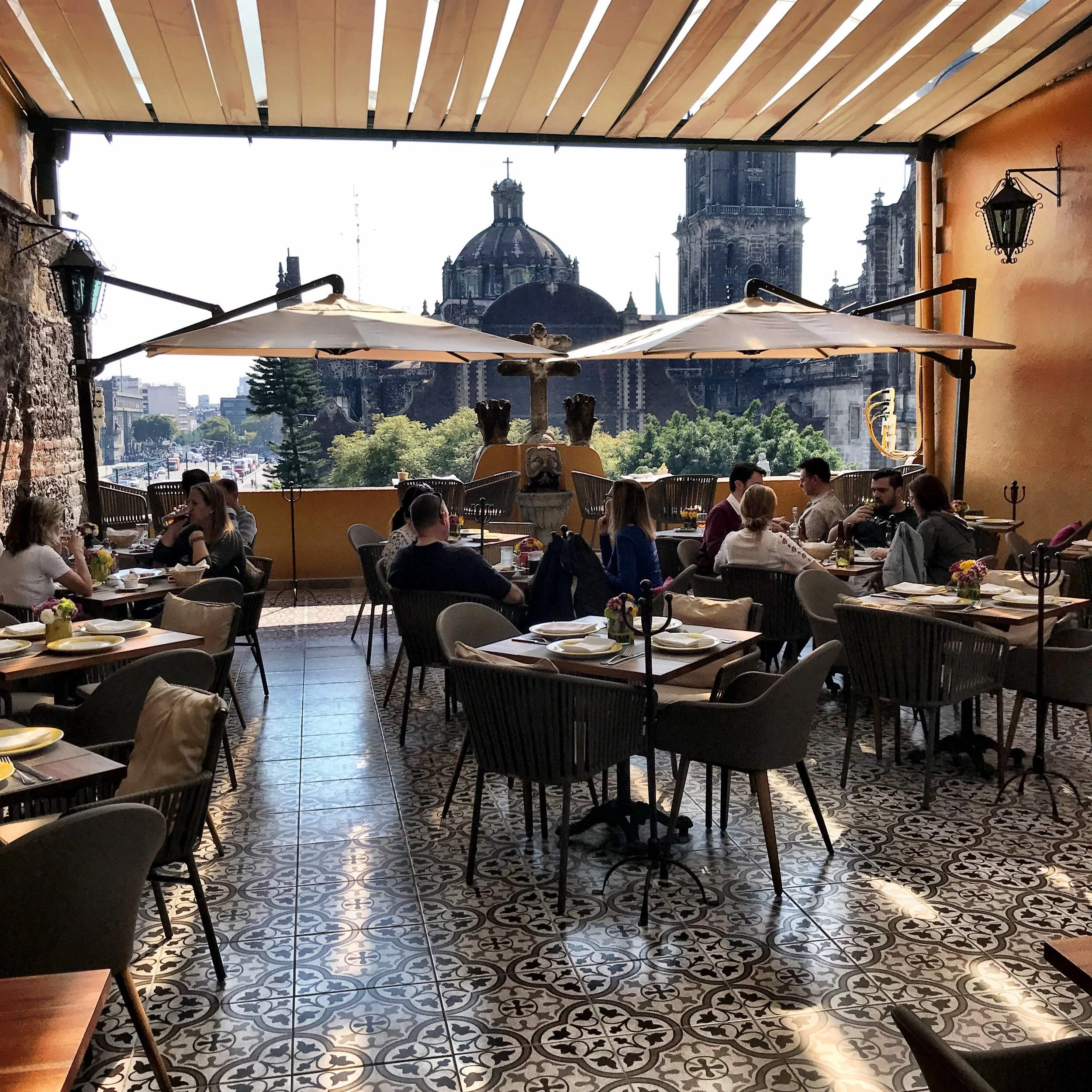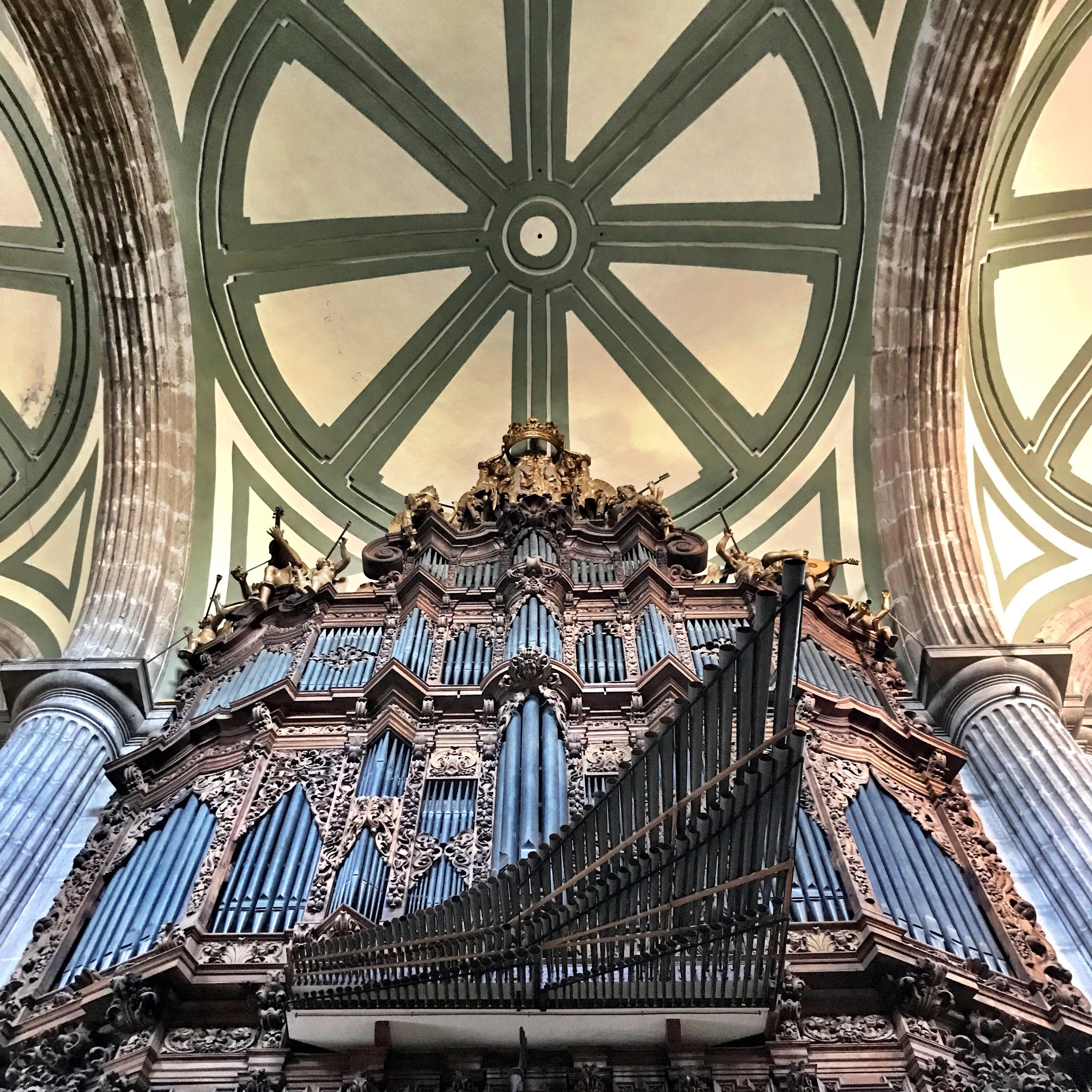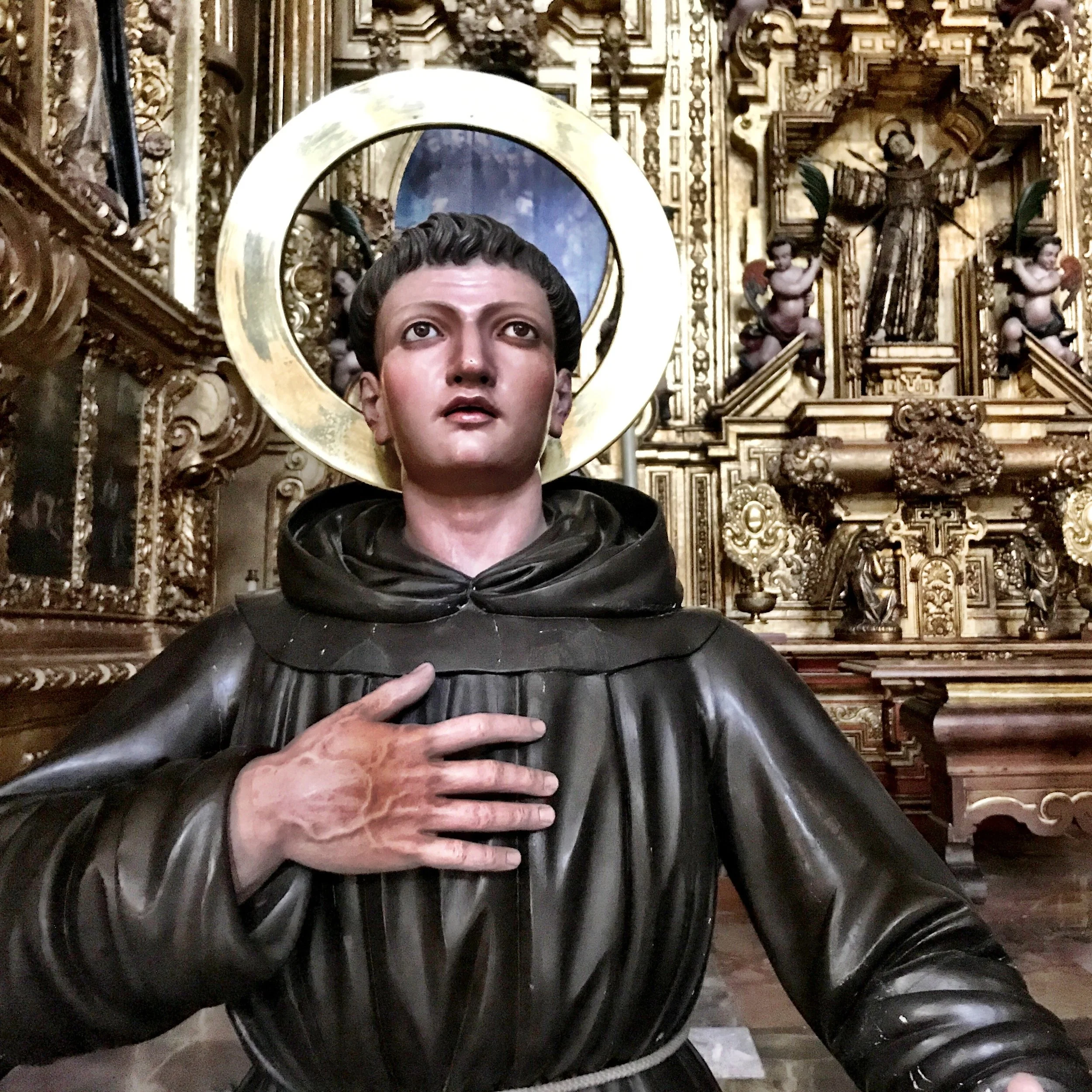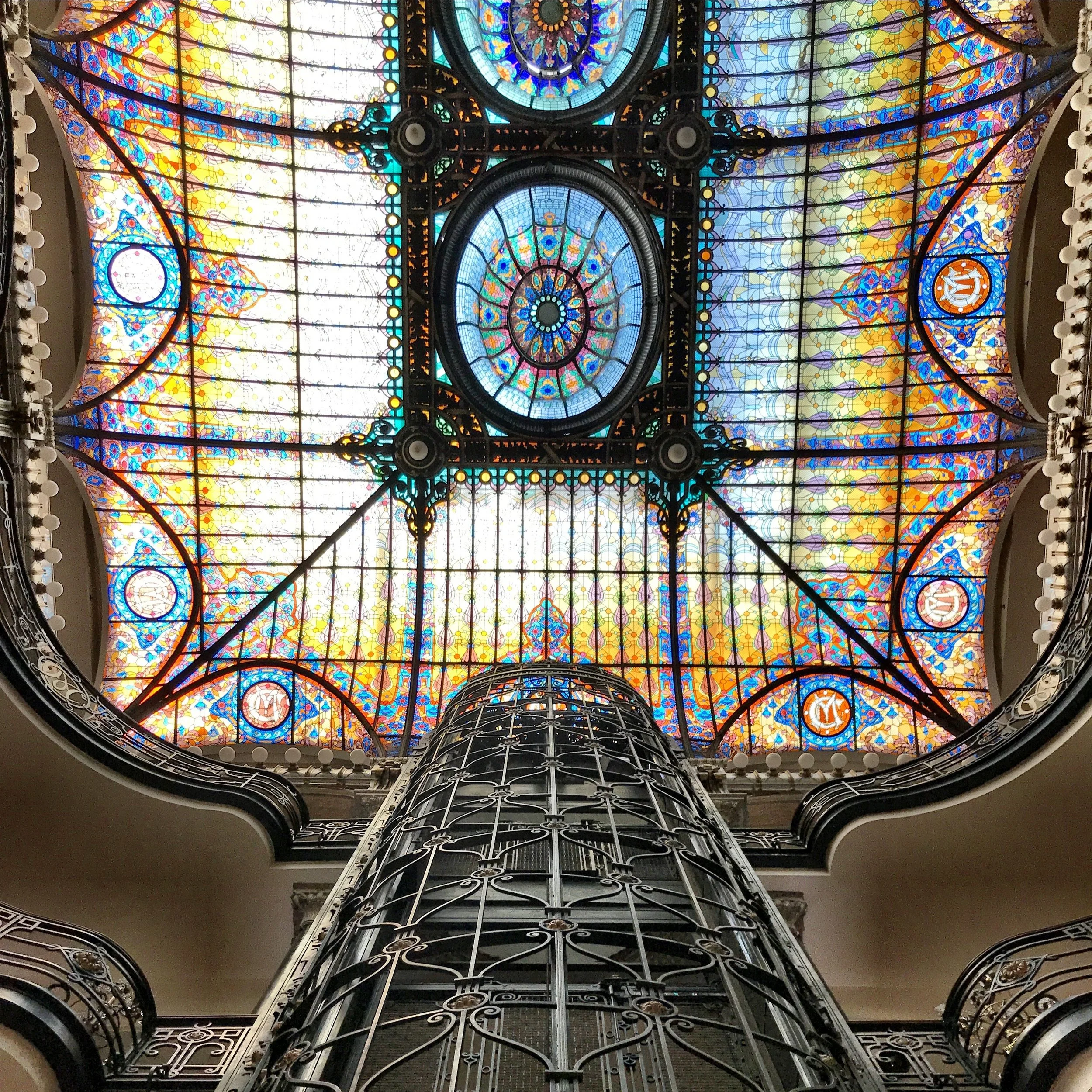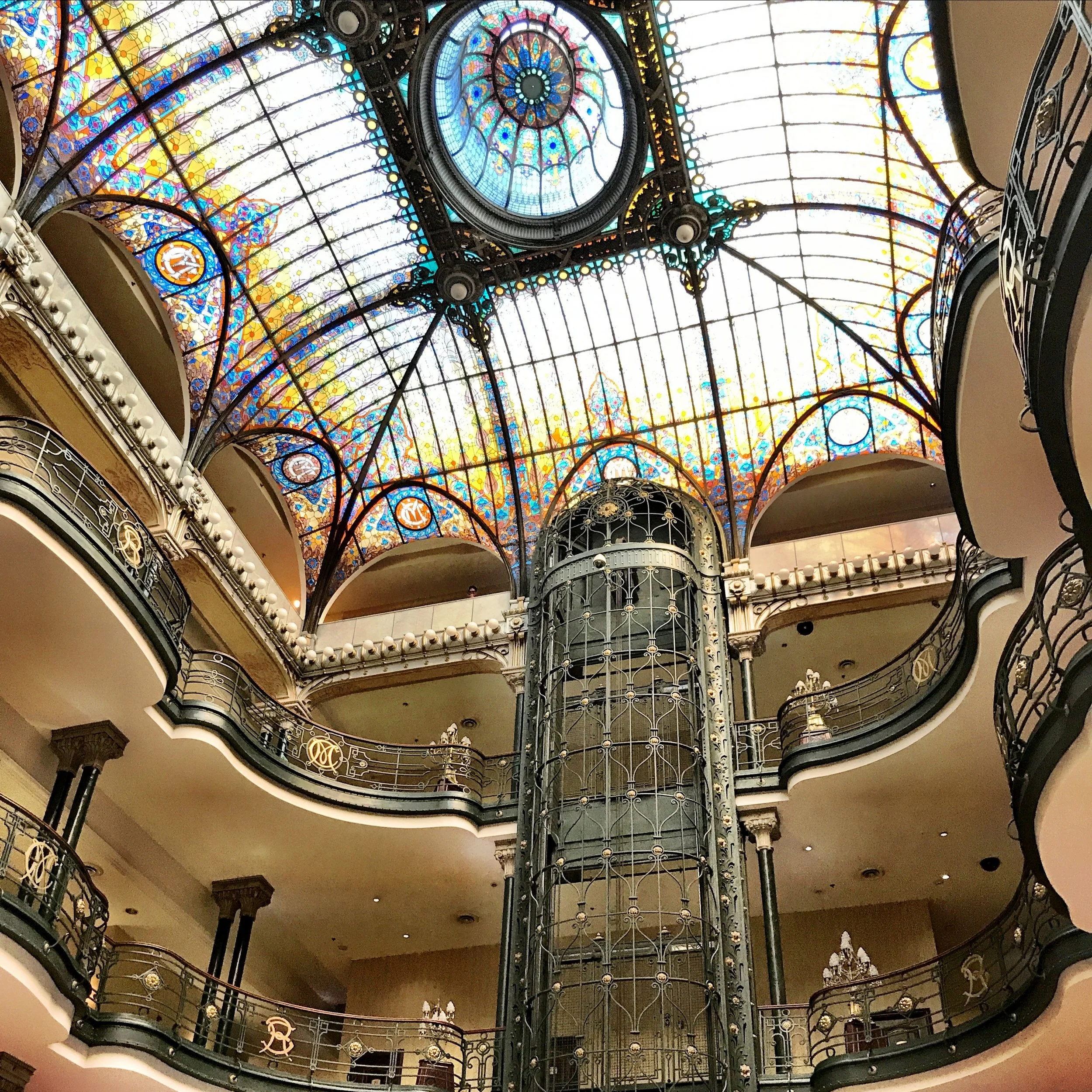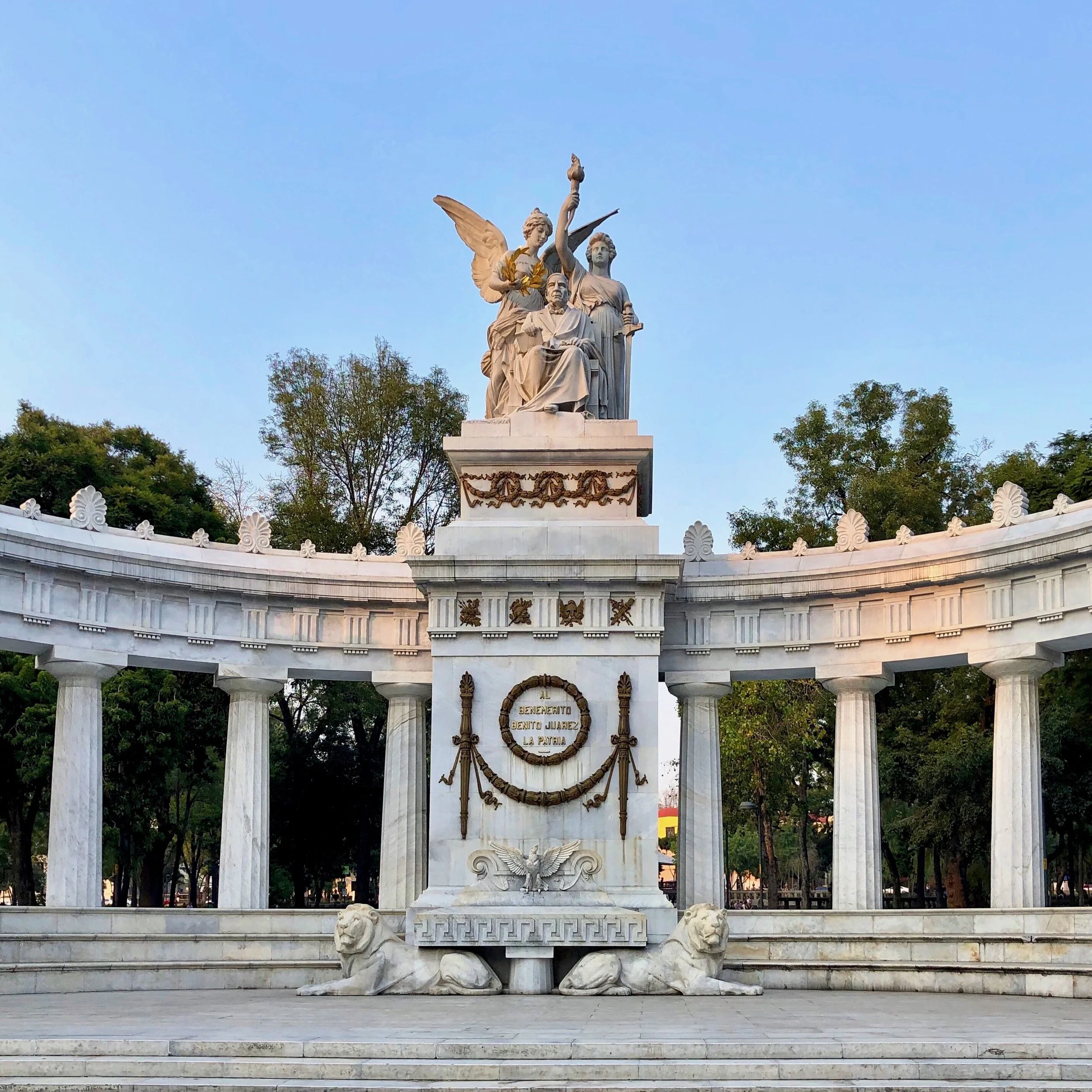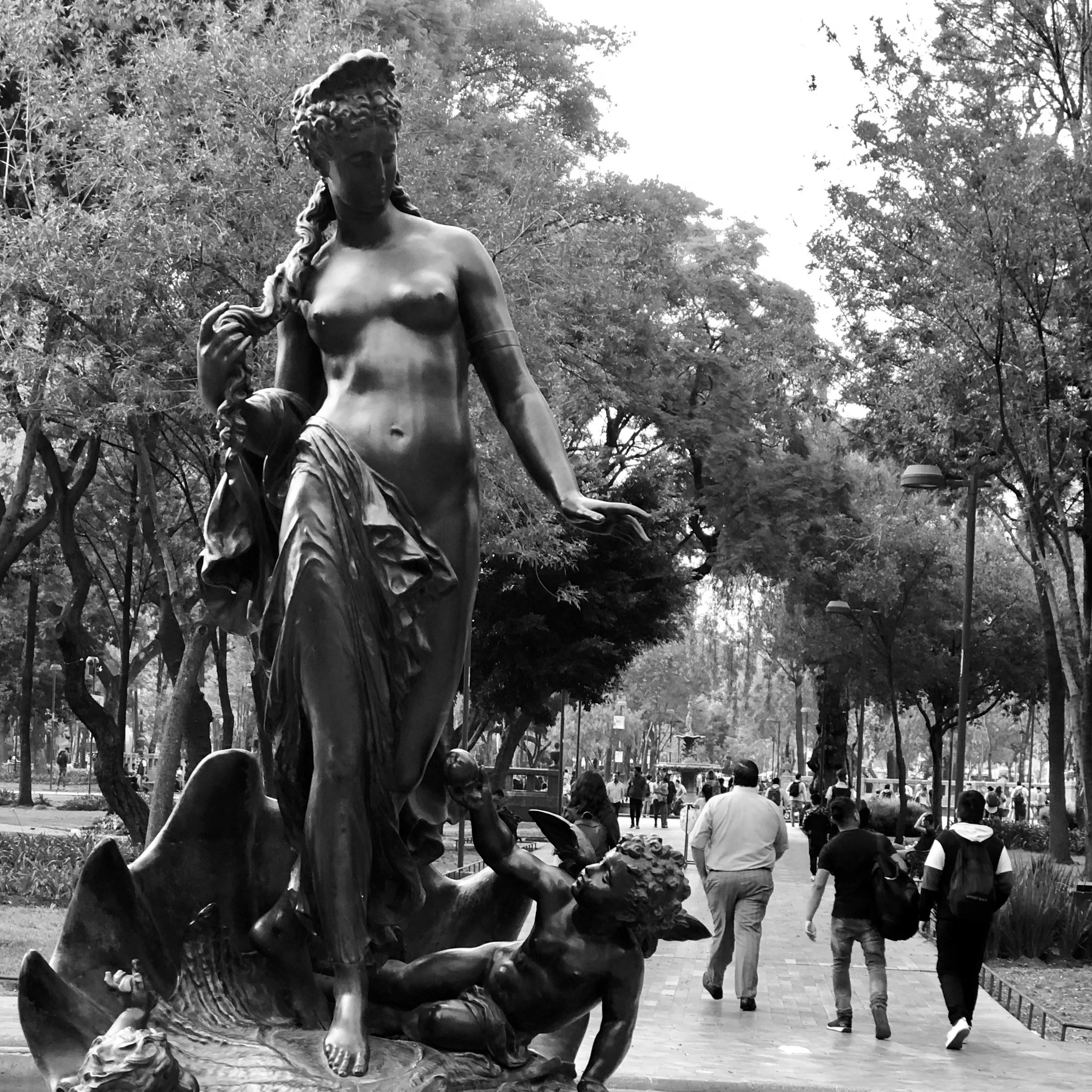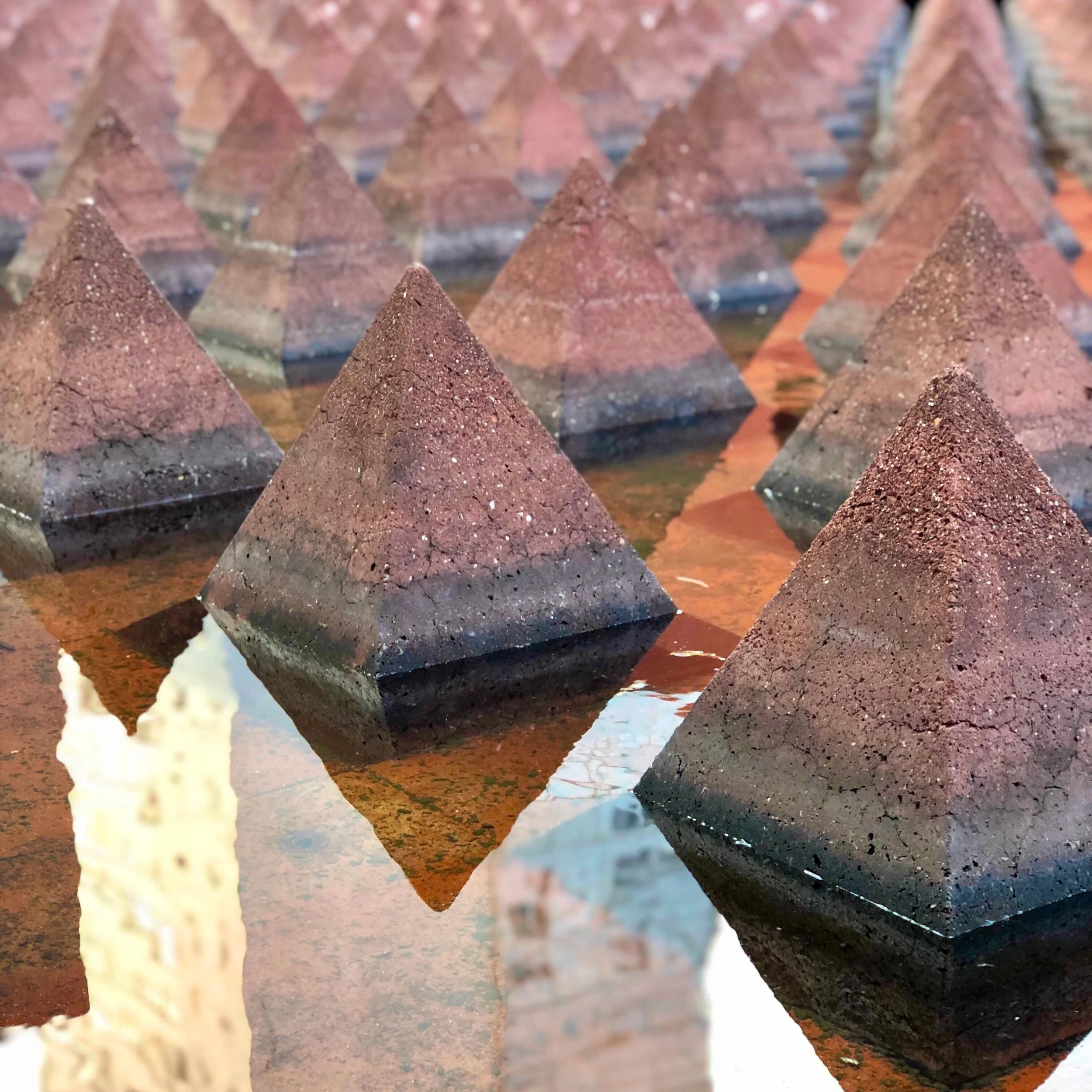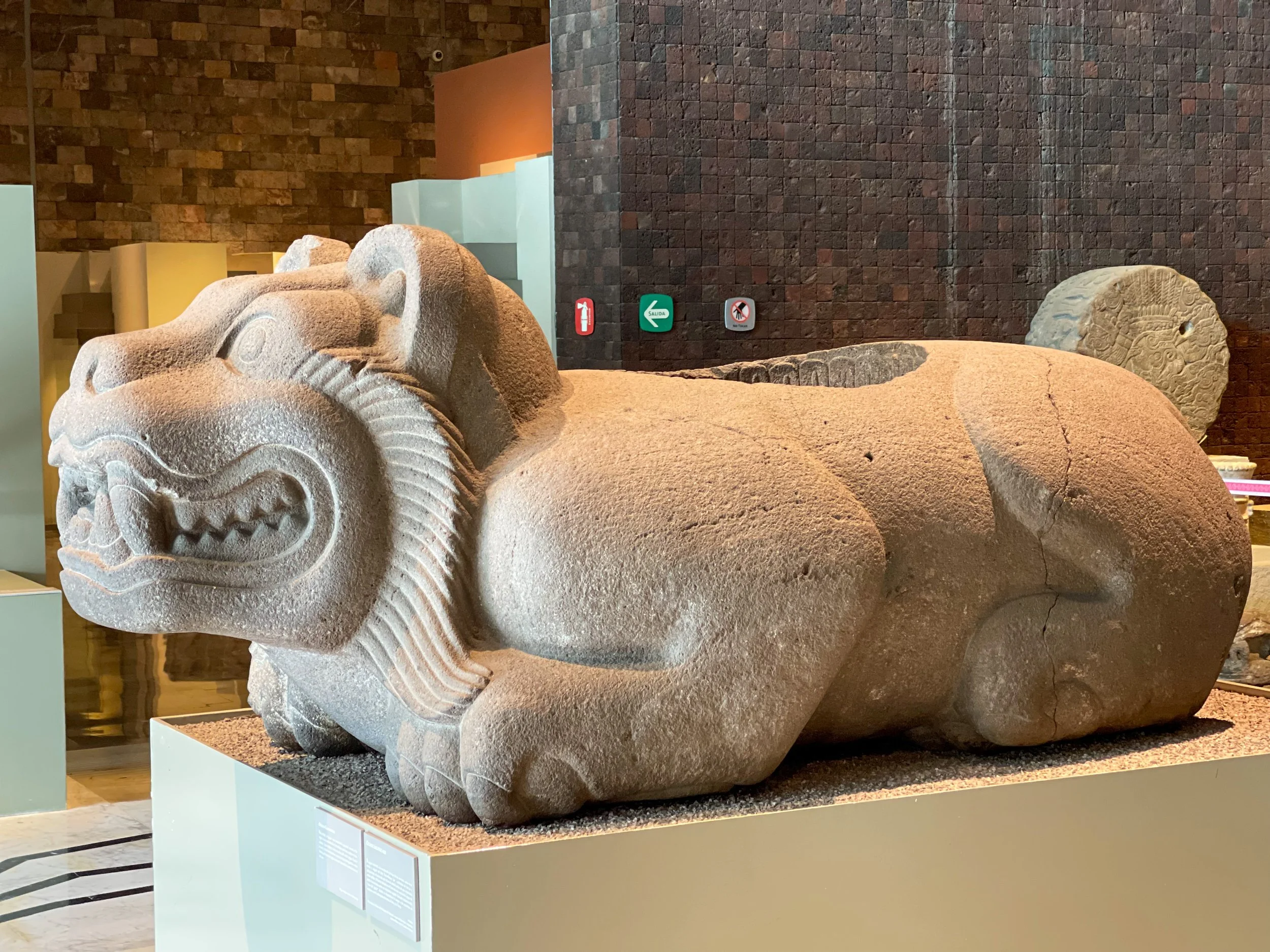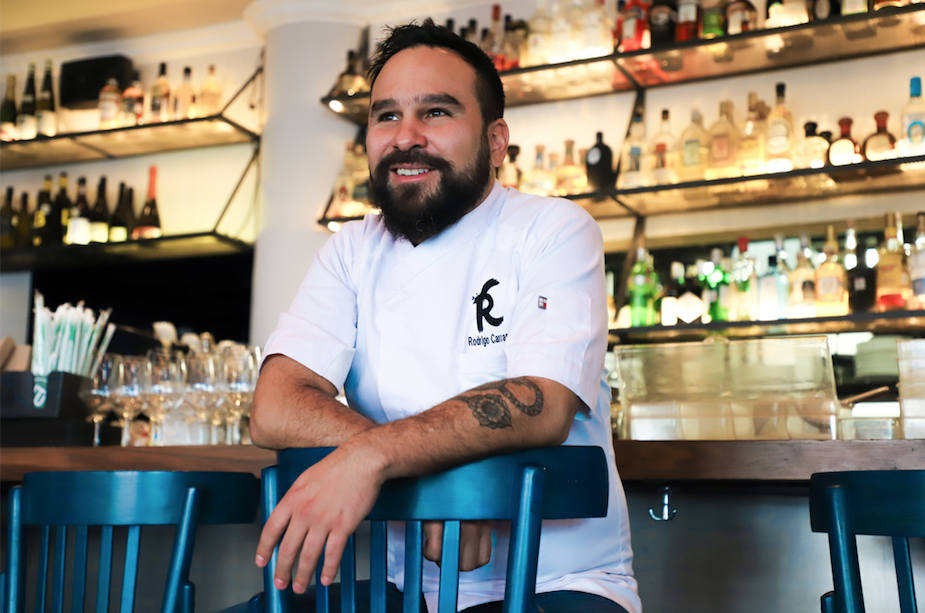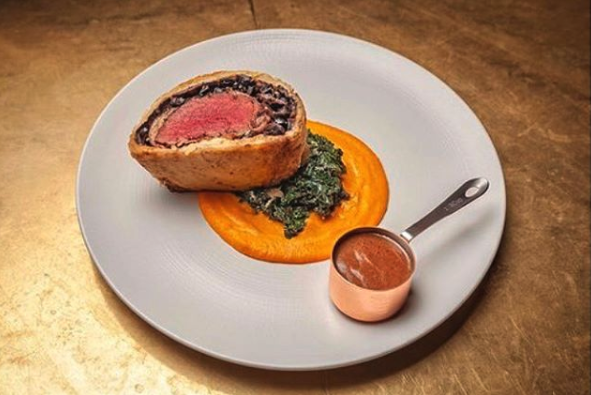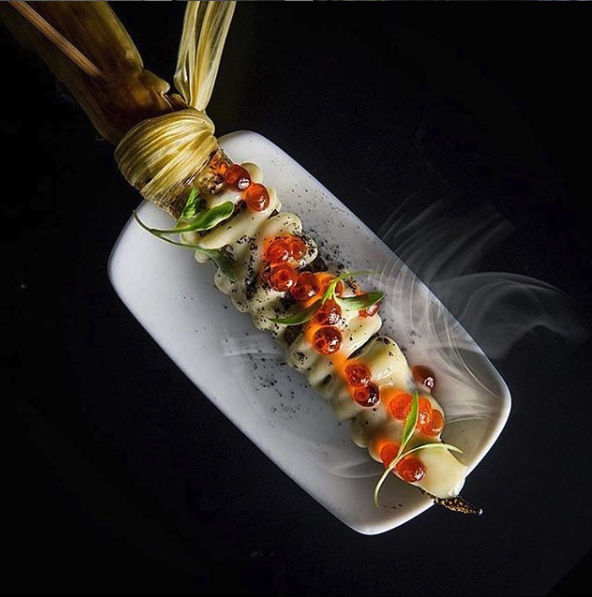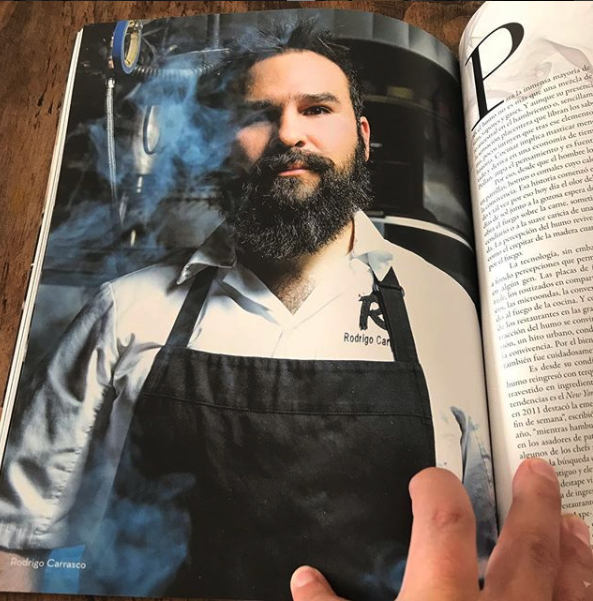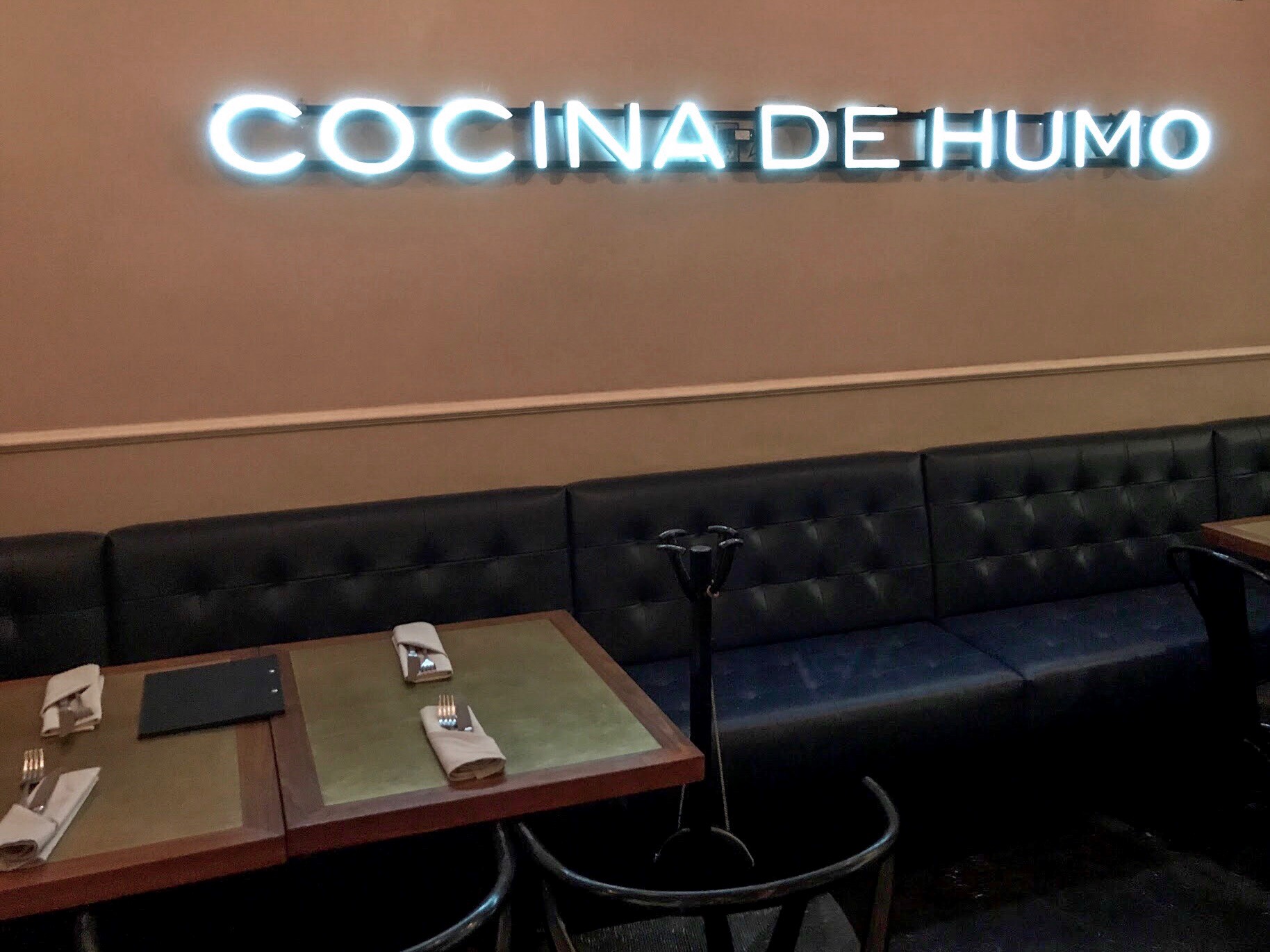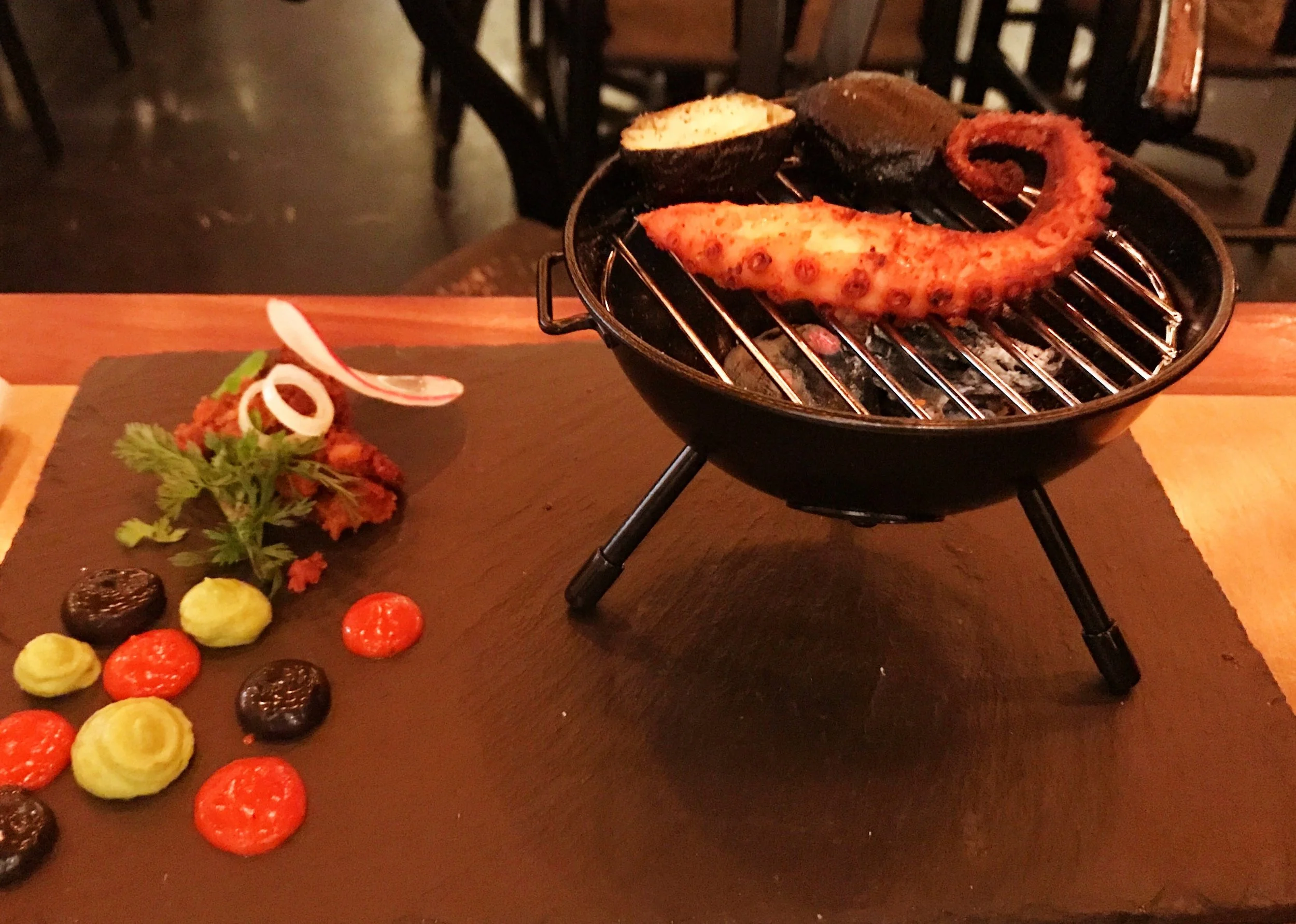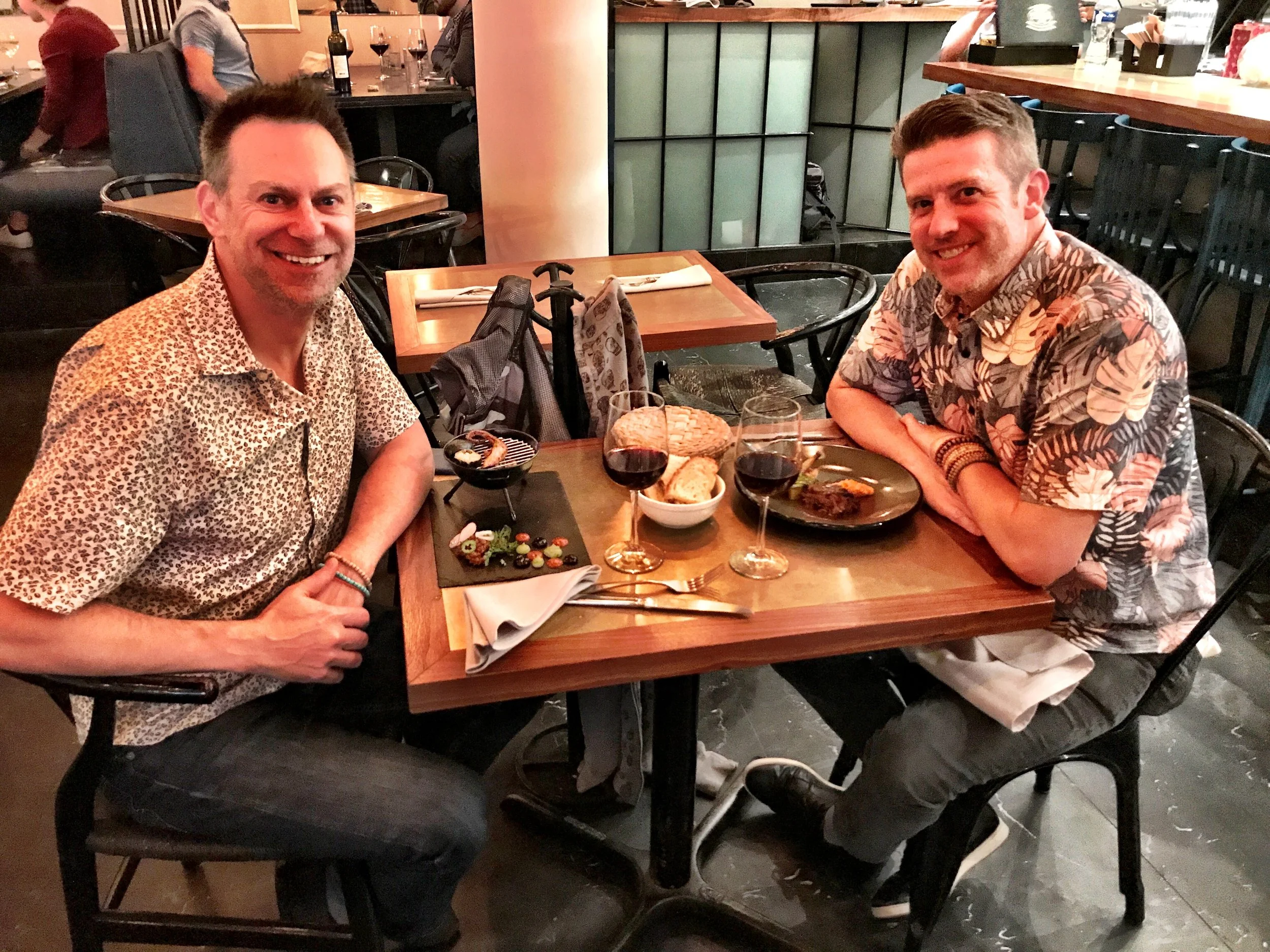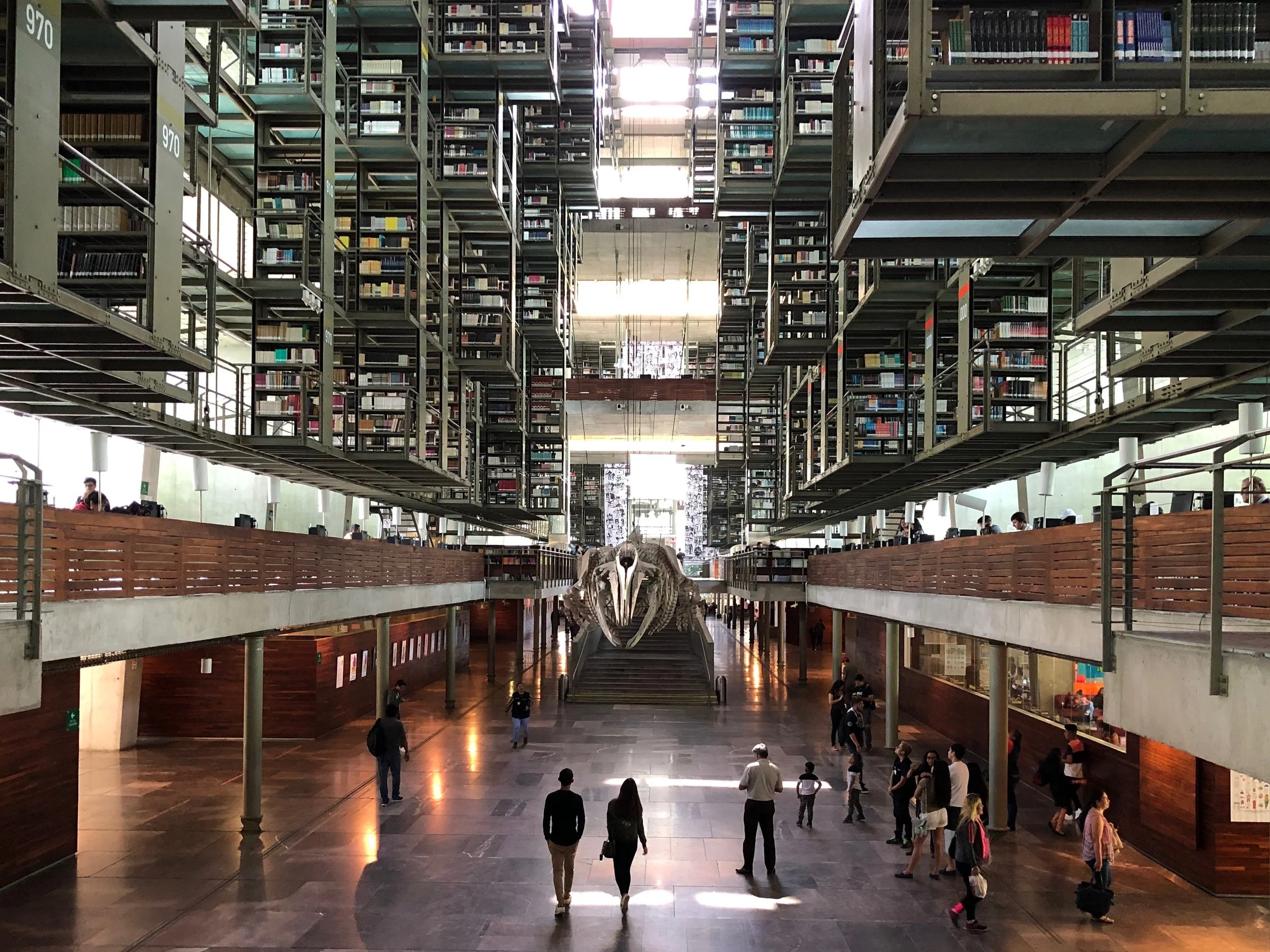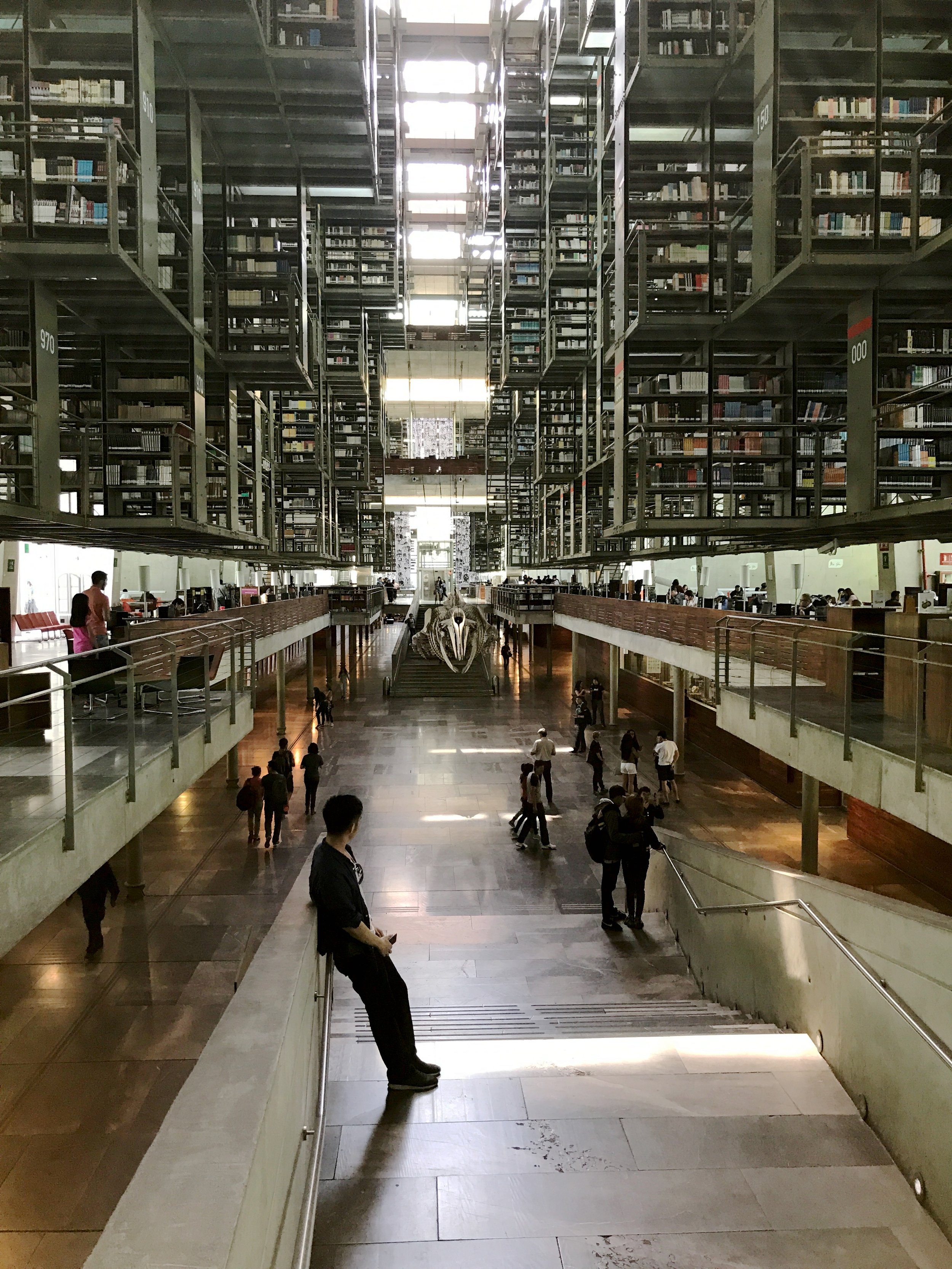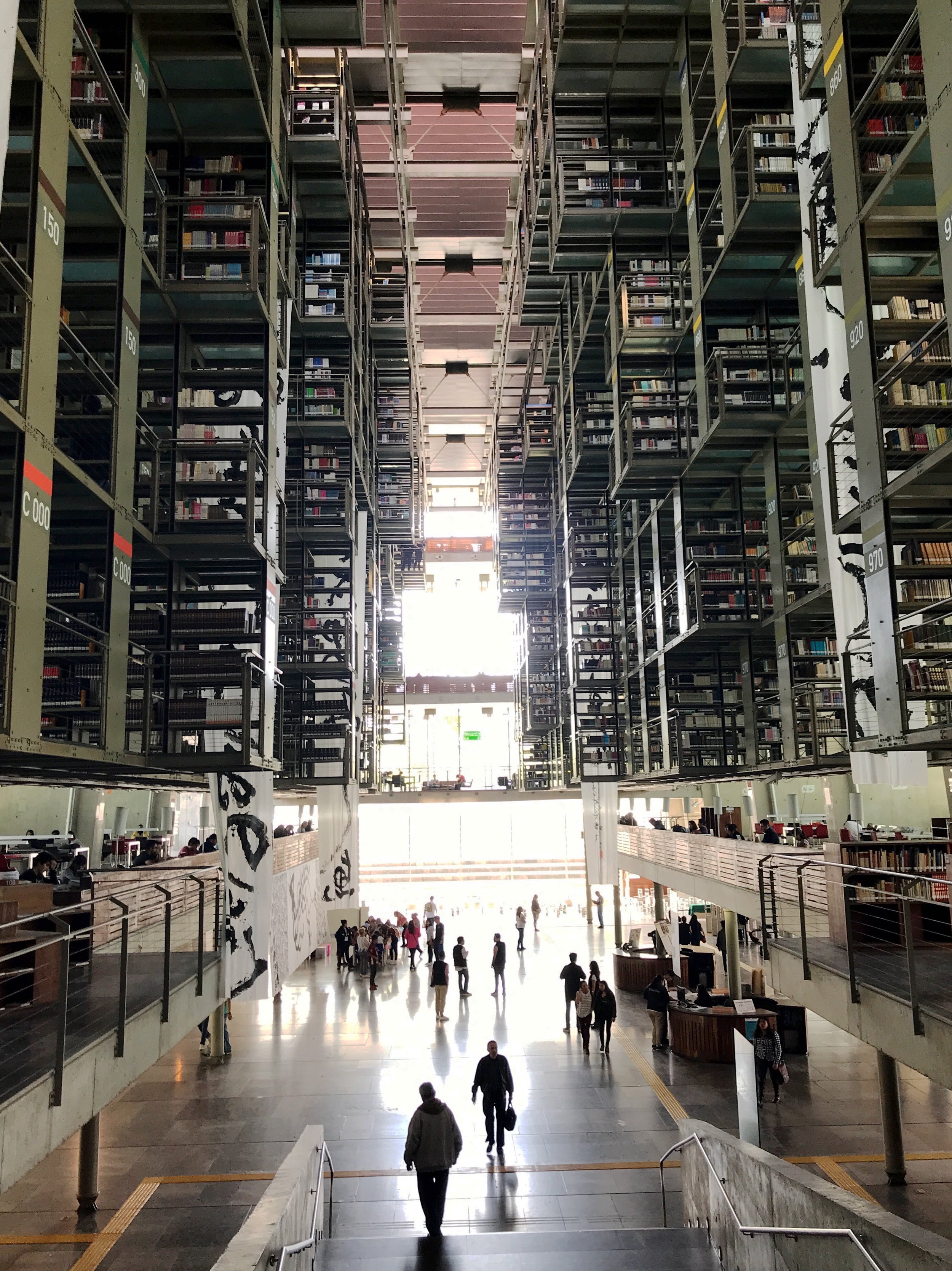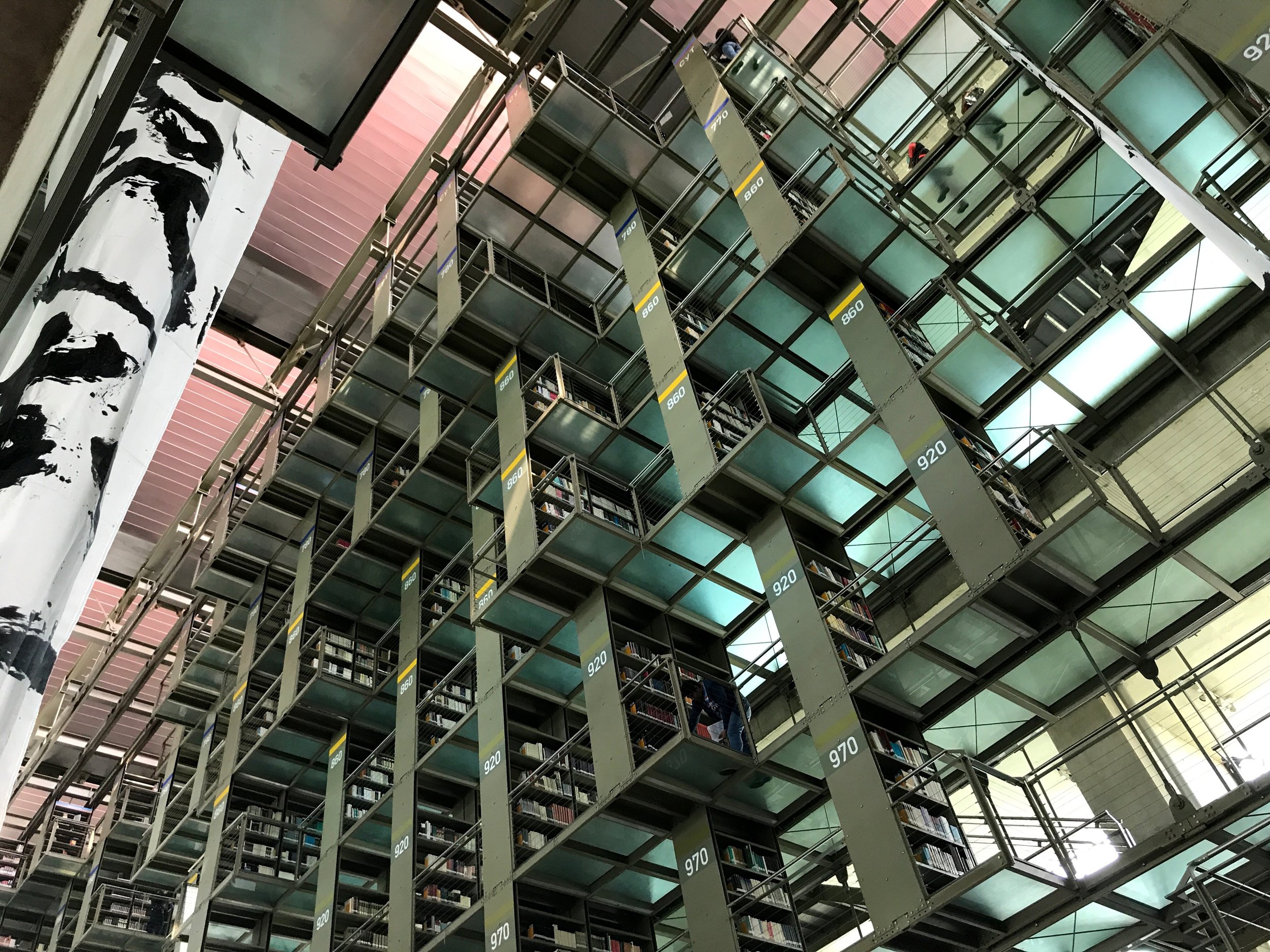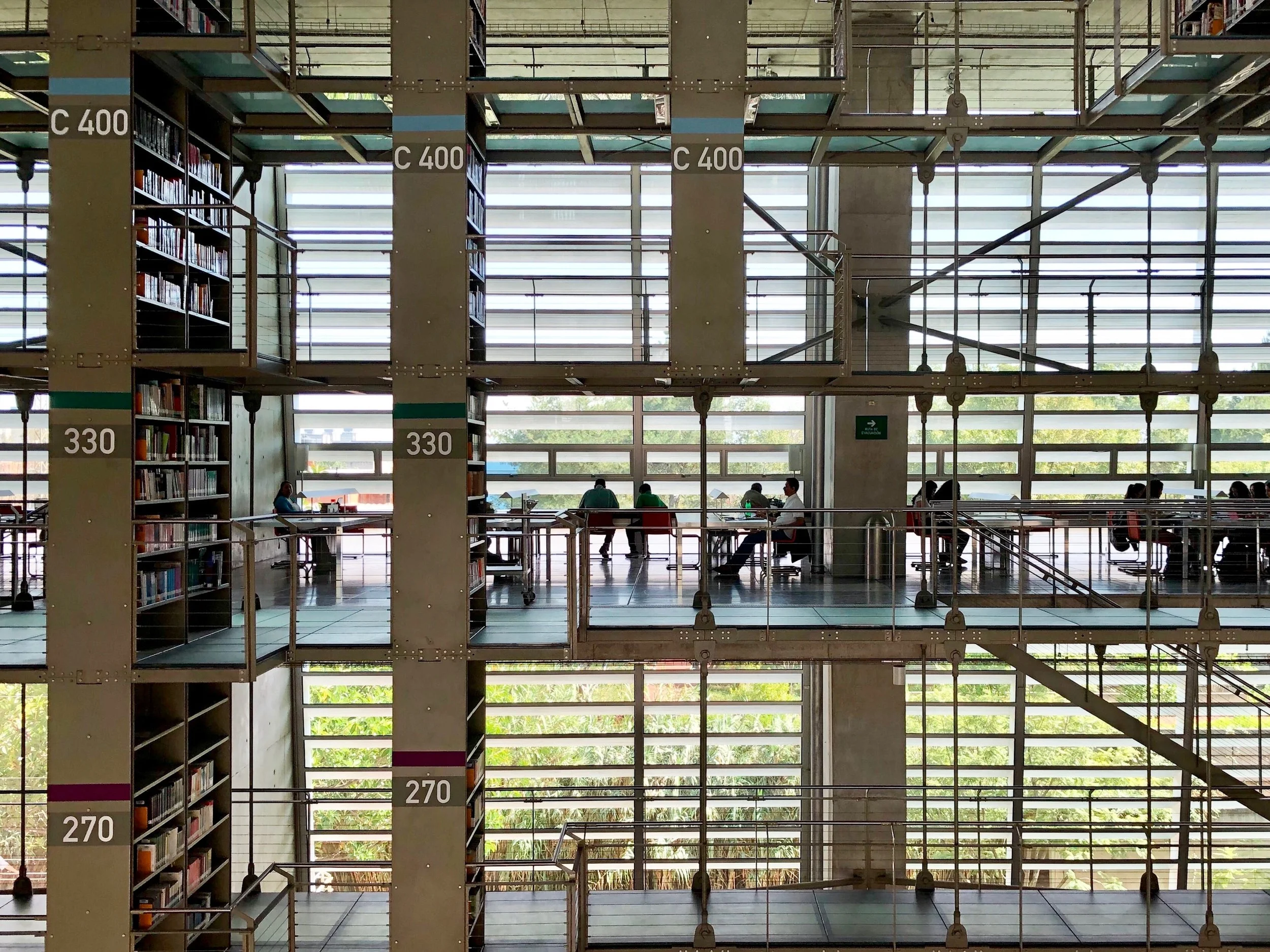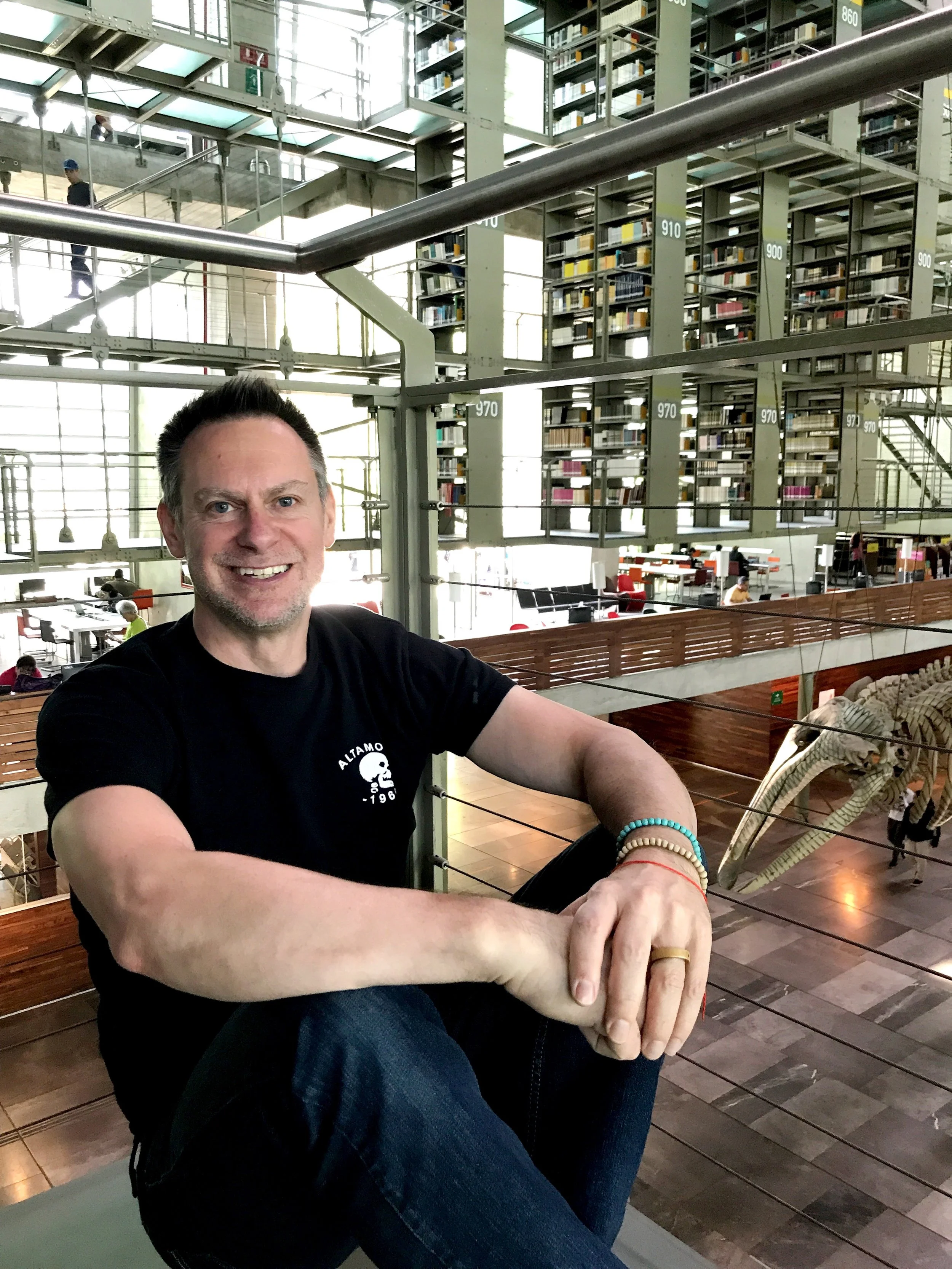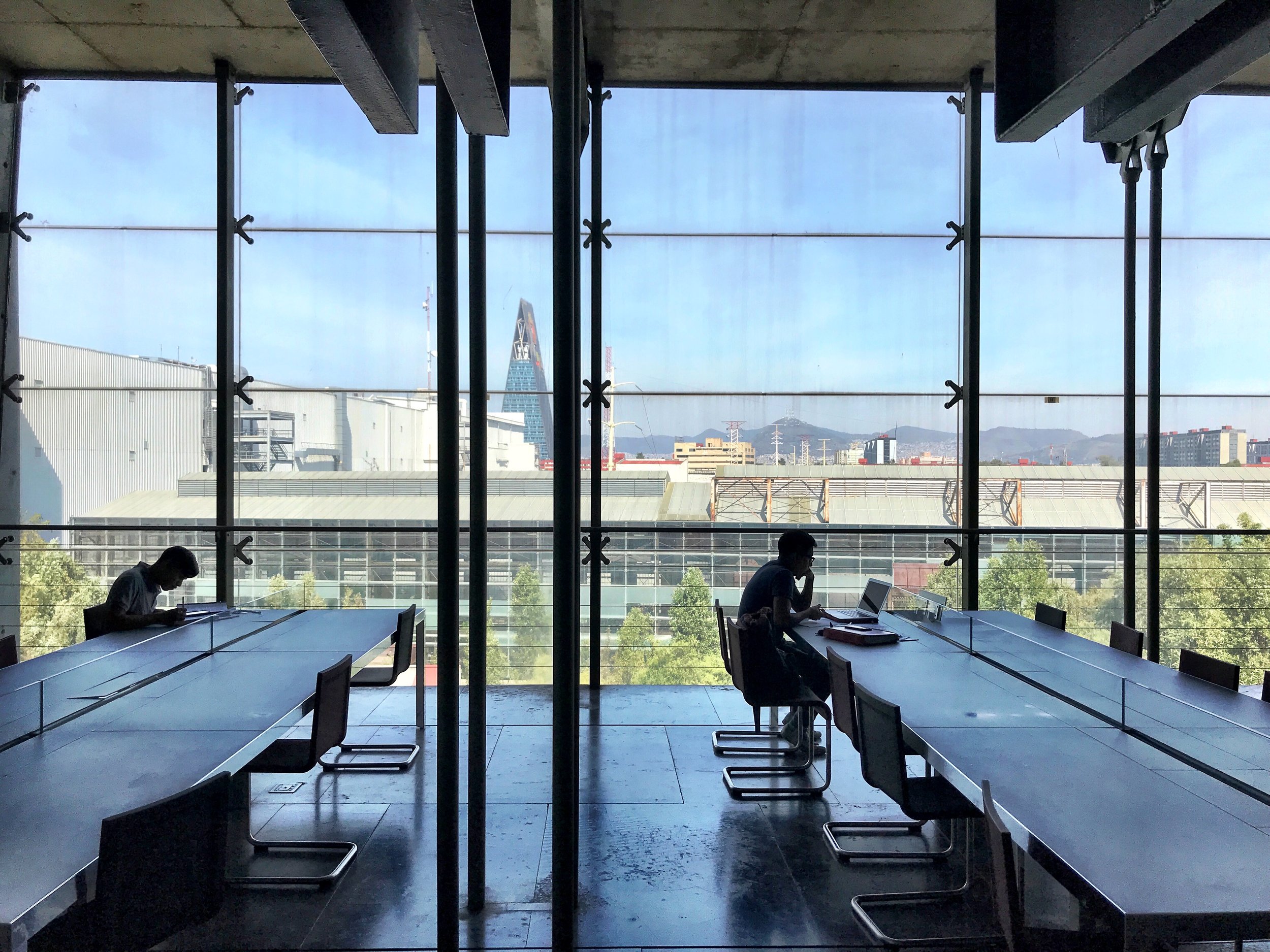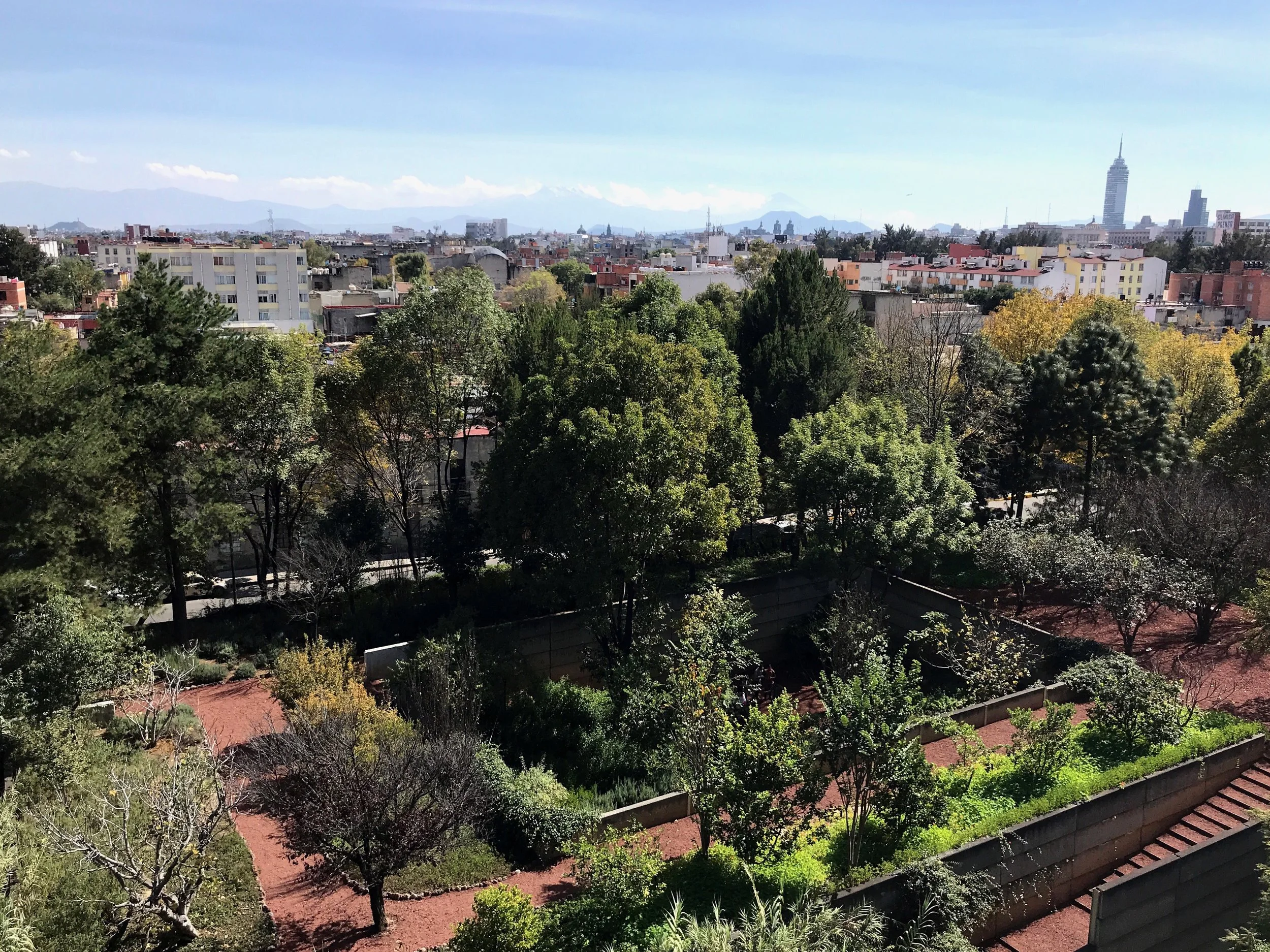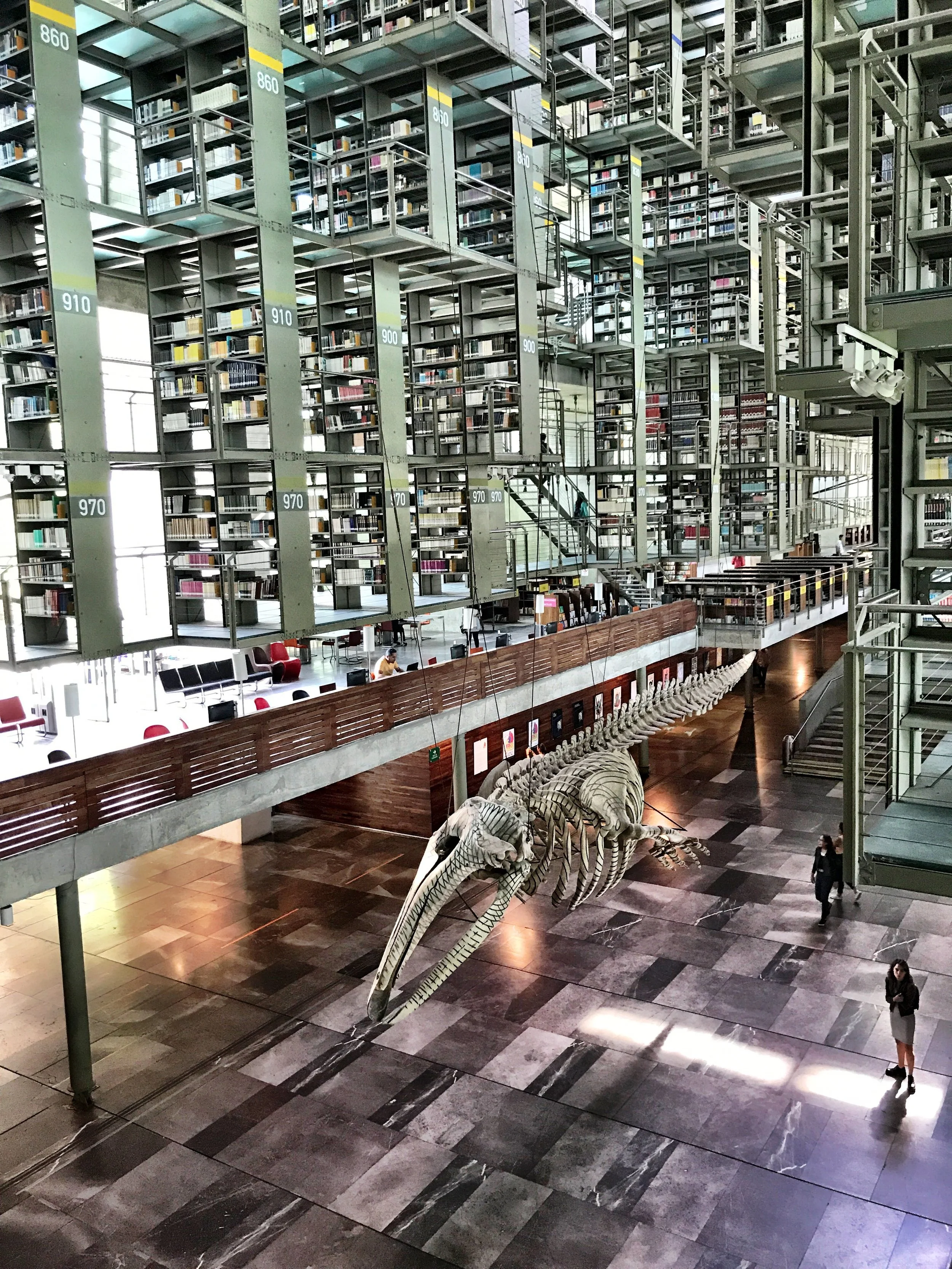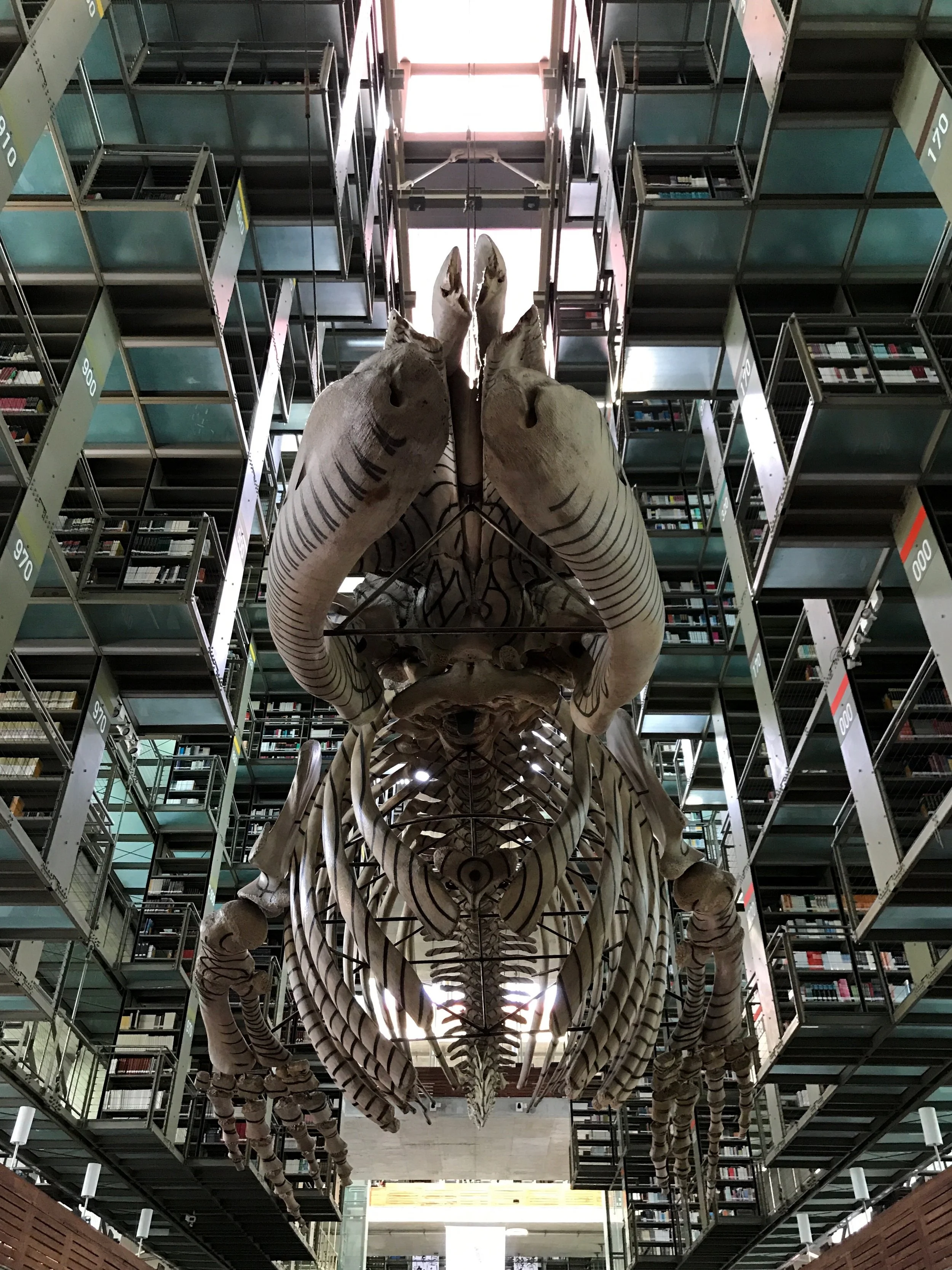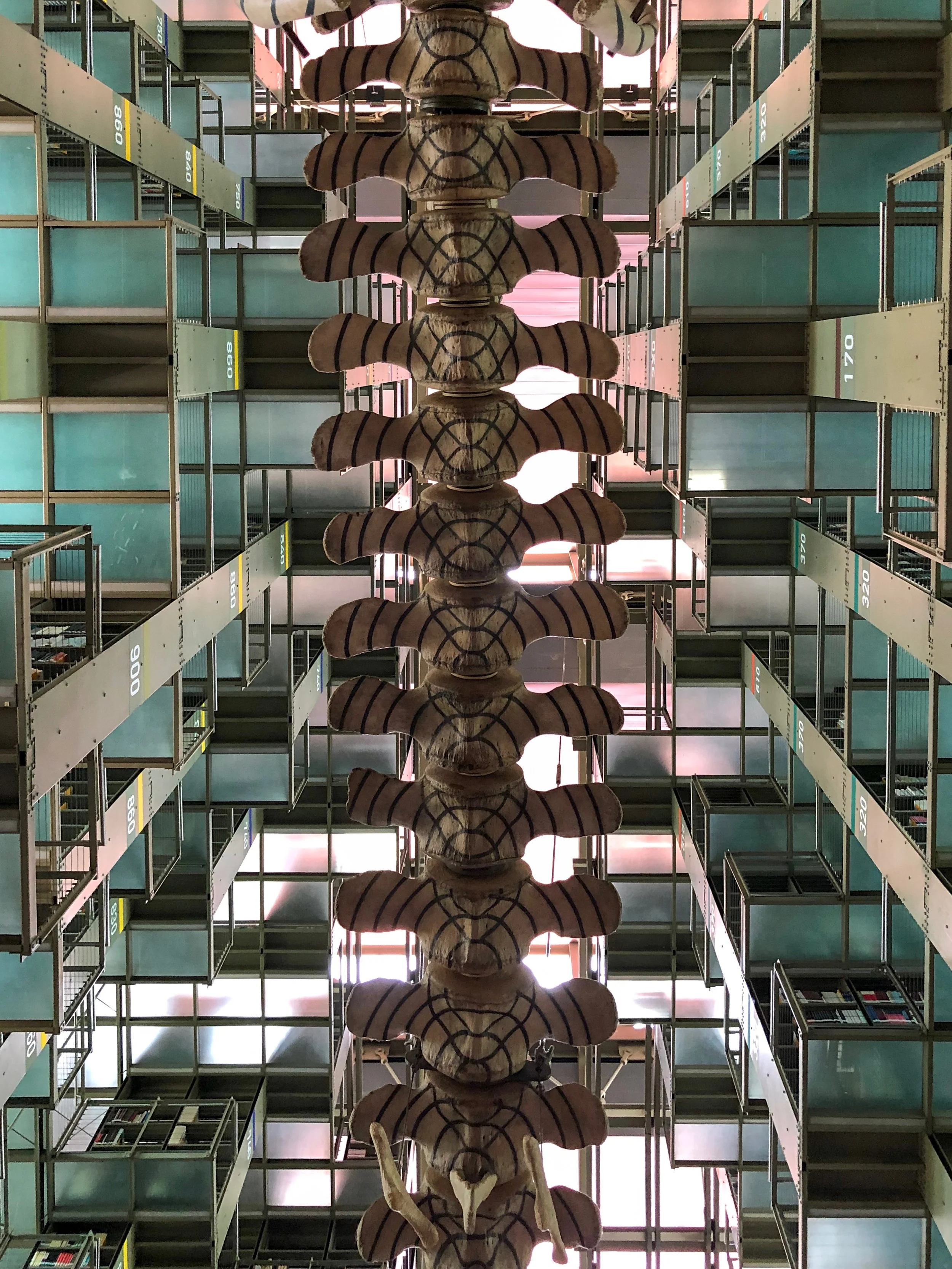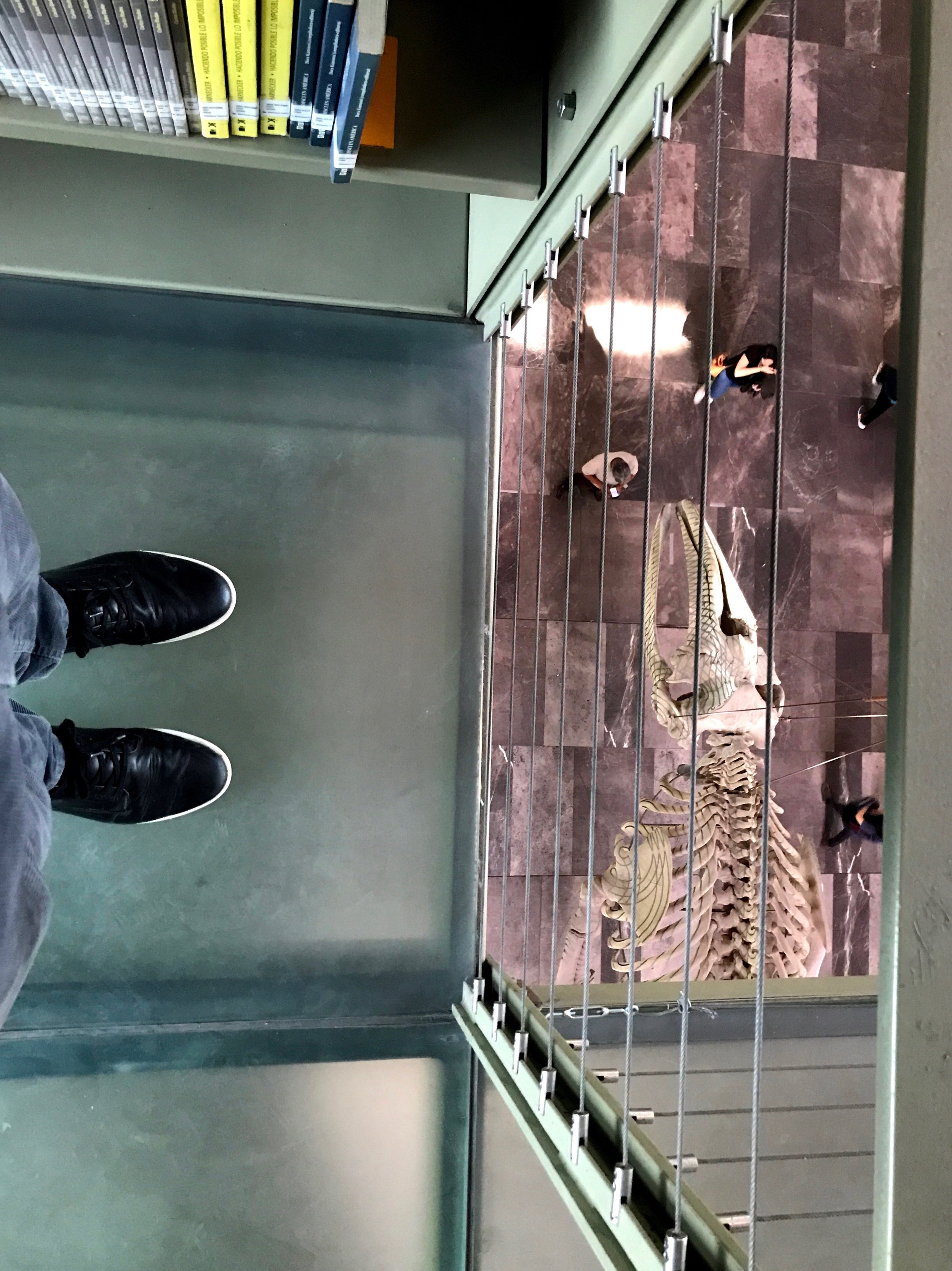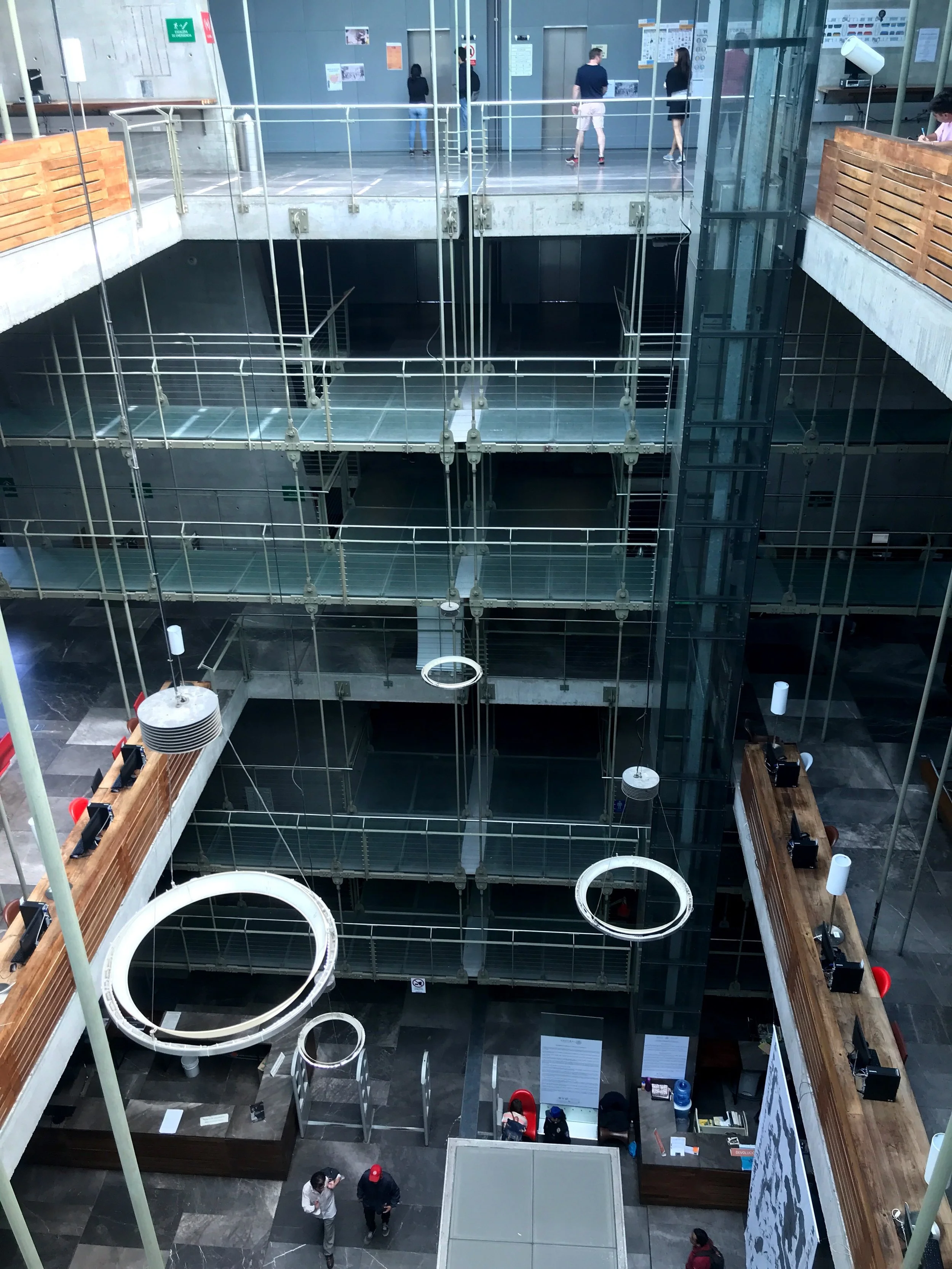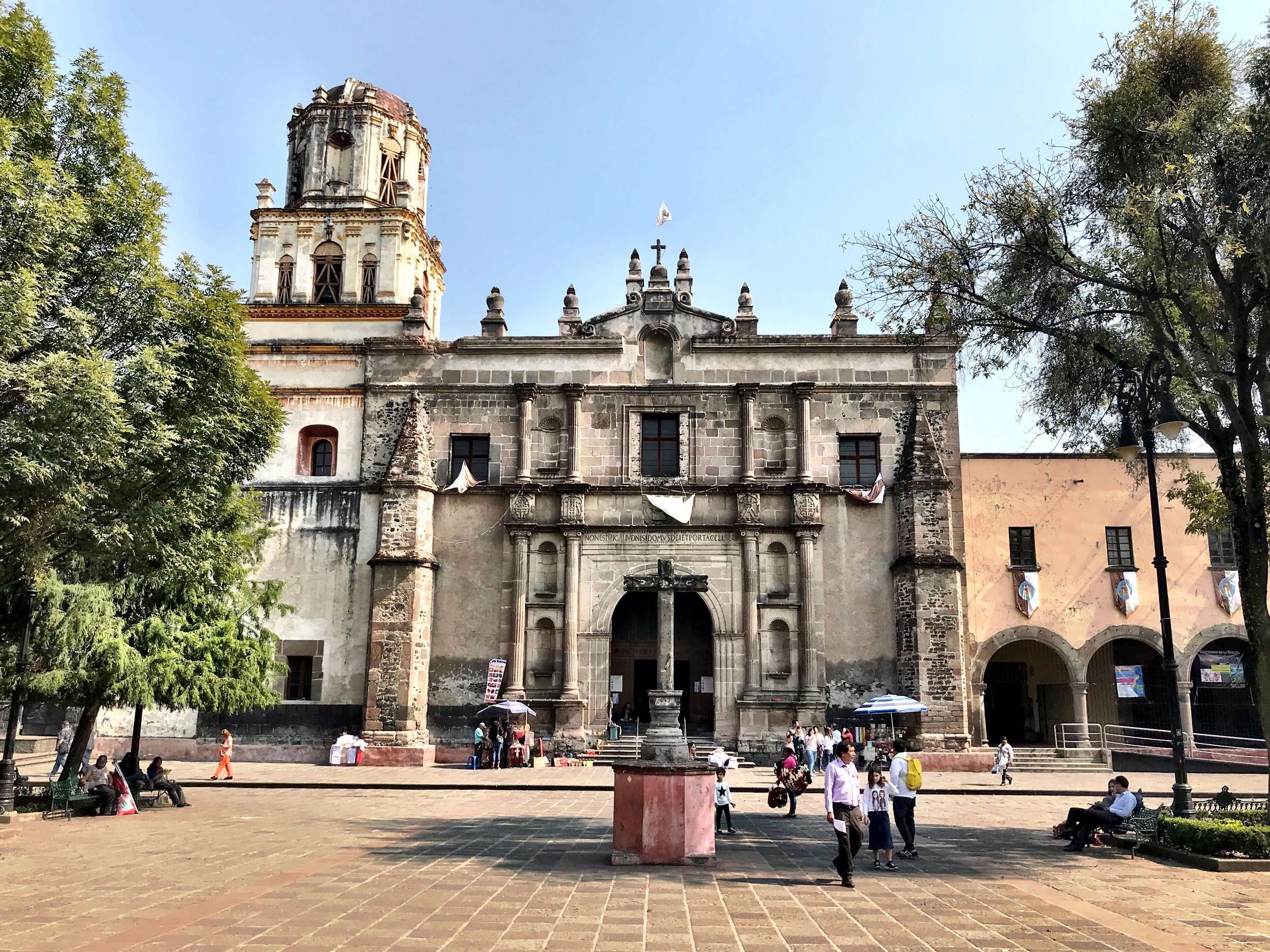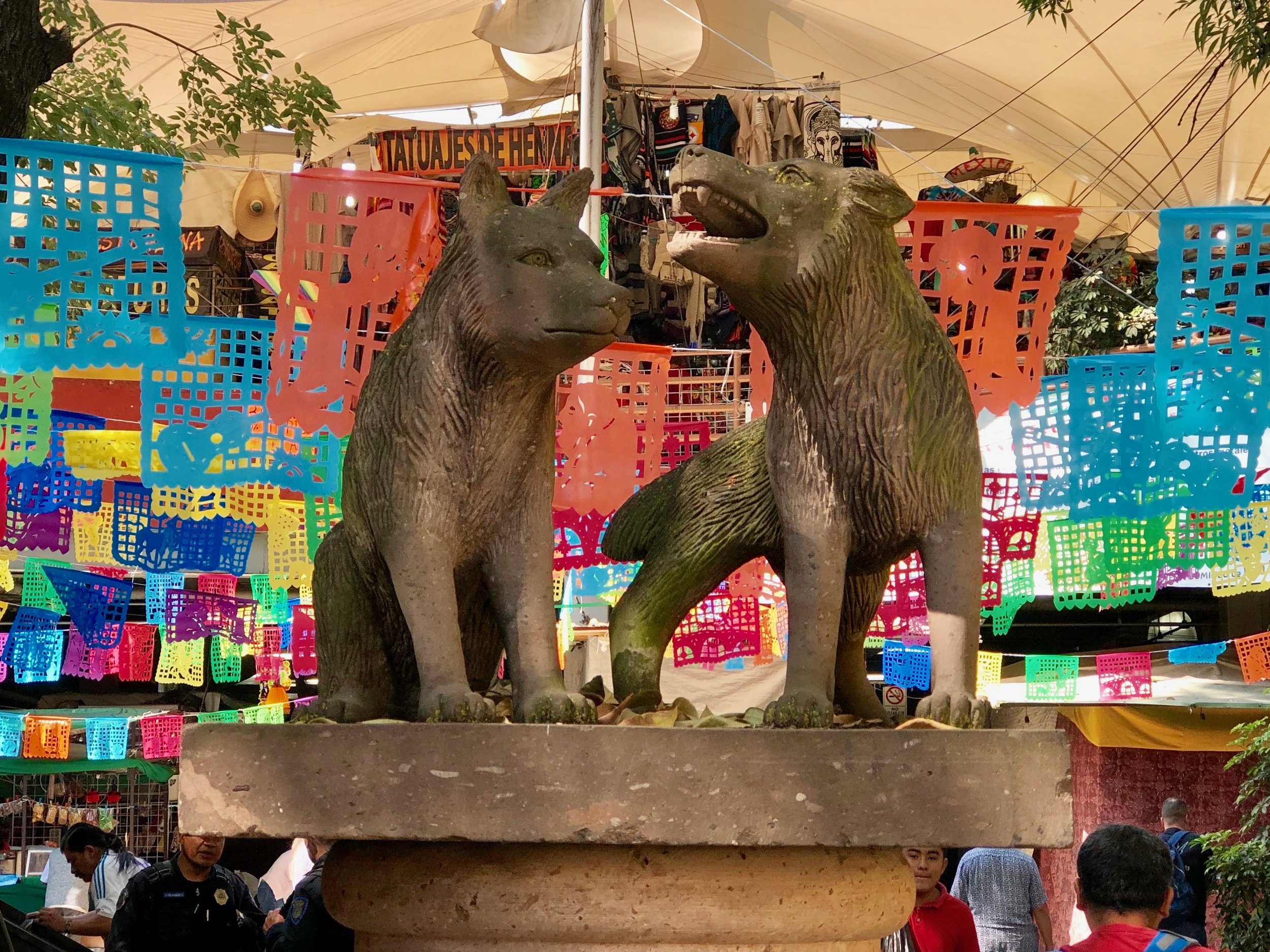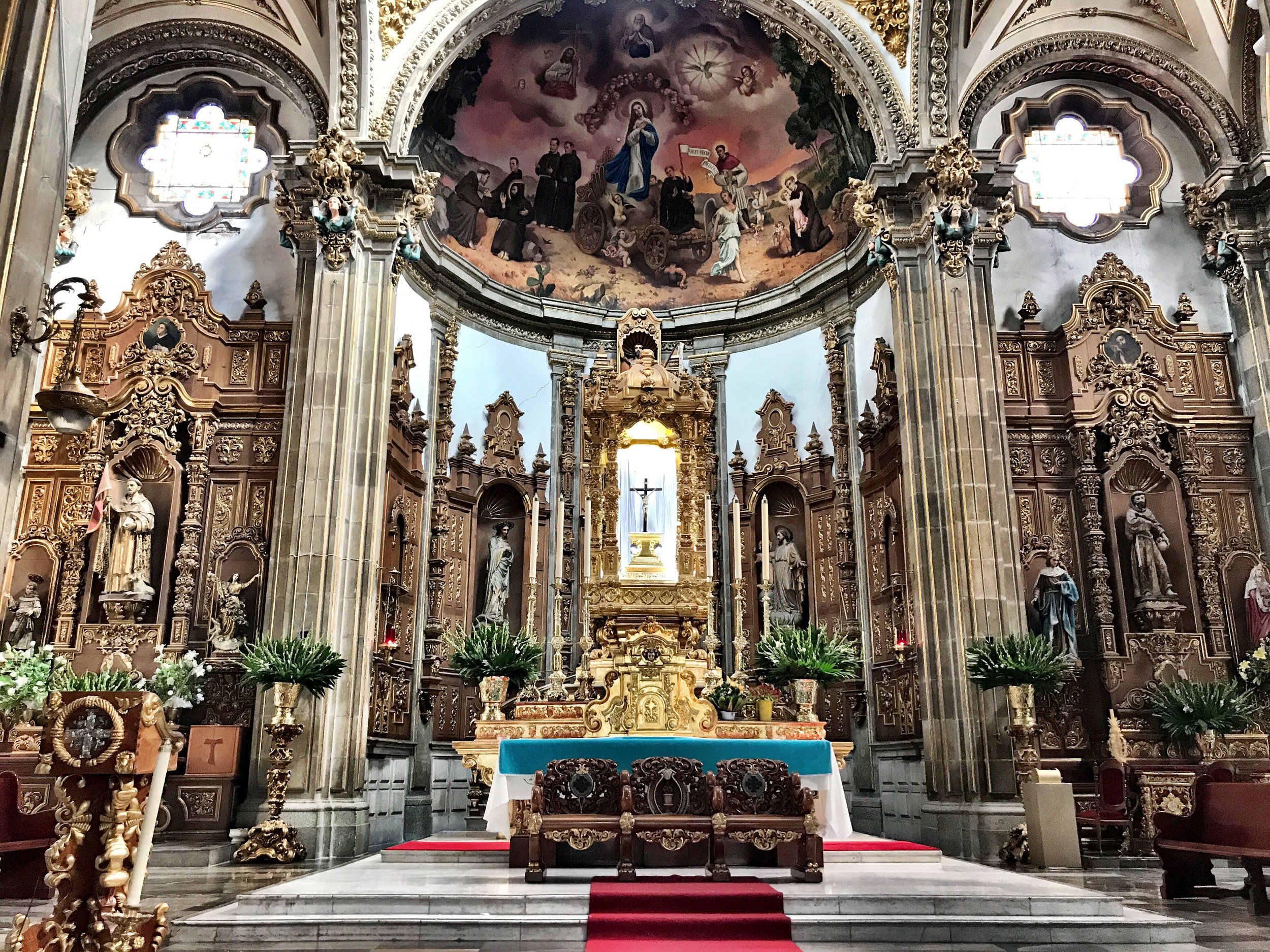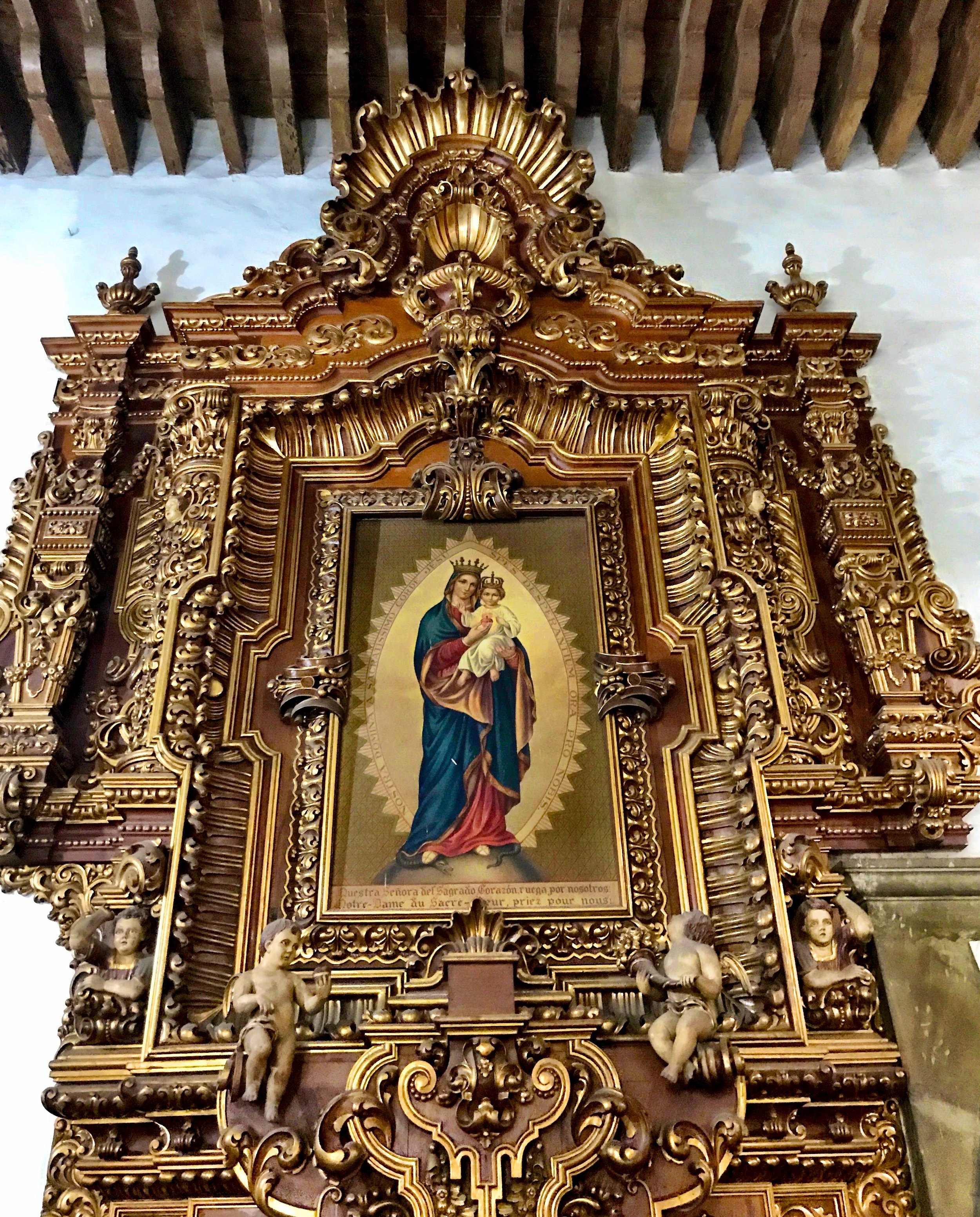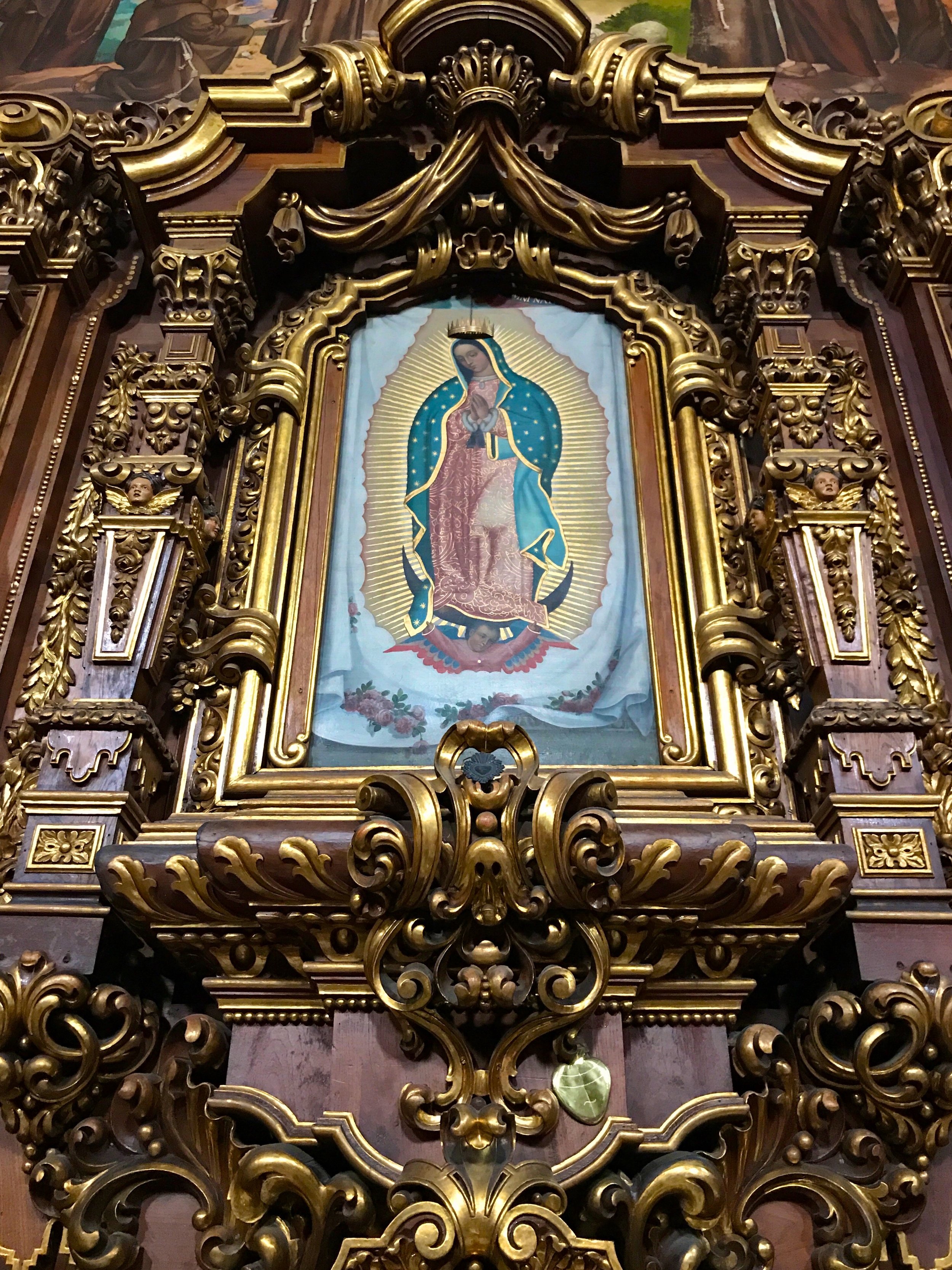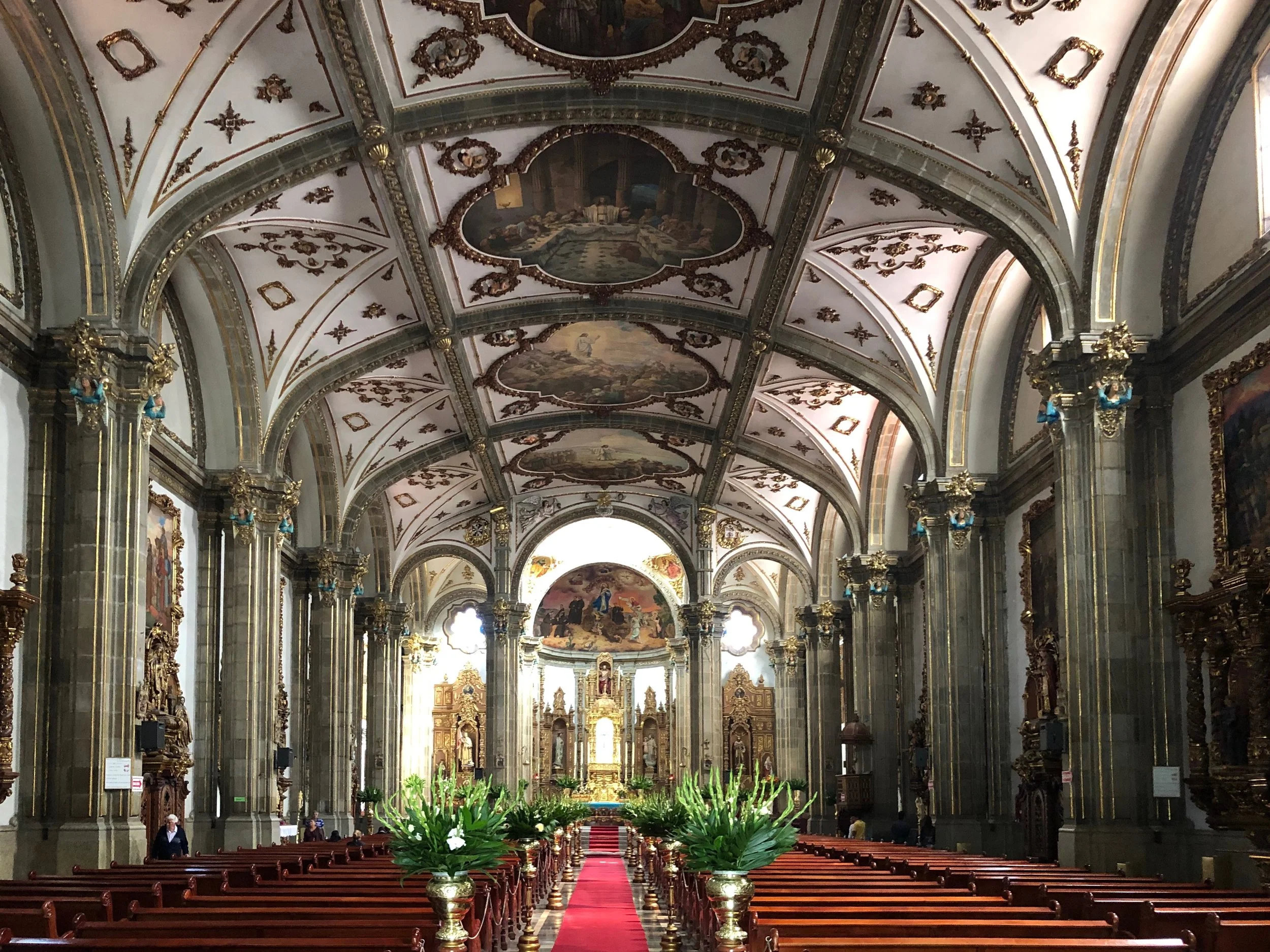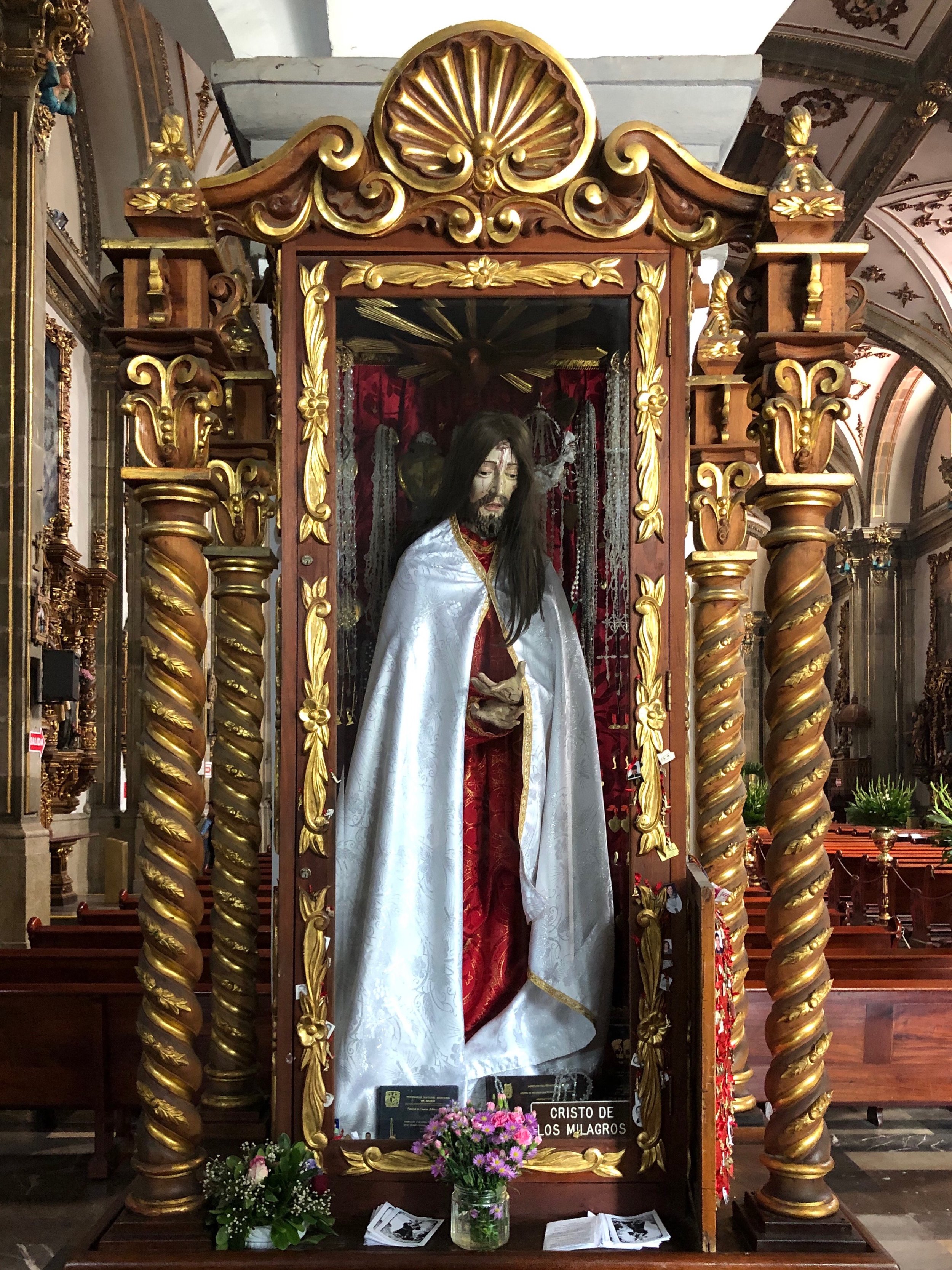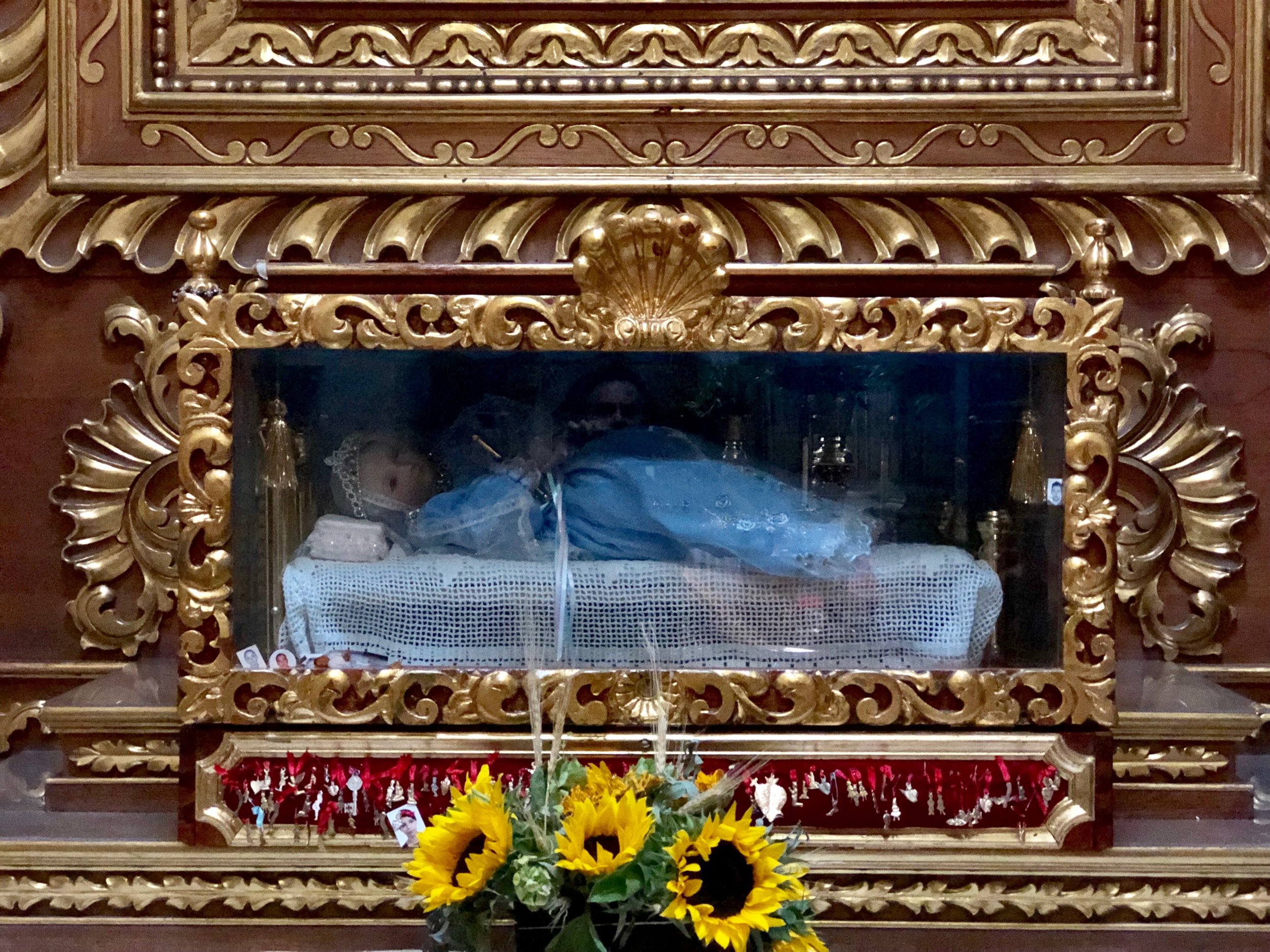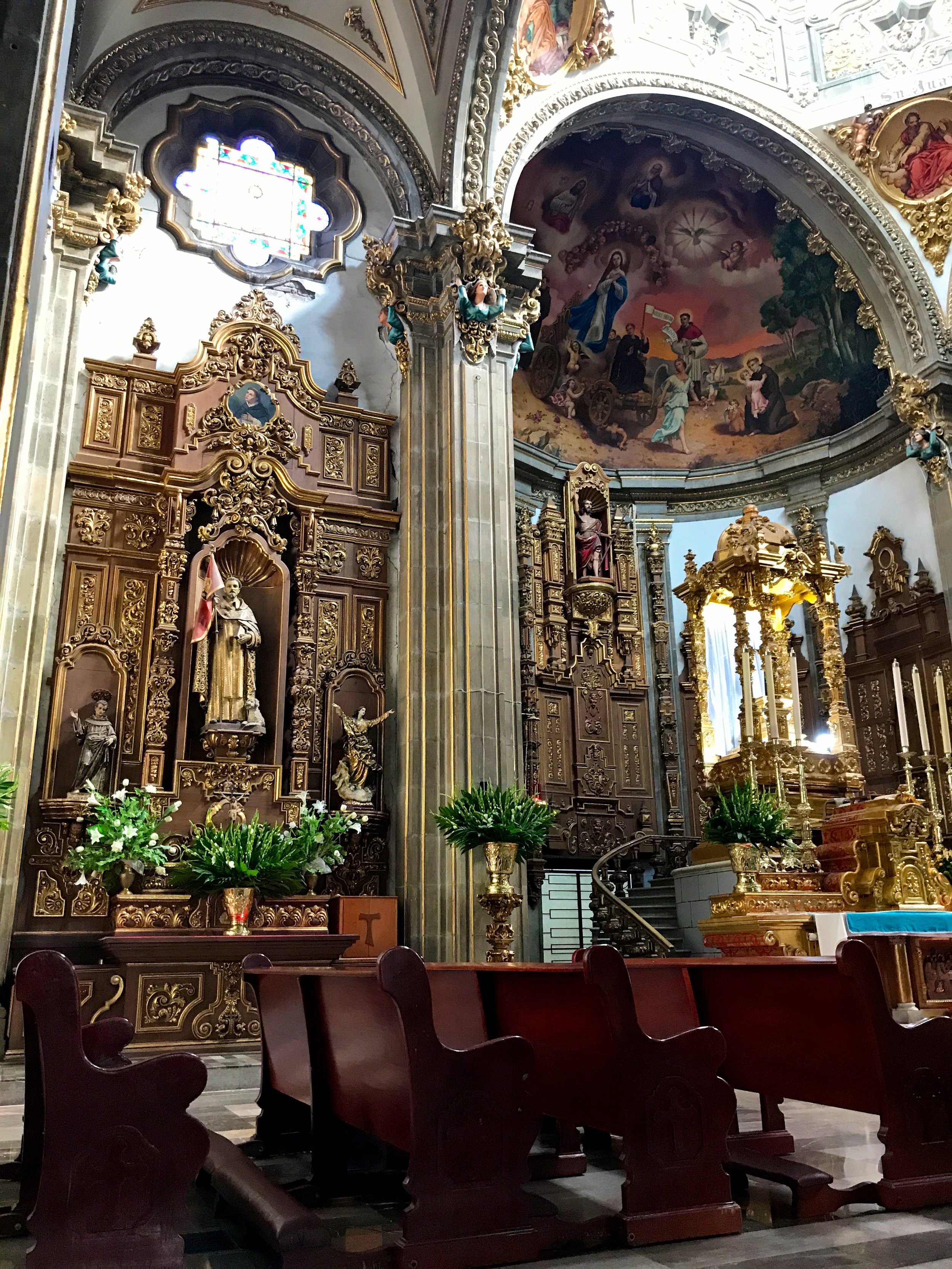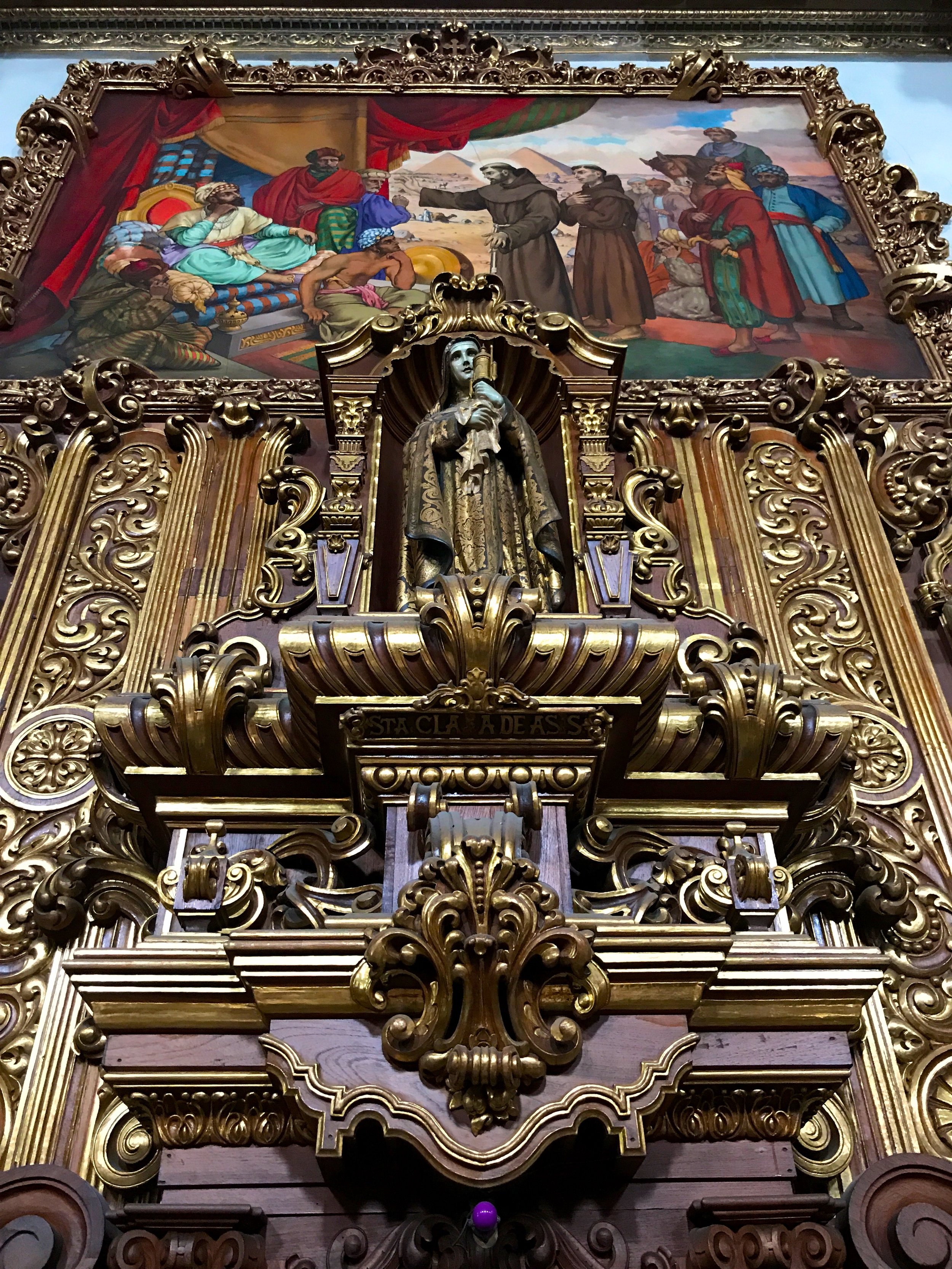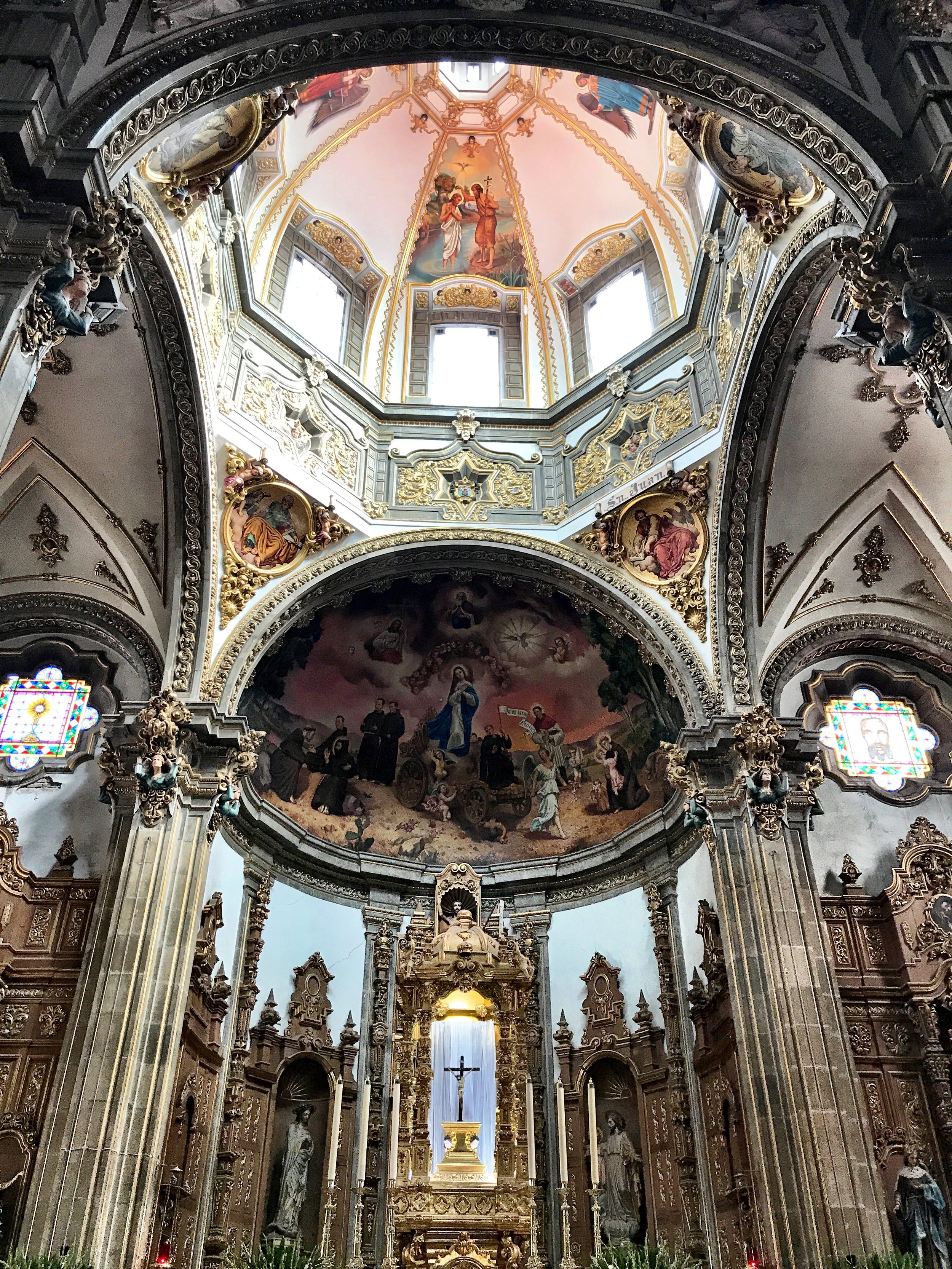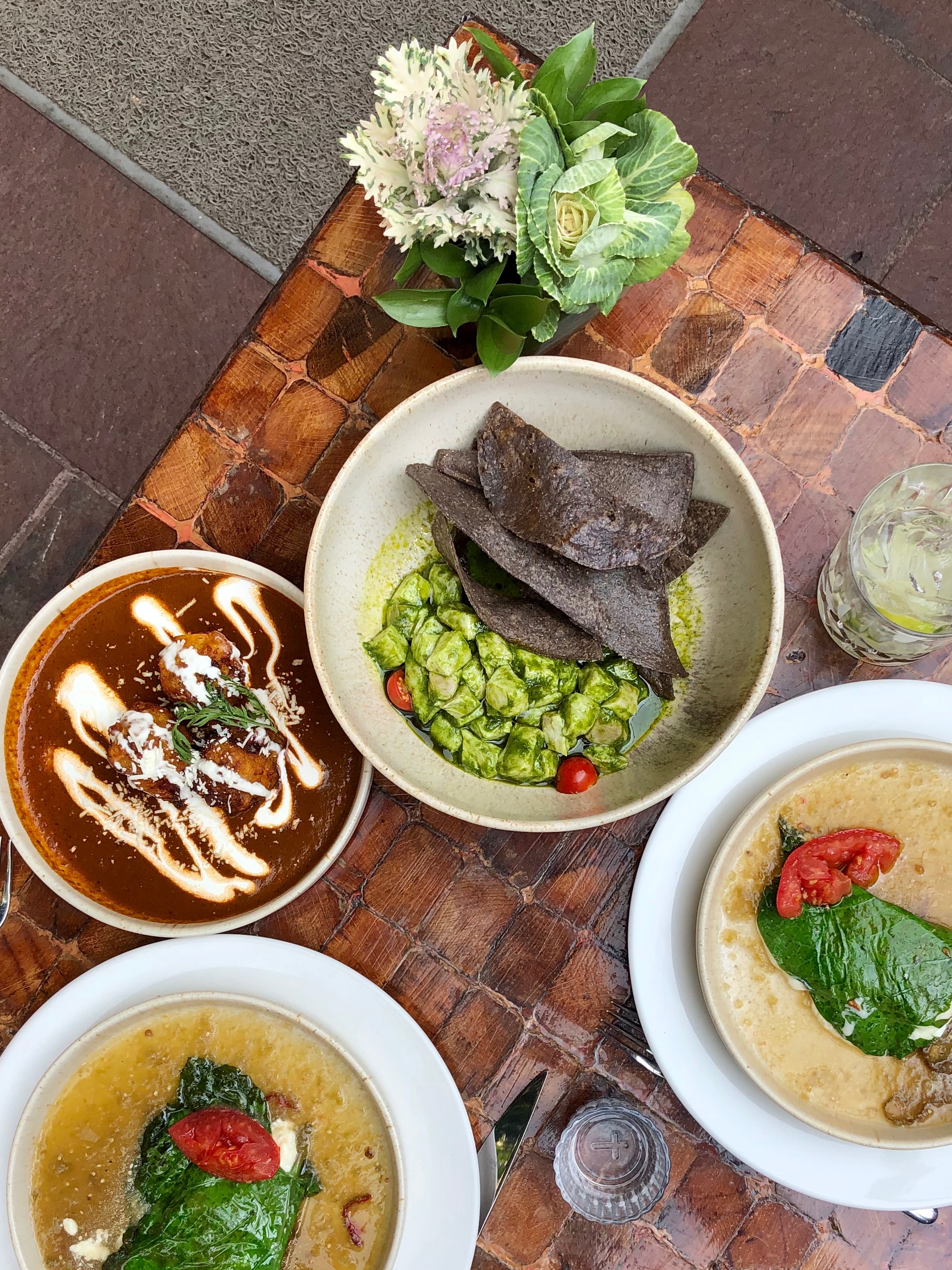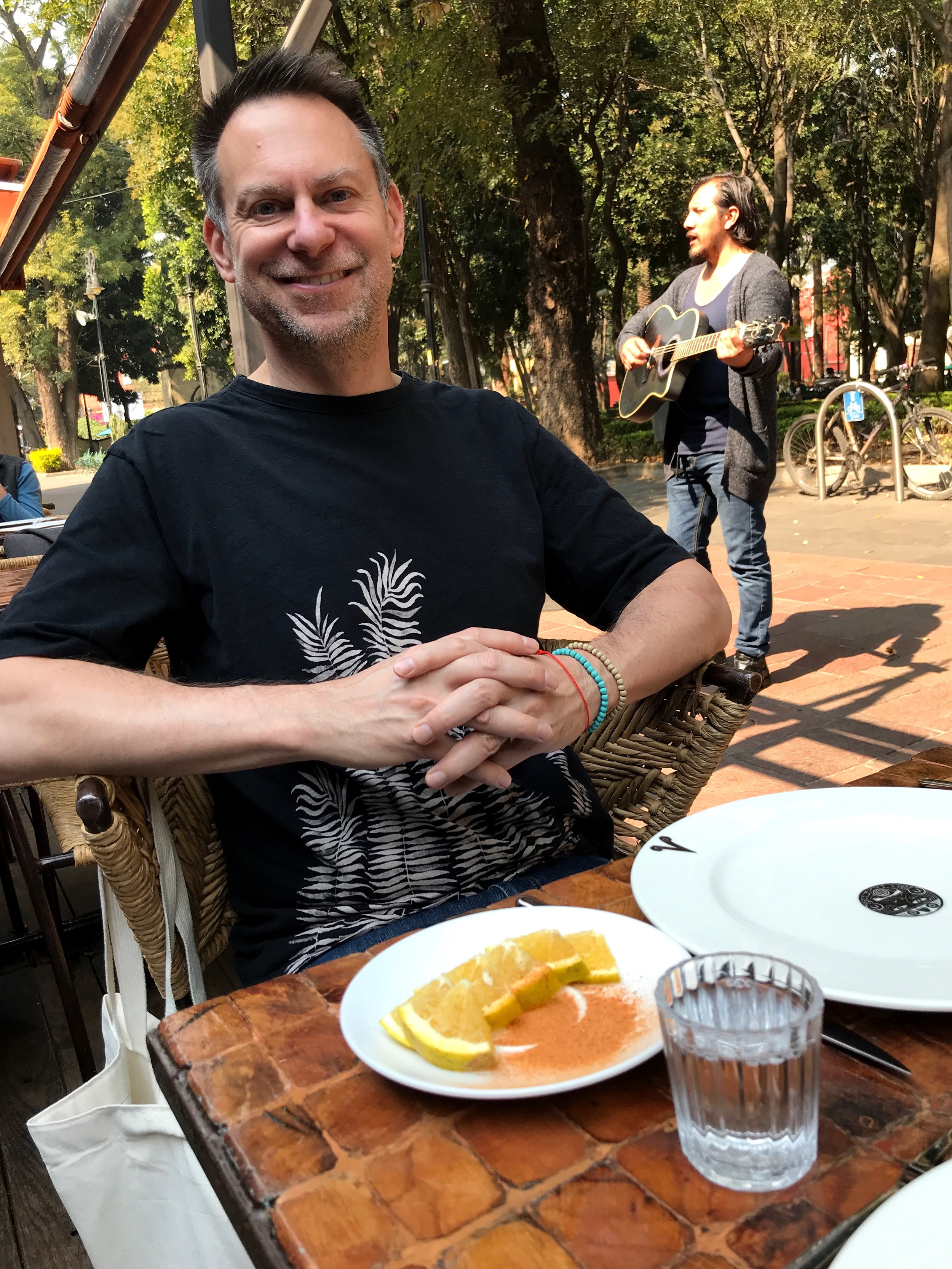El Museo Anahuacalli is unlike any other museum we’ve visited. Explore Rivera’s collection of pre-Hispanic artifacts after a visit to La Casa Azul.
If you’ve seen Frida’s Casa Azul, the Anahuacalli Museum is included in the ticket. Don’t miss it!
My first introduction to Diego Rivera, one of Mexico’s most famous artists, was a seemingly ubiquitous, mass-produced print of Rivera’s painting El Vendedor de Alcatraces (The Calla Lily Vendor). This image can be seen hanging on the wall of many Mexican restaurants in Anytown, USA.
Wally peeks behind a giant agave plant in the plaza in front of the museum.
The subject of the artwork is a peasant woman, head bowed, squatting and overwhelmed by a basket filled with an immense bunch of white calla lilies. Rivera was known for his murals with a message and many featured the great social inequalities of the working class and the indigenous peoples of his country. His larger-than-life paintings were commissioned by the Mexican government, Henry Ford, the Rockefellers and the San Francisco Stock Exchange building, among many others.
“If the light seems gauzy it’s because the panels of the thin vertical windows aren’t made from glass but alabaster, creating an ethereal air of mystery. ”
Frida’s nickname for Diego was Toad-Frog — and with his bulging eyes and belly, it’s not hard to imagine why.
Perhaps what’s more interesting is that his passionate, colorfully attired and unibrowed wife, the eccentric Mexican painter Frida Kahlo is now better known than her erstwhile husband. Her birthplace and childhood home, La Casa Azul (the Blue House), was purchased by and shared with Rivera, who paid off the mortgage and financial debt left by Frida’s father Guillermo — undoubtedly accrued by Frida’s chronic health issues caused by a near-fatal street car accident she suffered when she was 18 years old.
The first floor of the museum is filled with Mexican folk art.
Diego’s Dream Museum
If you’re visiting Kahlo’s home, be sure to hold on to your ticket, as it also includes admission to Rivera’s equally intriguing and less visited Museo Anahuacalli. The museum is located on the southern end of Coyoacán, about a 30-minute Uber ride from La Conchita Plaza, where Wally and I departed from after spending the afternoon exploring the area.
The museum’s name is derived from Cemanahuac, the name used by the Aztecs to refer to their world. It’s Nahuatl, the language of the Aztecs, for “the Place Surrounded by Water” a concept that paid homage to the swampy pre-Hispanic landscape of México.
Diego and Frida purchased the parcel of land in the 1930s on the rocky and then underdeveloped lava deposit of El Pedregal colonia, or neighborhood. While working on a mural in America, Rivera was inspired by the Industrial Revolution, and envisioned a space where he and Kahlo could visit and contemplate their collection of pre-Hispanic artifacts. He spent every cent he could scrape together on acquiring these pieces, amassing over 50,000 in his lifetime. One of the stories told about his obsession involves his second wife, Guadalupe Marín, who ground up one of his prized figurines in a fit of anger and served it to him in a bowl of soup.
Rivera obsessively collected local artifacts.
Some of Rivera’s artifacts might have been acquired on the black market — maybe even this one, which Wally thinks looks like someone giving birth.
Rumor has it that Rivera acquired more than a few of his artifacts on the black market. At the time, there weren’t any laws protecting the provenance of pre-Columbian antiquities, and for this reason, the market boomed amongst nationals and foreigners alike. However Rivera obtained his prized artifacts, it’s undoubtedly an impressive collection that reveals the reverence and curiosity he felt toward the past. An inscription by Rivera at the entrance to the museum reads, “I hereby return to the people what I could rescue from the artistic heritage of their ancestors.”
Jaguars were worshipped as gods by the ancient peoples of Mexico.
Before he died in 1957 at the age of 70, Rivera bequeathed his artifacts and vision for a space to conserve and share the collection with the people of Mexico. The passion project was completed posthumously by his daughter Ruth Rivera, the financial support of his close friend and patroness Dolores Olmedo and architect Juan O’Gorman, using plans left by Rivera.
Visit Dolores Olmedo’s amazing estate and see more works by Frida and Diego
All are welcome at the Museo Anahuacalli.
Like Entering a Temple
The imposing exterior of Anahuacalli is based upon a teocalli, a Mesoamerican temple standing on a truncated pyramid, rising dramatically from the edge of a broad, open plaza. Anahuacalli is sheathed entirely in black basalt, the igneous rock produced by the eruption of nearby Xitle, a volcano that destroyed the pre-Hispanic settlement of Cuicuilco that preceded Mexico City.
A sign at the entry kiosk states:
En este establecimiento mercantil no se discrimina el ingreso a ninguna persona por motivos de raza, religión, orientación sexual o socioeconómica ni por ningún otro motivo.
This establishment does not discriminate against entry to any person on the basis of race, religion, sexual orientation, socioeconomic status or for any other reason.
Once inside, Wally and I immediately noticed a change in light and temperature; it was dim and cool, like the interior of a tomb. If the light seems gauzy it’s because the panels of the thin vertical windows aren’t made from glass but alabaster, creating an ethereal air of mystery.
Gorgeous papel picado, or cut paper decorations, hang above artifacts placed in niches.
There’s a large ofrenda, an altar to Rivera.
One of our favorite displays on the ground floor was the impressive and brightly colored ofrenda, a traditional and allegorical offering dedicated to the deceased Rivera. Adorning the ofrenda are life-size papier-mâché folk art sculptures are known as alebrijes—the word these fantastical creatures were repeatedly chanting in vivid fever dream that the artisan Pedro Linares had.
Ofrendas often have skeleton figures and food and other items the deceased enjoyed in life.
Whimsical papier-mâché folk art creatures called alebrijes came to their creator in a feverish dream.
The exuberant colors of the figures and papel picado, cut tissue paper banners, are all the more striking against the volcanic stone.
Admire the cut tissue paper flags before venturing into the depths of the temple-like museum.
Narrow alabaster windows give the museum an otherworldly quality.
From the Underworld to the Heavens
A stairwell symbolizing the entrance to the Mayan underworld of Xibalba descends past bouquets of dried marigolds. These flowers guide spirits to their altars using their vibrant colors and pungent scent.
Bright orange marigolds help guide the way for spirits to visit this world.
Duke looks up at the dried marigolds that fill this stairwell.
The Anahuacalli’s three levels are bisected by dramatic stone staircases leading to galleries with vitrines and niches filled with Rivera’s personal collection of more than 2,000 Zapotec, Maya, Aztec, Olmec and Toltec idols and artifacts ranging from utilitarian to religious objects.
Rivera collected about 50,000 pre-Hispanic artifacts.
One of Rivera’s wives supposedly ground up one of his idols and served it to him in soup.
Make sure to look up at the ceilings, which showcase mosaics based on Rivera’s designs and communist inclinations. Most were inspired by the mythological creatures of the Mesoamerican canon, with a hammer and sickle thrown in for good measure. One mosaic depicts a toad — Kahlo’s nickname for Rivera was El Sapo-rana, or Toad-Frog — fitting, as he was a large, portly man with bulging eyes. Incidentally, his birthplace, Guanajuato, loosely translates to the Place of Frogs.
Look up! Most of the ceilings have murals made from different colored rocks.
A woman gathers fruit in one ceiling mural.
Rivera wasn’t subtle about his fondness for Communism.
The light-filled second floor of the museum was originally envisioned as Rivera’s art studio and contains a number of monumental charcoal sketches and studies for several of his murals. One in particular, El Hombre en el Cruce de los Caminos (Man at the Crossroads), is a fresco originally commissioned in 1932 for the Rockefeller Center in New York, but later destroyed and unceremoniously chiseled off the wall for its unflattering portrait of Rockefeller and depiction of communism.
On the second floor, you can see studies for Rivera’s murals.
Another large-scale piece, Pesadilla de Guerra, Sueño de Paz (Nightmare of War, Dream of Peace), was a portable mural painted in 1952 for the Twenty Centuries of Mexican Art exhibition that traveled to various European cities. Its creator sold the work, which was censored by the Mexican authorities, to China. Nobody knows for certain where it is today.
Also among Rivera’s artworks is a childhood drawing of a choo-choo train.
Although the Anahuacalli is filled with niches showcasing Rivera’s beloved artifacts, it houses only a fraction of his collection.
Some galleries host temporary exhibits.
It’s also a space that hosts temporary exhibits and site-specific projects. While we were there in the fall of 2018, an exhibit titled Machama featured Adelia Sayeg’s sculptural ceramics.
Dominating the second floor wall is an early rendering of Rivera’s famous Pesadilla de Guerra, Sueño de Paz mural.
The circular piece in the center of the room was filled with small ceramic pieces by Adelia Sayeg.
The museum’s interior embodies some of the same tenets as American architect Frank Lloyd Wright — specifically the concept of compression and release, with narrow stairwells and passageways opening abruptly into larger spaces. Rivera did meet with Wright in 1952 and consulted with him about the structure.
Here comes the sun: Keep winding your way up through the museum to end up on the rooftop.
You’ll be temporarily blinded as you step out of the dark confines of the museum onto the rooftop terrace. Like Duke, you can admire the view of CDMX.
Wally takes a break from a long day exploring the neighborhood of Coyoacán.
You wind your way up, floor by floor, until you step out onto the rooftop terrace, open to the sky, boasting panoramic views of the city. The sun bathed the outlying area in golden light. It was a perfect end to an incredible day. –Duke
Wally and Duke are all smiles at this truly one-of-a-kind museum, which they can’t recommend enough.
Anahuacalli Museum
Museo 150
San Pablo Tepetlapa
Coyoacán
04620 Ciudad de México
CDMX
Mexico



























